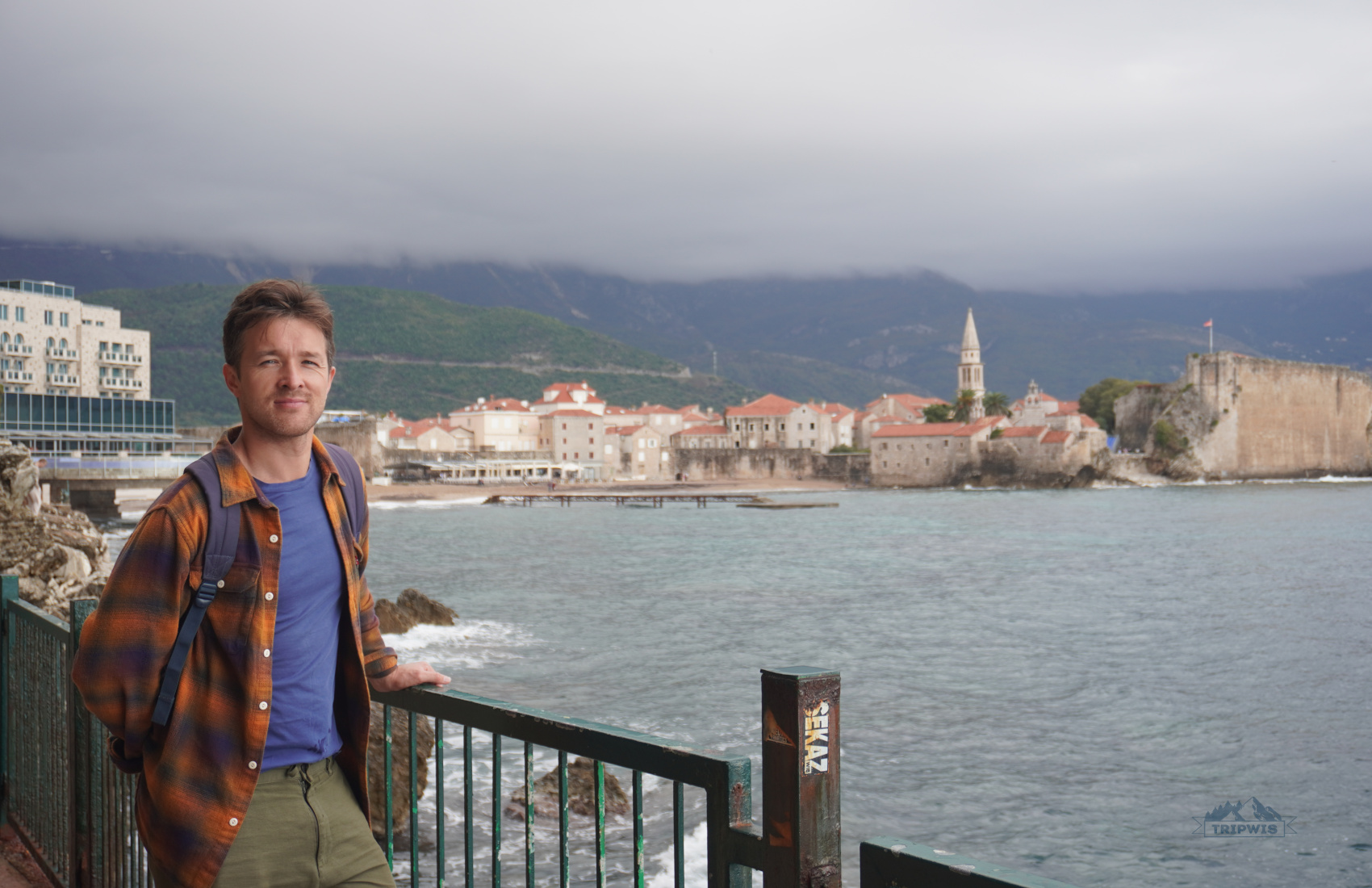
The most outrageous claim I’ve ever heard about Budva is that there aren’t many exciting things to do and sights to see here. Sure, it’s not the wildest, the liveliest, and certainly not the craziest of all places to visit in the world, but saying that there’s nothing to do in Budva is just plain wrong.
We’ve been living here permanently for 1,5 years now, and we can assure you that there’s ALWAYS a whole list of fun antics for you to take part in when in Budva. The favorable arrangement of local landmarks and the overall pleasurable atmosphere are even more apparent when you visit the town for the first time.
Article contents
- My take on what to see and do in Budva:
● Every inch of Budva’s Old Town
● The Riviera
● All Budva’s beaches
● As many restaurants as possible
● Best coffeeshops
● Local nightlife
● Sport activities
● Best hikes
● Day trips from Budva - A few more things you need to know before visiting Budva
- Final thoughts
Speaking from experience — what to do in Budva?
It’s true, we absolutely cannot be impartial when it comes to describing Budva’s most iconic locations: We love them so much that the emotions seep through the sentences. Whether it is another ancient ruin or a natural landmark, Budva has a special place in our hearts always.
We’ve tried to keep it short and simple (after all, the town isn’t that big, geographically speaking), but couldn’t resist finding at least fifty (!) of unmissable spots and activities for you to explore when in Budva.
So, speaking from personal experience, here’s what your ultimate checklist of best things to do in Budva can look like:
Explore every inch of Budva’s Old Town
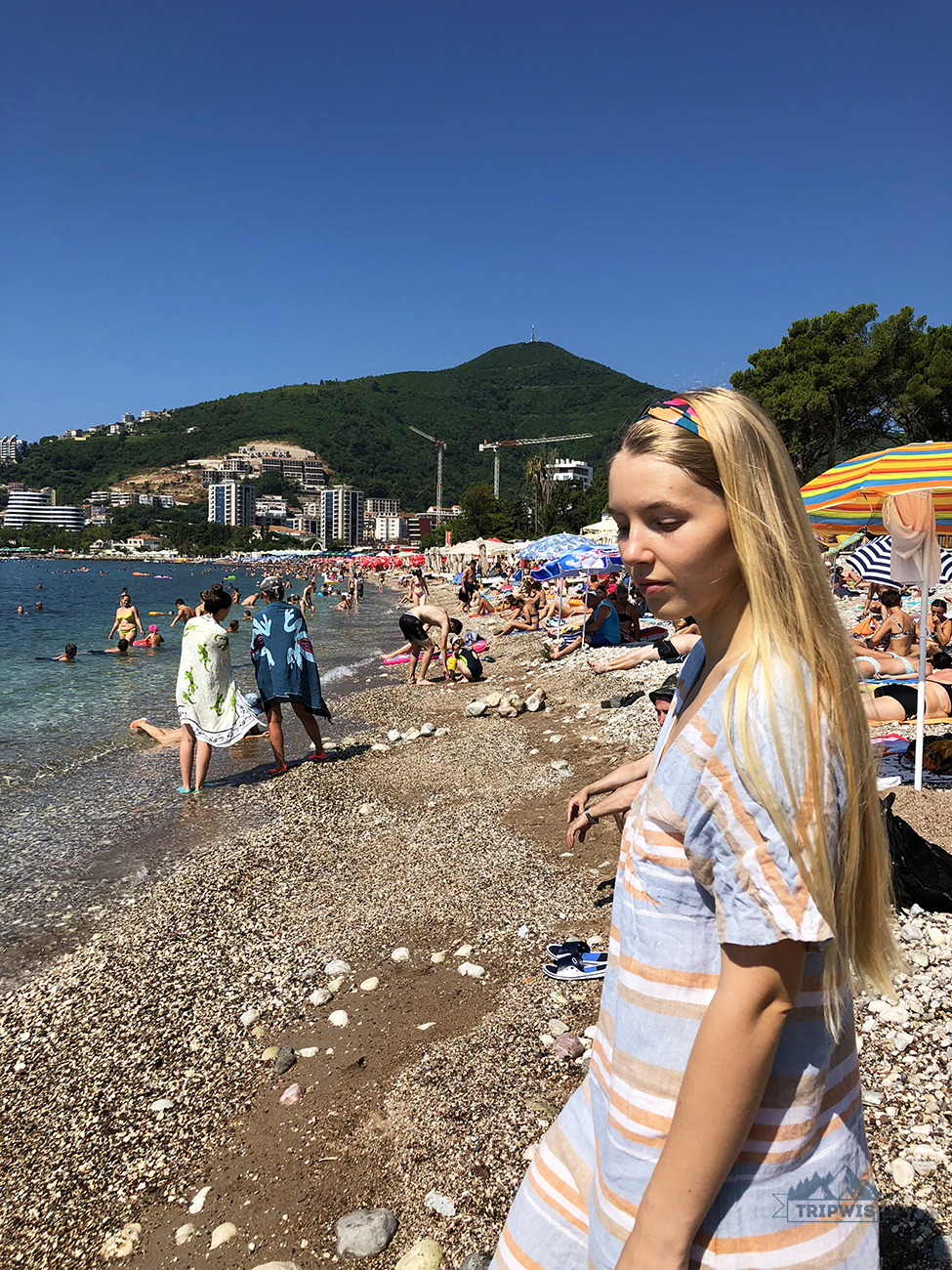 |
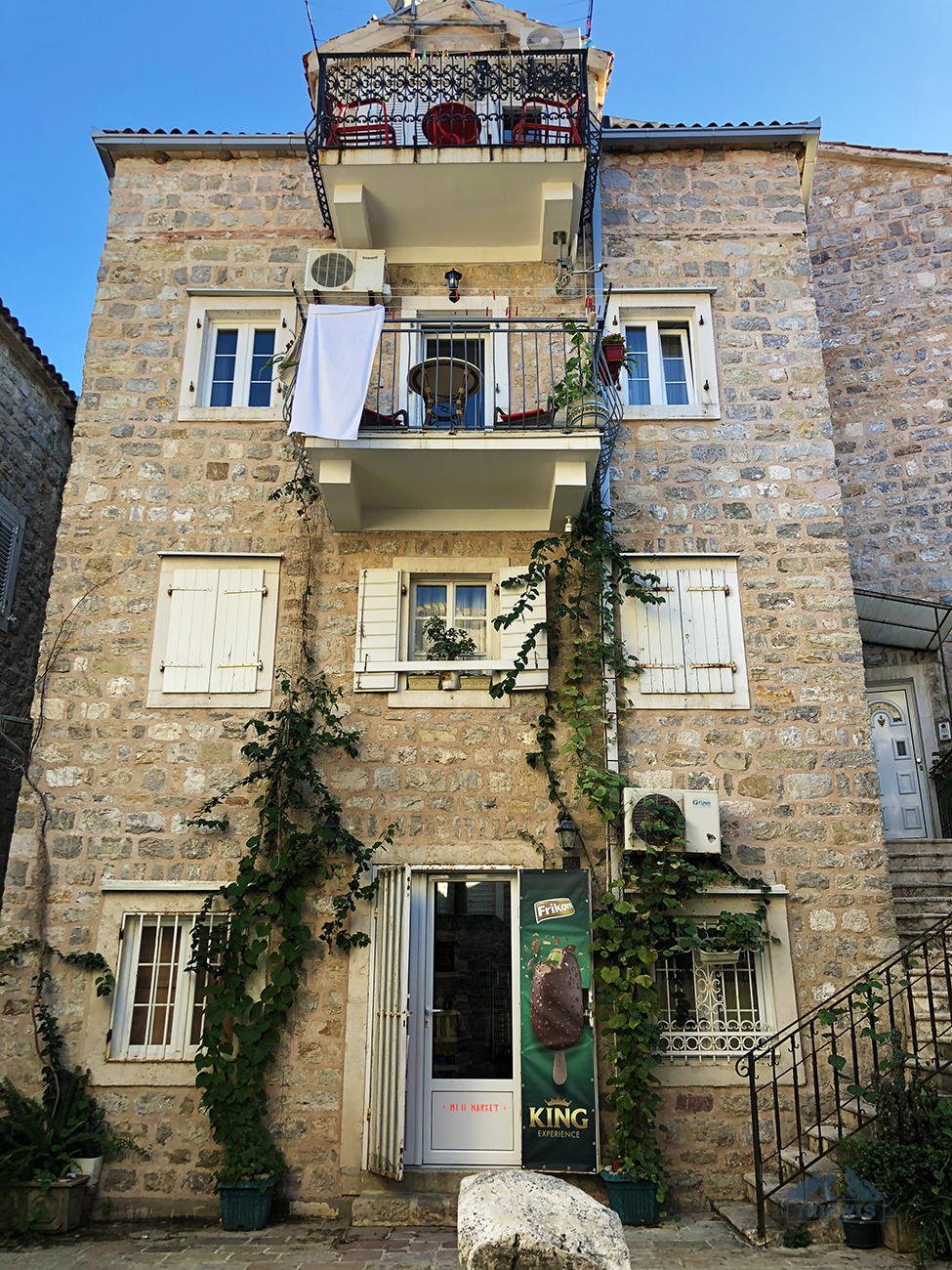 |
We’ll start with the Old Town (Stari Grad). It’s Budva’s most touristy area, but the majority of online sources don’t do it justice. You can do more than just “dreamily get lost” in it while doing a “slow stride” through the few main cobbled streets, and you can leave with more than a few mandatory and slightly boring pictures.
Marvel at Adriatic Coast’s oldest fortification
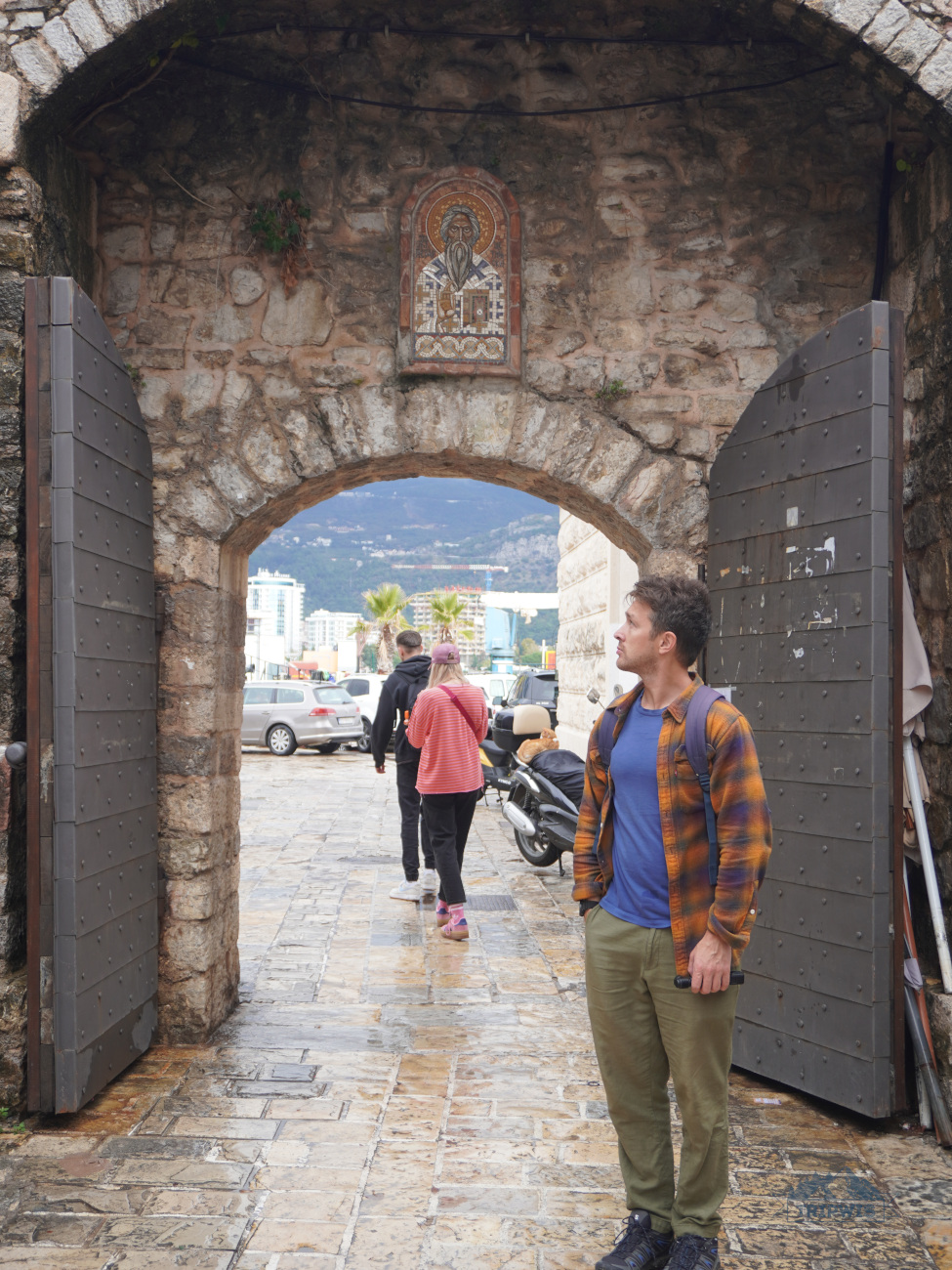 |
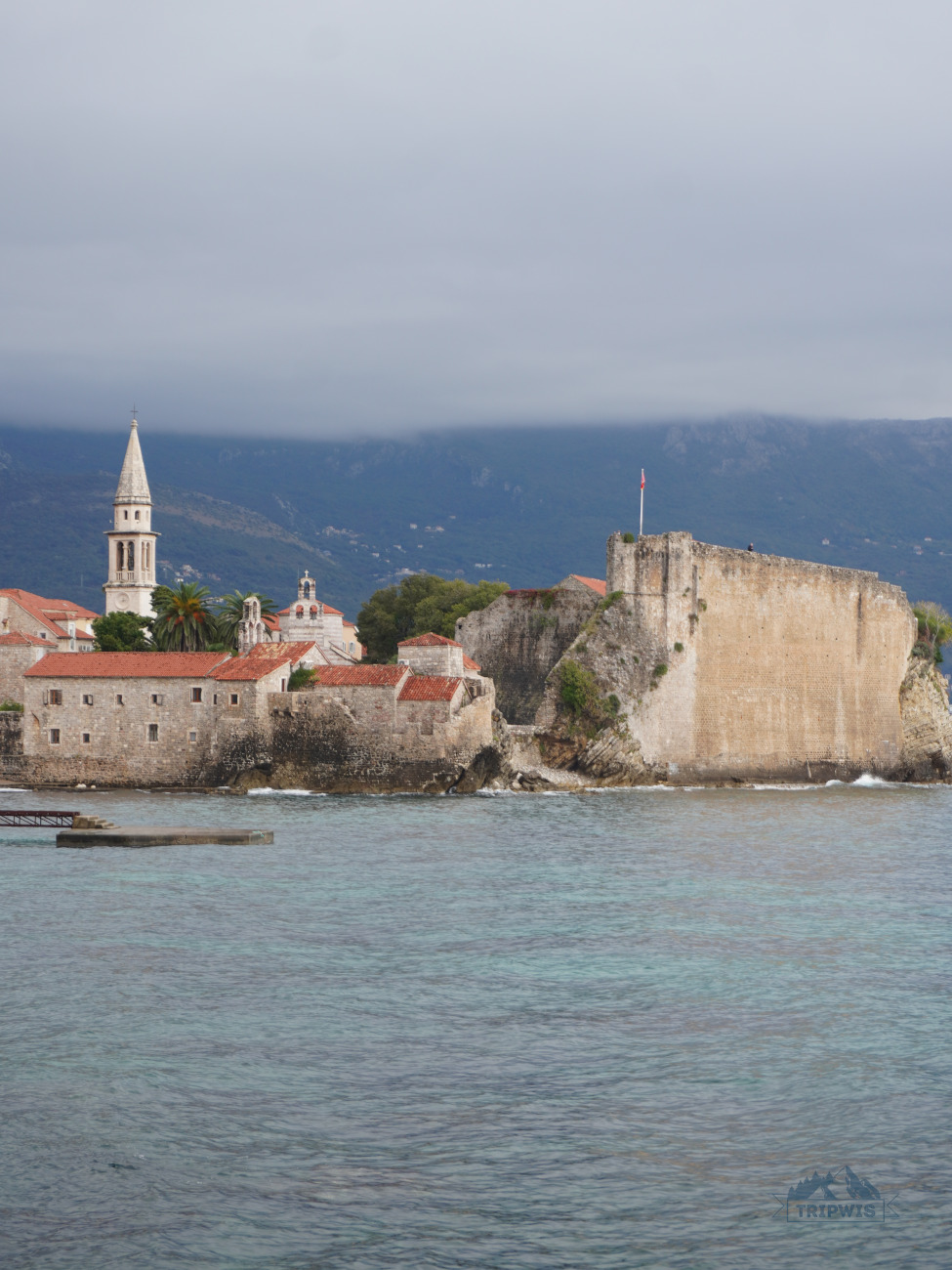 |
Budva’s Old Town is 2500 years old. It used to be home to Illyrians, Byzantines, and Romans, with all sorts of historical sites from these ancient civilizations still wonderfully preserved (conveniently in one place).
The best way to experience it? Enter through the main gates that are set right next to 4* Avala Hotel (from €220 per night). When you’ll get close to the entrance, stop for a bit and look around:
- To your left, you’ll see 5th century BC Roman Necropolis ruins. The sculpture in the middle is an authentic part of the ancient tomb stone, decorated with leaves and flowers.
- To your right — on the Gradenigo Tower (the biggest one, you won’t miss it) — you’ll see a stone coat of arms with a lion, the symbol of a venetian patron St. Mark, straight from the 15th century.
You can see 2000 years of history before even entering the Old Town itself!
Enjoy the ringing of the bells of St.John Church
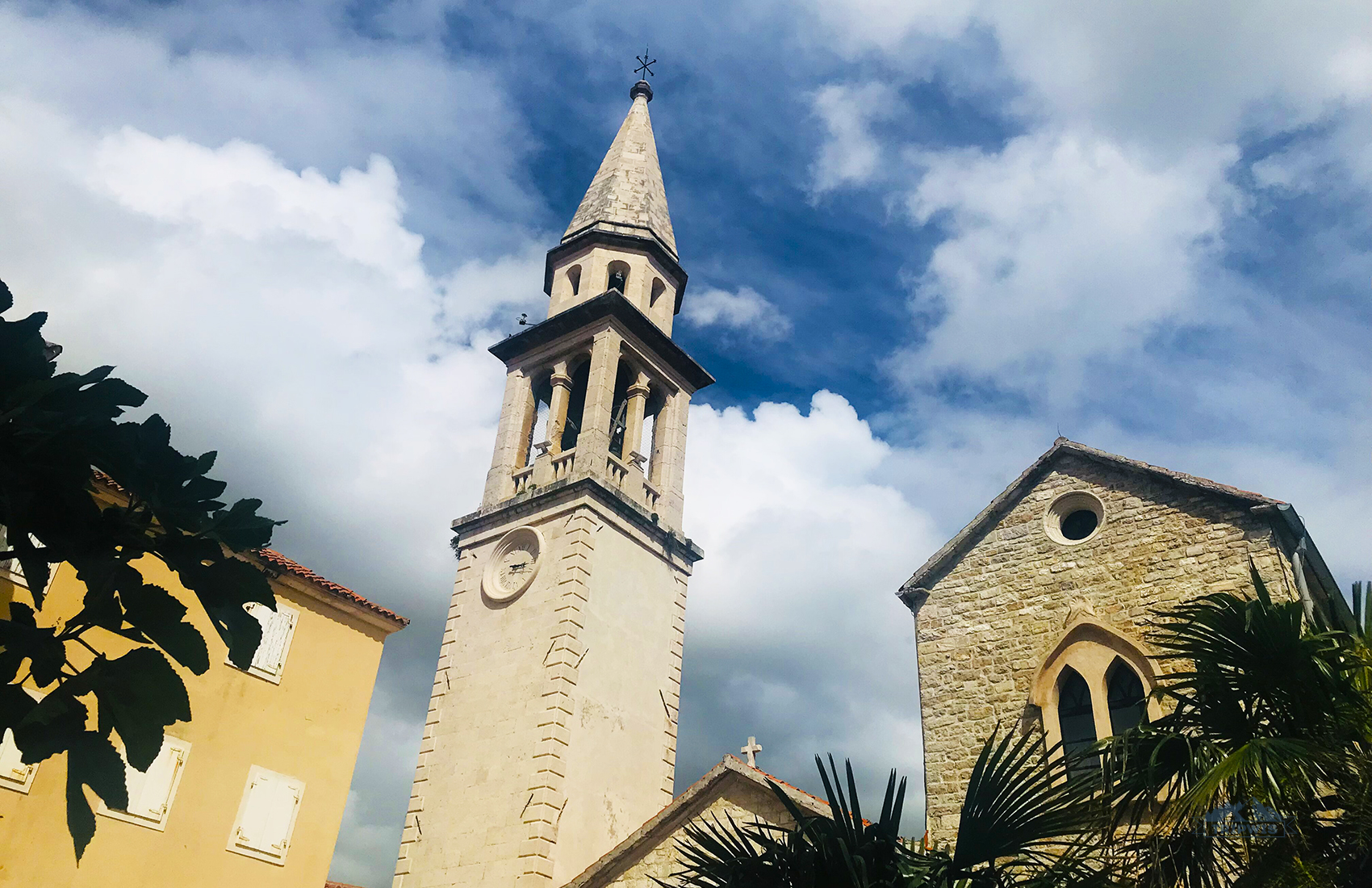
When you pass through the main street of the Old Town, you’ll make it to the central square. There isn’t a point during your walk where you won’t see a striking gothic tower: It’s part of St. John Church, aka Sveti Ivana.
When you look at the church, you’ll notice that it has 3 distinctive parts:
- The Bell Tower — with the current gothic version constructed in the middle of the 19th century (in place of a baroque one that was destroyed in the earthquake of 1667), the tower is an all-around impressive sight;
- The Bishop’s Palace on the right — a huge brick building, added to the church in 1867;
- And the Church itself, right in the middle — probably the most interesting component in the entire complex, with sophisticated mosaic on the inside, and some parts of the construction dating back to the 9th century.
The church is free to visit, but there’s no way to enter the Bishop’s Palace and the Bell Tower, at least for now.
Appreciate mosaics and frescoes of the Holy Trinity Church
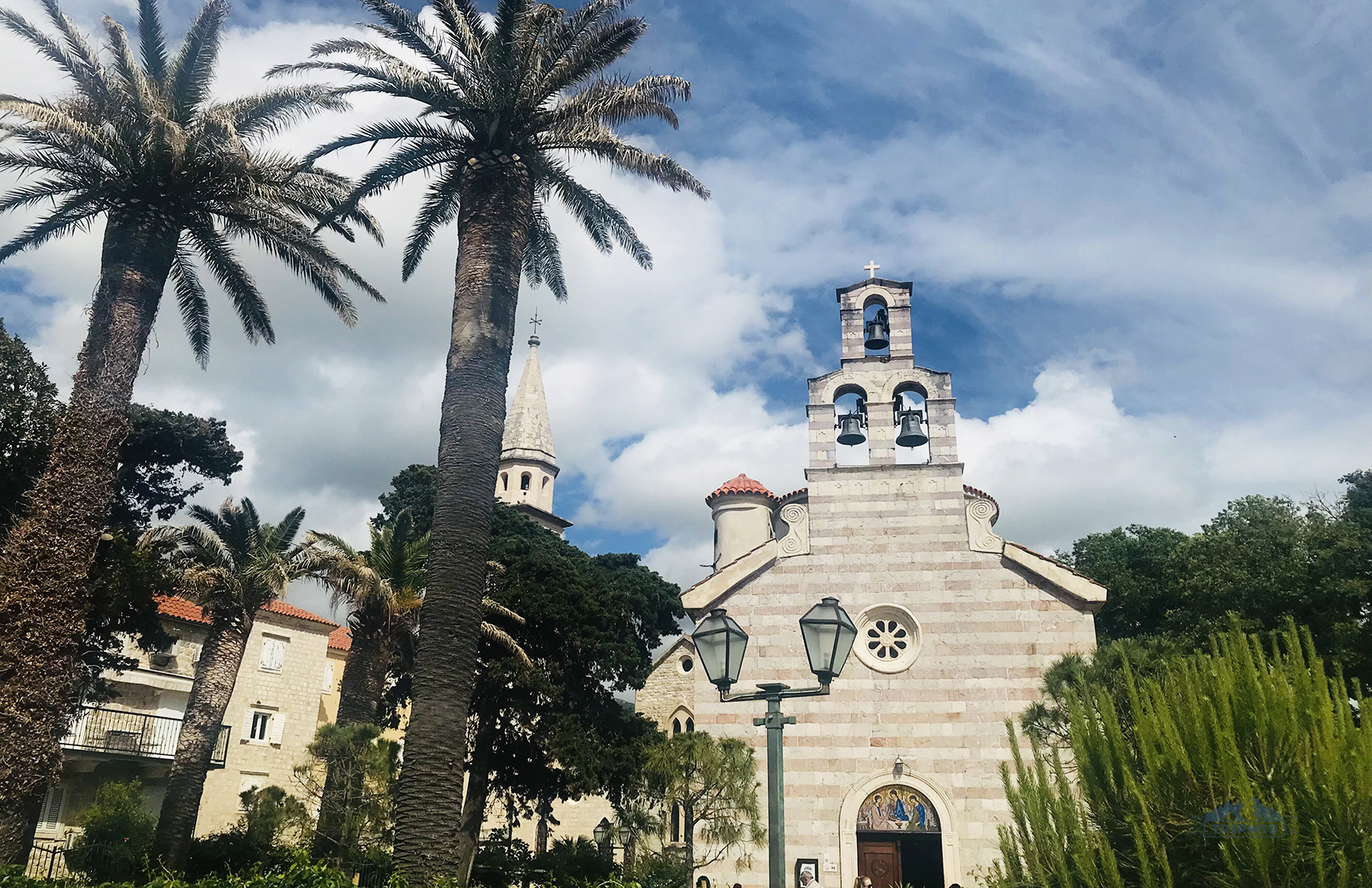
Less than 20 meters from the catholic St. John Church, there’s orthodox Holy Trinity Church. It’s a little “younger”, dating back to 1804, but it’s just as beautiful.
With a three-bell construction right on top of the entrance and distinctive red and white stone belts in the walls, it’s the epitome of a Byzantine style. And with a massive iconostasis on the inside (painted by a famous local artist, Naum Zetiri, in 1833), it’s just as good on the inside.
Gaze upon the sea view by the Santa Maria in Punta Church
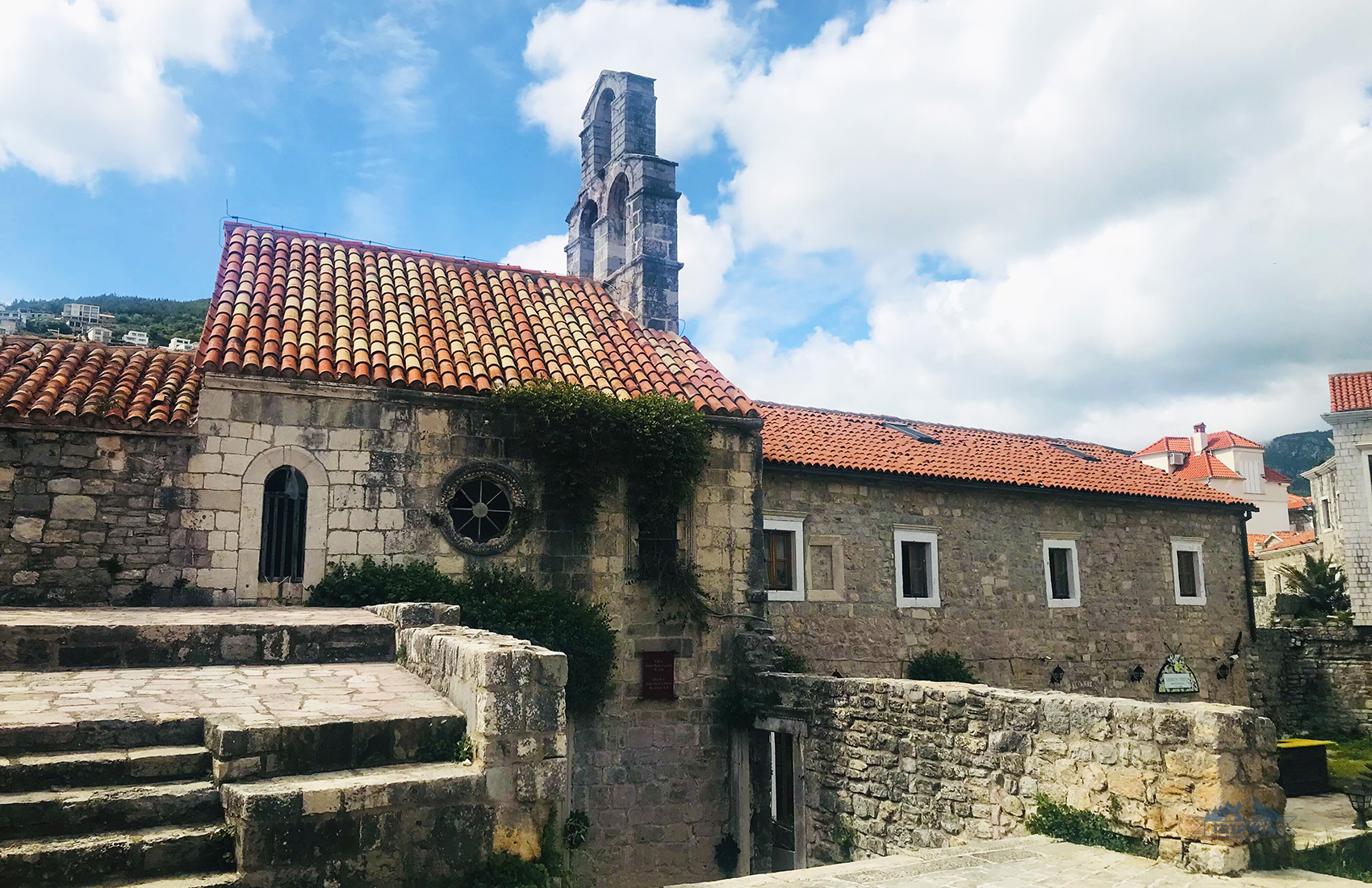
Turn back from the Holy Trinity Church, and you’ll see a relatively unassuming building with a circular window. This is the Church of Santa Maria in Punta, and it has a lot of stories to tell.
Some stone slabs (you’ll see them on the inner side of the town wall) date back to the year 840. At the time, it was a part of a Benedictine monastery, when Budva was just a coastal fortress.
The church has seen battles of Benedictine and Franciscan order, before it was captured by the French in the early 1800s. It survived two massive earthquakes (1667 and 1979) and nowadays goes through a slow reconstruction, not open to the public.
Right next to it, though, between the church and the citadel, a few meters of the wall are missing, letting you marvel at a great view over the beach, the sea, and the mountain range west of Budva from this small opening. Stay here for a moment or two soaking it all in, as such short bits of bliss are crucial for an overall memorable trip to Montenegro!
Walk through the Citadel’s labyrinth of halls
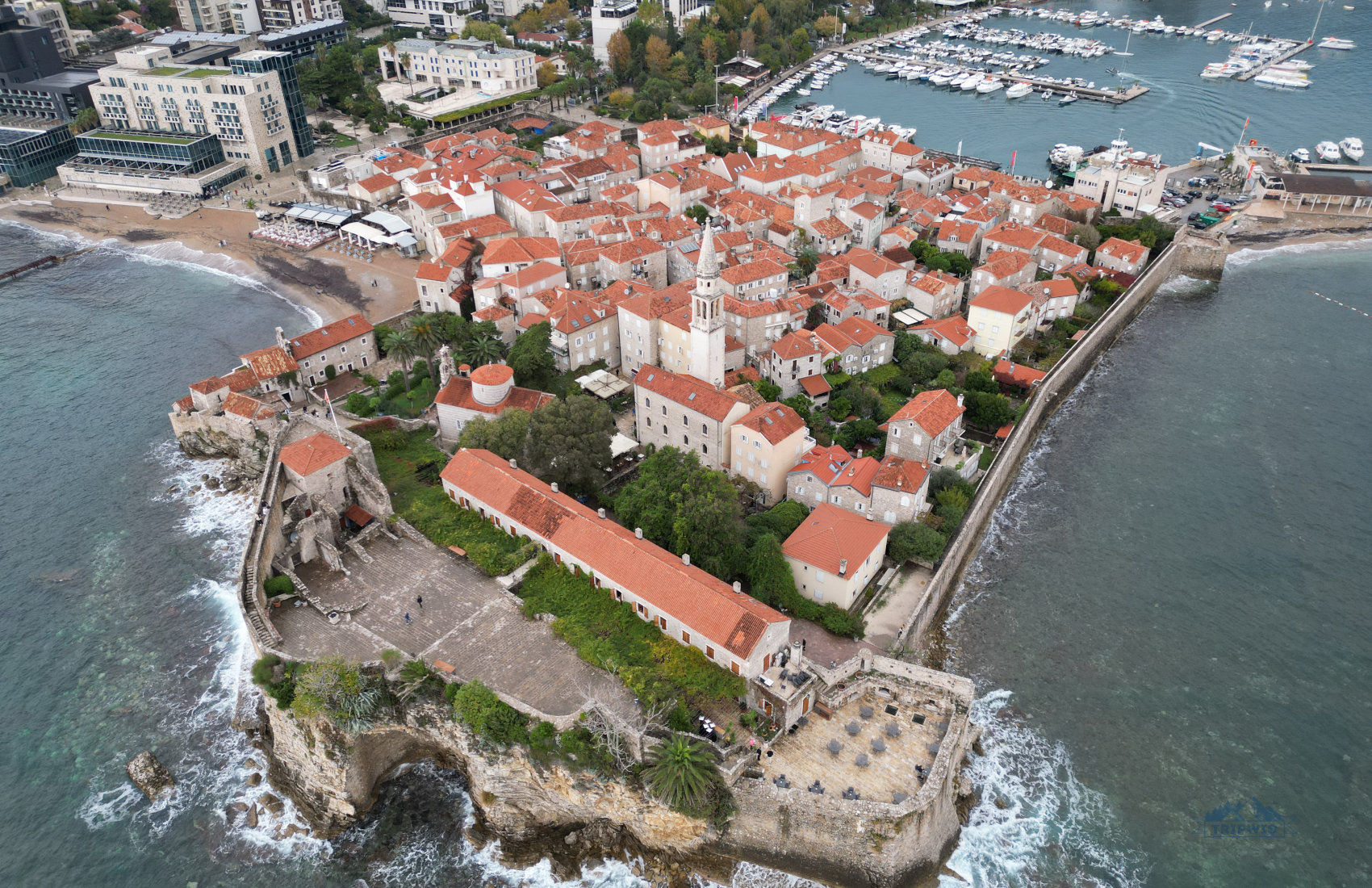
Mostly, people go into the Budva Citadel just to get to the viewpoint. The structure’s top floor offers a truly picturesque scene — a panoramic view of the whole coast! You would think snapping a few pics of the stunning vistas would be enough to check this landmark off your Budva to do list, but there’re actually a lot of other fun things to explore in the Citadel!
The Citadel itself, former Castle of St. Mary, was built in 1425. It’s a medieval stronghold with 6.5-foot thick walls that survived the Ottoman and the Austro-Hungarian sieges. It’s largely unaffected by the earthquakes, and today it houses a lot more than just a viewpoint:
- The second floor — a library with a massive collection of historical books, one of the best in the Balkans;
- The southernmost part of the structure — ruins of the Santa Maria in Castello Church, some remains of it date back to the 17th century;
- The inner court of the old Austro-Hungarian barracks — a beautiful garden with lush greenery right in the middle of the castle;
- Maritime museum — a relatively small room with dozens of ship models and maritime artifacts from around the region. These are the remnants of the time when Budva was at the forefront of the war on piracy.
It’s worth giving the Citadel more time than people usually do: You get to stroll through one of the Adriatic coastline’s best-preserved castles, after all!
Explore the Spaghetti Western history of Budva
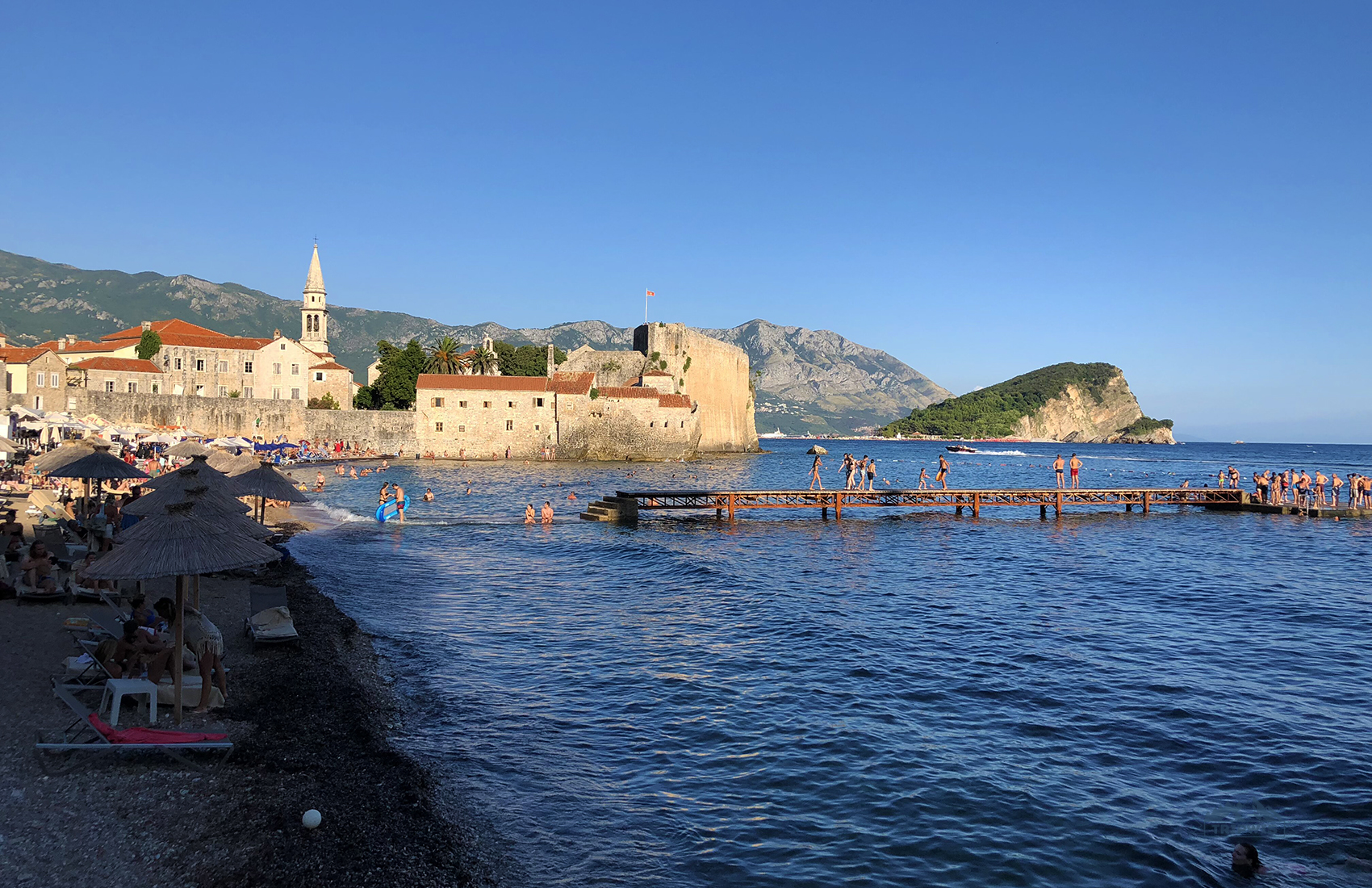
As you continue to explore Budva’s Old Town, you’re bound to run into a curious sight: A massive bell, with a huge anchor beneath it that stands right next to the town’s marina, on the outside of the city wall. With the rich history of Budva, as well as its truly ancient tourist attractions, and all the ruins dating back to the 5th century BC, 800’s, 1400’s… you’d guess that this bell is an authentic ancient artifact, right?
Well, nope. Not really. It’s a movie prop from the 1960’s!
Both the bell and the anchor are, in fact, from the set of Jack Cardiff’s movie “The Long Ships” about Vikings. The crew was filming it in Montenegro (then Yugoslavia) just because it was cheaper.
Richard Widmark, the famous Western actor, plays the main role in the movie. And yes, the beach next to one of the Adriatic’s oldest fortifications — Ricardova Glava (Richard’s Head) — is named after this particular Richard, and not some king or legendary warrior. So, if you wonder what to see in Budva, this little quirky Spaghetti Western legacy is one of the options!
Roam the Old Town walls as if you’re a medieval archer
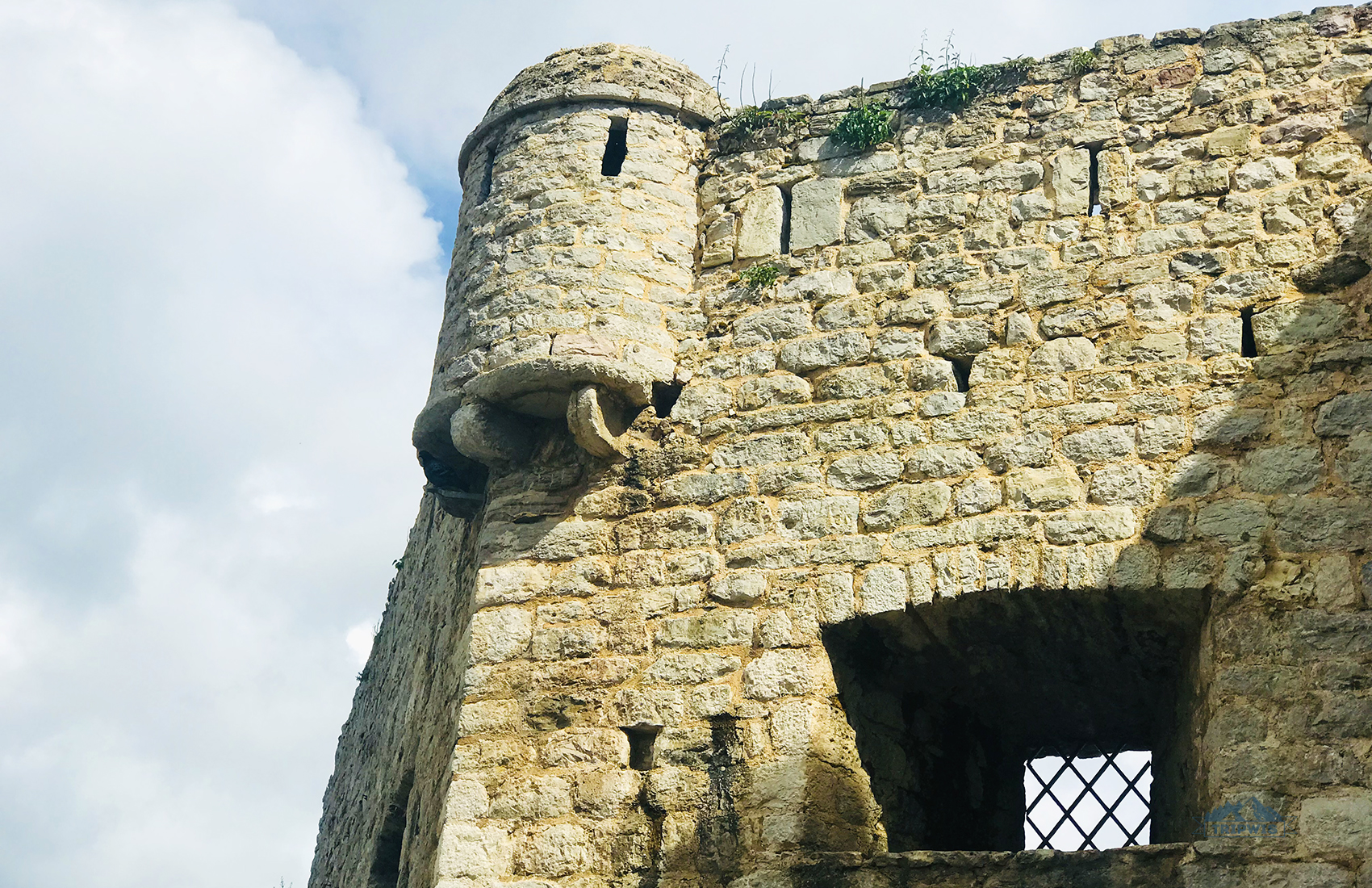
Yes, the walls around Stari Grad are walkable. You can get on top and take a tour around the whole fortification (with a couple of potential dead ends, but still). See the city through the arrow slits, hide among merlons and embrasures, where dalmatian archers used to stand — this is what Budva’s fun side is all about! The walls offer a unique insight into the Stari Grad’s life: Rose gardens, chill backyards, and lush greenery hide behind every turn of the structure.
To get on top, you need to go to the far eastern end of the Citadel and turn left: You’ll see the gates. The tickets price in 2025 is €2.
Keep in mind: The walls are closed when it’s stormy and when it rains. During especially heavy storms, crashing waves literally fly over these walls, so it’s not safe.
Don’t miss the door to the sea
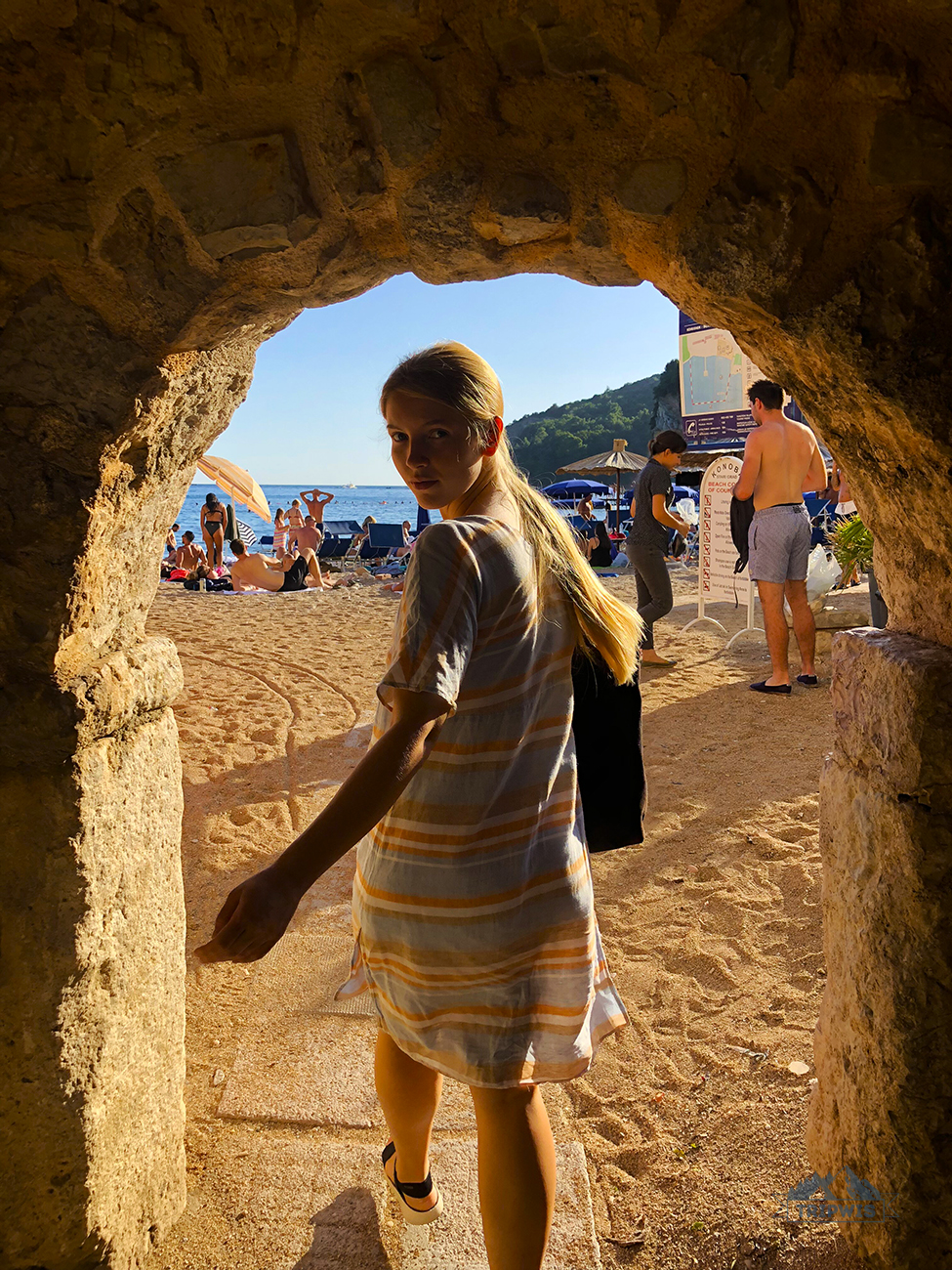 |
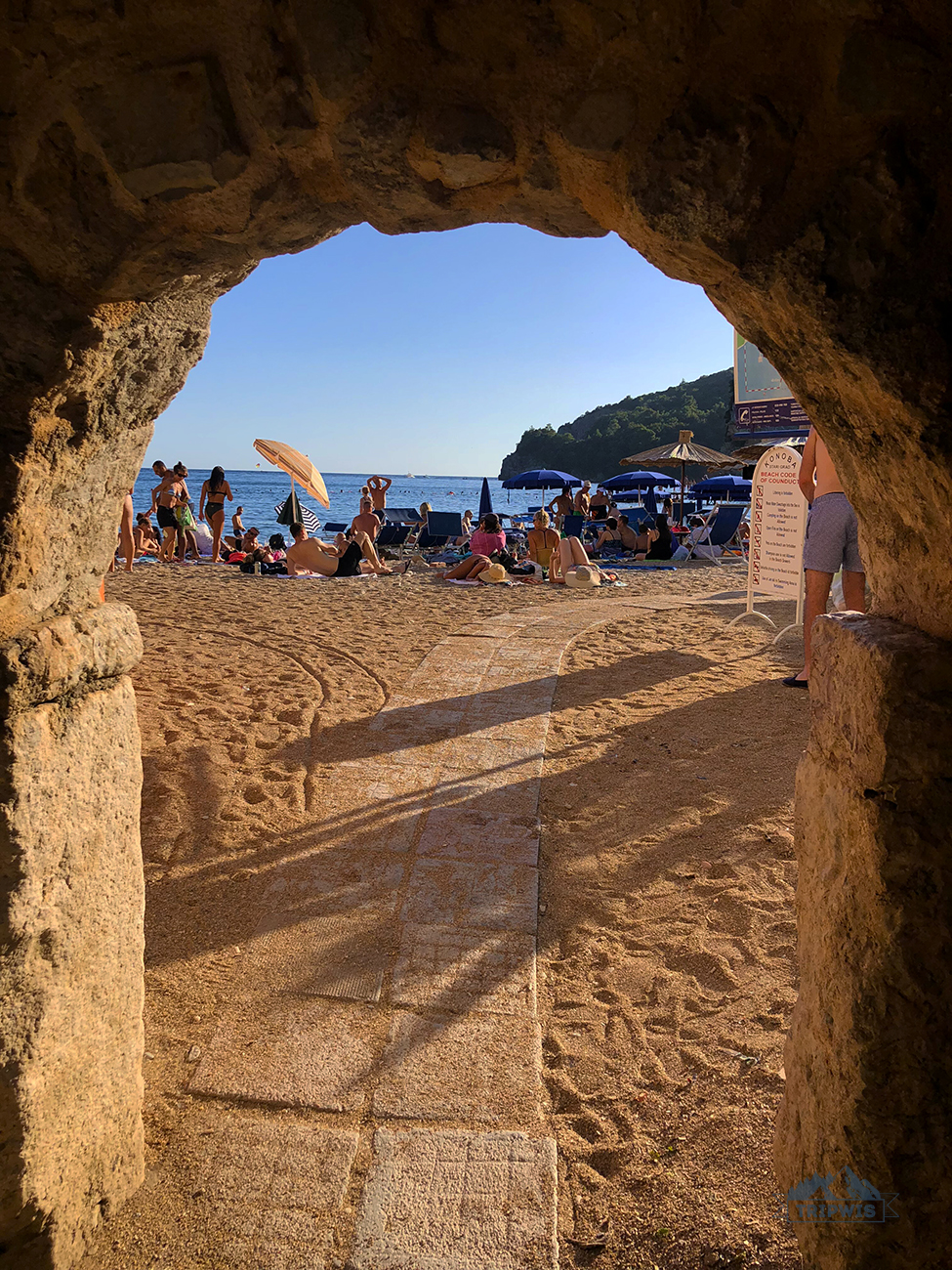 |
It’s a hidden gem at the end of a narrow street at the far eastern side of the Old Town. And no surprises here: The attraction is literally a small door that opens through the wall straight onto the sea.
However, what could be more picturesque? Like a literal gate through weathered stone walls to the gleaming azure of the Adriatic Sea, the place offers an experience like no other!
There’s no sign or anything, but if you turn right from the Prince pub, you’ll be able to see it.
Check out modern art at Jojo Ivanovic’s Gallery
For those who can’t imagine a trip overseas without the chance of getting acquainted with the local art scene, check out this small and charming gallery. On top of the regular exhibition of paintings and sculpture, they have a rotation of artworks from all local museums and galleries, from Serbia to Bosnia. Plus, the visit to the gallery is completely free!
And you definitely want to check out all the posters on the walls of the Old Town: Pretty much every week local musicians, singers, even choirs perform in this gallery’s main hall. If you’re into art — it’s a must-see attraction in Budva.
Explore the Riviera
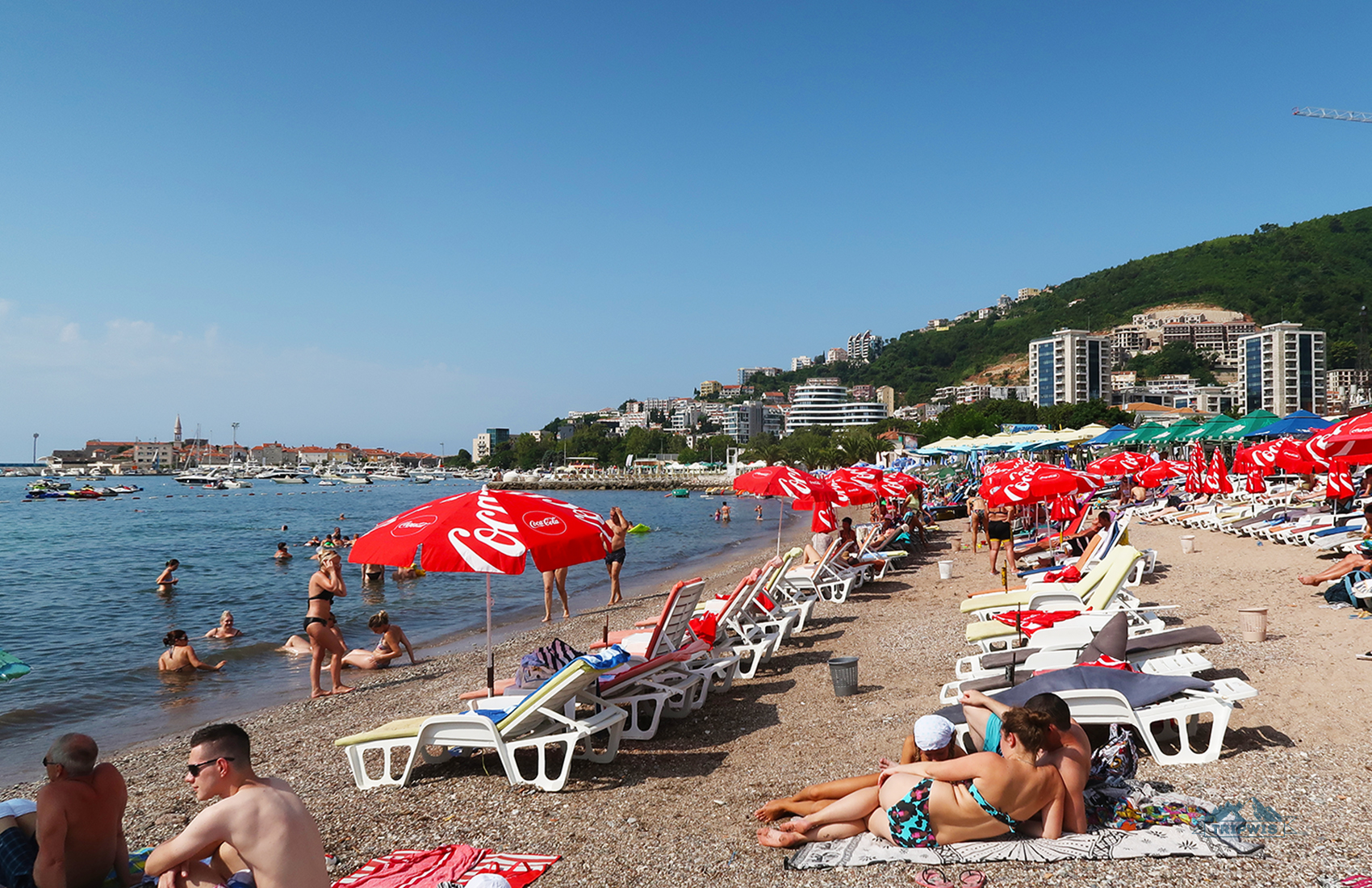
Yes, Budva offers much more than the Old Town!
You can take a stroll along the waterfront promenade, explore all the local beaches, enjoy delicious local food with a view, and much more. Here are all the places to add to your itinerary:
Chill by the yachts at the marina
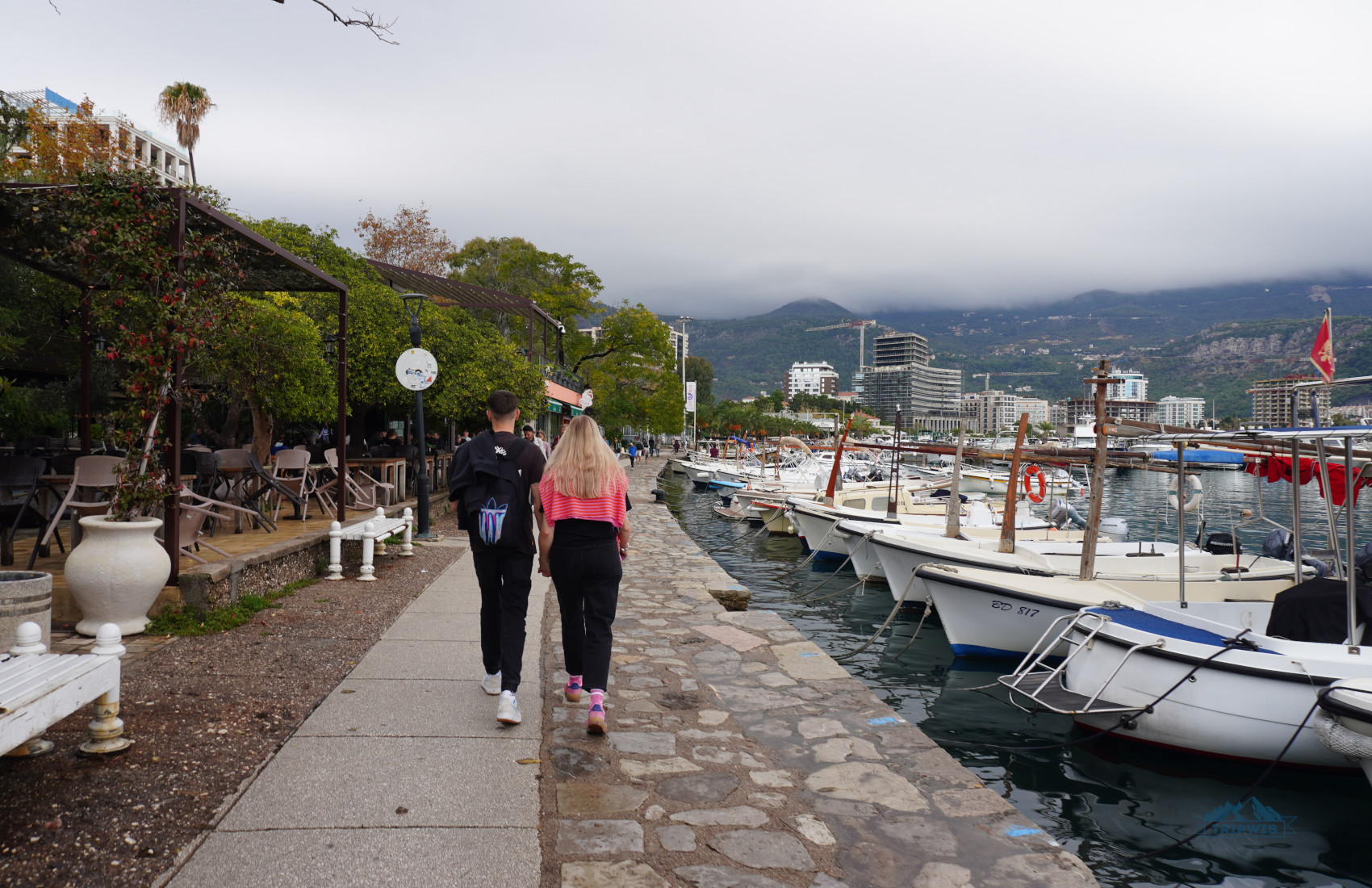
Right next to the Old Town’s ancient walls sits one of Europe’s most charming marinas, clad with all the hustle and bustle of a small port.
Water taxis going up and down the coast, local fishermen putting up their catch for sale (and sometimes — just to brag), hordes of cats running around, trying to steal some of the seafood, — this scene is so Beauty and the Beast-coded that you want to start dancing around and singing as you come closer to the marina!
All of the action happens with a backdrop of luxurious yachts parked nearby. Sure, it’s not Tivat’s Porto Montenegro: There are no mega yachts, but its fair share of sparkling-white sea-faring beasts adds enough to the scene.
Of all free things to do in Budva, just relaxing at the marina (there’s plenty of places to sit) is one of the most authentic experiences.
Side note: Water taxis you might see all around here get quite costly during high season. Even in March, it’s about €80 to get from Budva to Sveti Stefan. And don’t even think about a boat from Budva to Kotor: Take a look at Google Maps and you’ll see what an insane hook your boat would have to make! This voyage to Kotor is better to be explored on a boat day trip.
Stroll along the Budva promenade
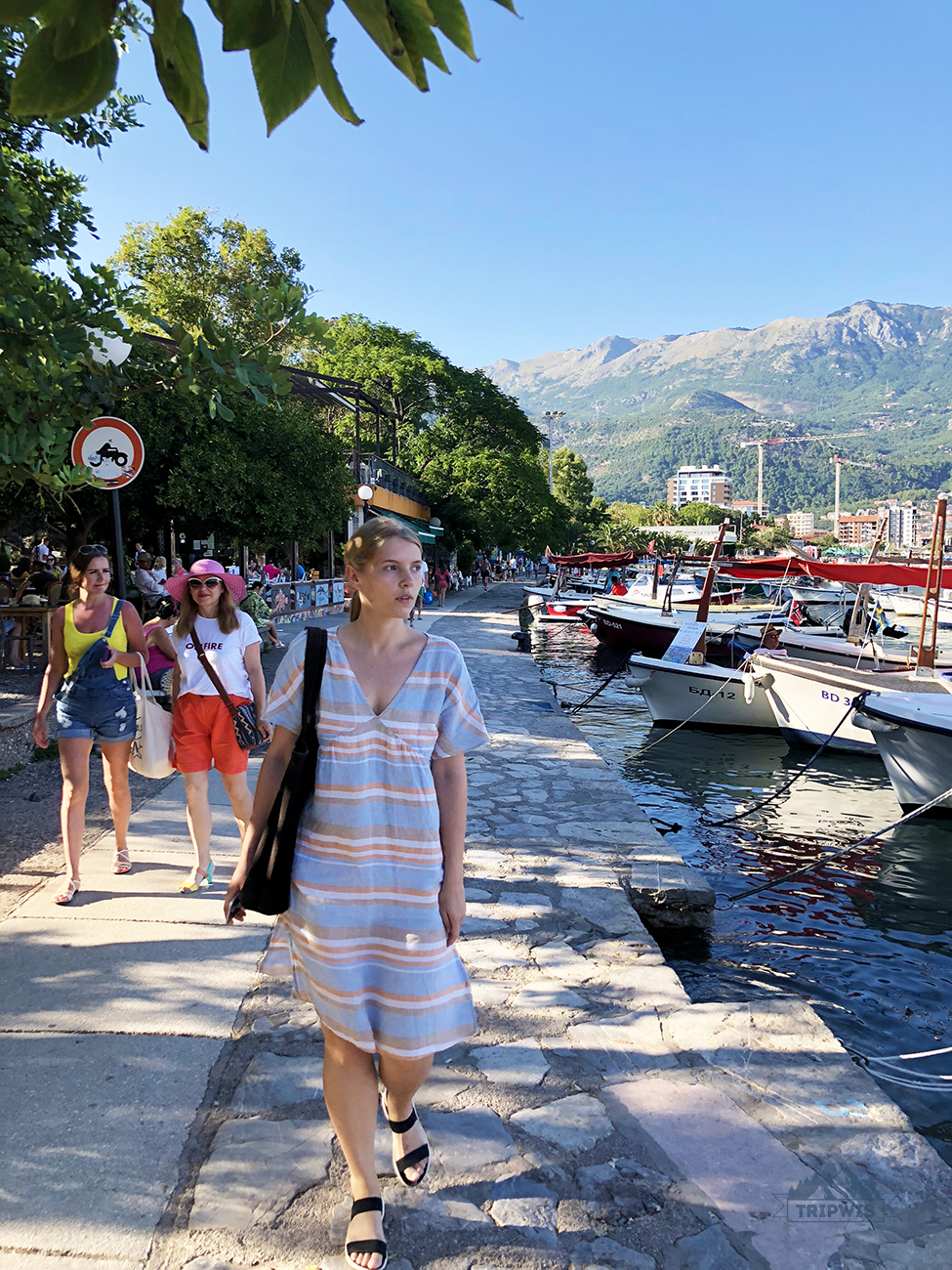 |
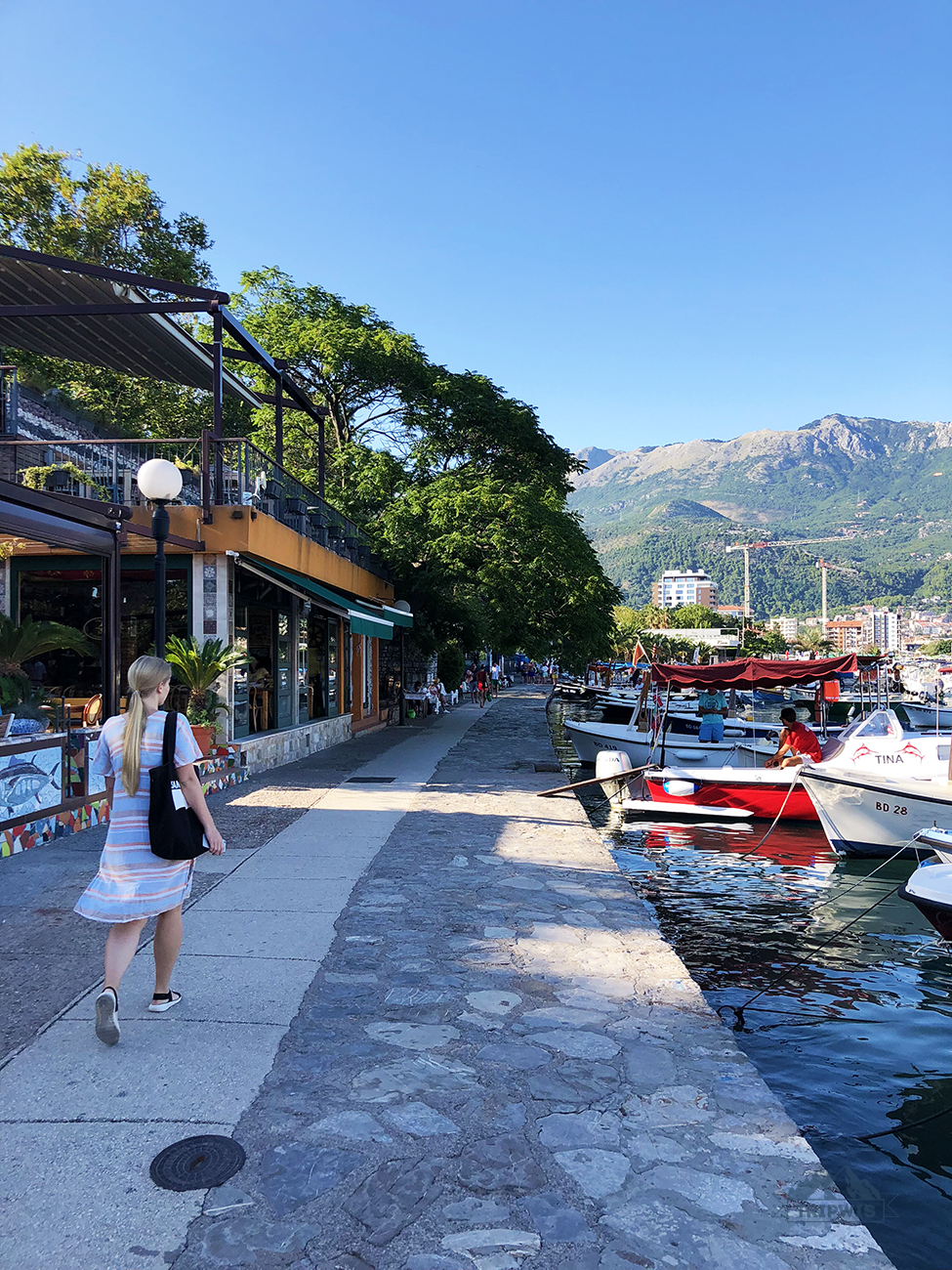 |
It’ll take you about an hour to walk by all of Budva’s main beaches. Start at the marina and go towards the Dukley Gardens Villas: You’ll end up on the side of a mountain, in front of a tunnel that separates Bečići and Budva.
Breathtaking views of Sveti Nikola Island, endless cafes and restaurants, pine trees that almost touch the water with their fluffy branches, and — depending on the season — either chill and deserted beaches or a never-ending party, — Budva promenade is a fan favorite of locals and travelers alike!
Lay in the sun at all Budva beaches
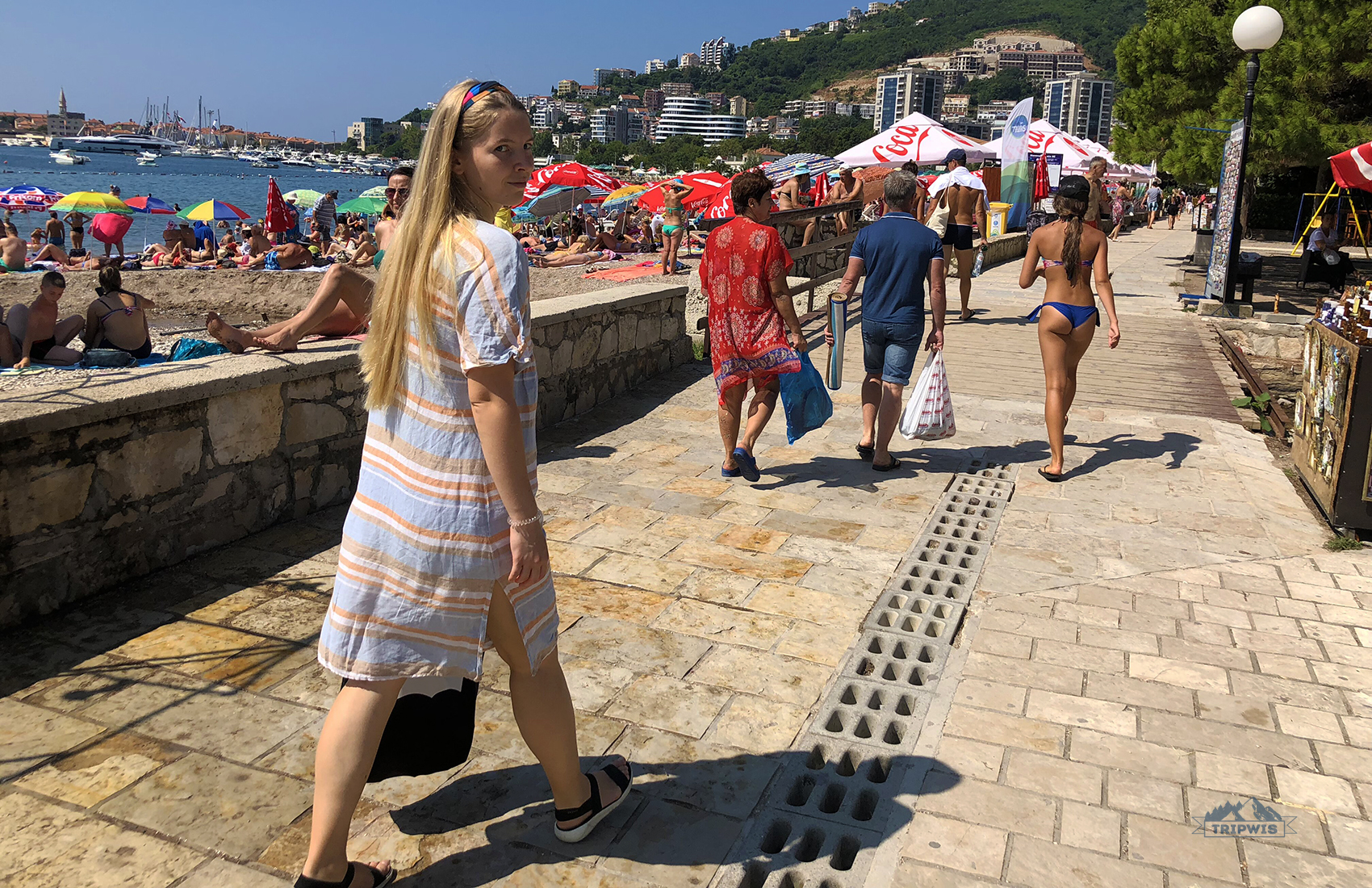
Budva Riviera is situated in its own small lagoon, surrounded by mountains and beaches, shielded from the sea by St. Nikola Island. This unique position makes it a paradise for all beach lovers out there.
Well, almost all. Beaches in Budva are rocky, so don’t expect golden sands and gradual entry into the water. You’ll walk on rather big and sharp pebbles most of the time (free massage!).
We absolutely love going to the beach in Budva. In fact, it’s our daily activity almost year-round, except for colder winter months (cold plunging never sounded good, to be honest). We’ve seen all (!) visit-worthy beaches in the area in the last year. So, what does the riviera has to offer and what can you expect from your time here?
We’ll start with the “worst” beaches, gradually increasing the overall enjoyment scale:
Try to understand why Pizana Beach is even called a beach
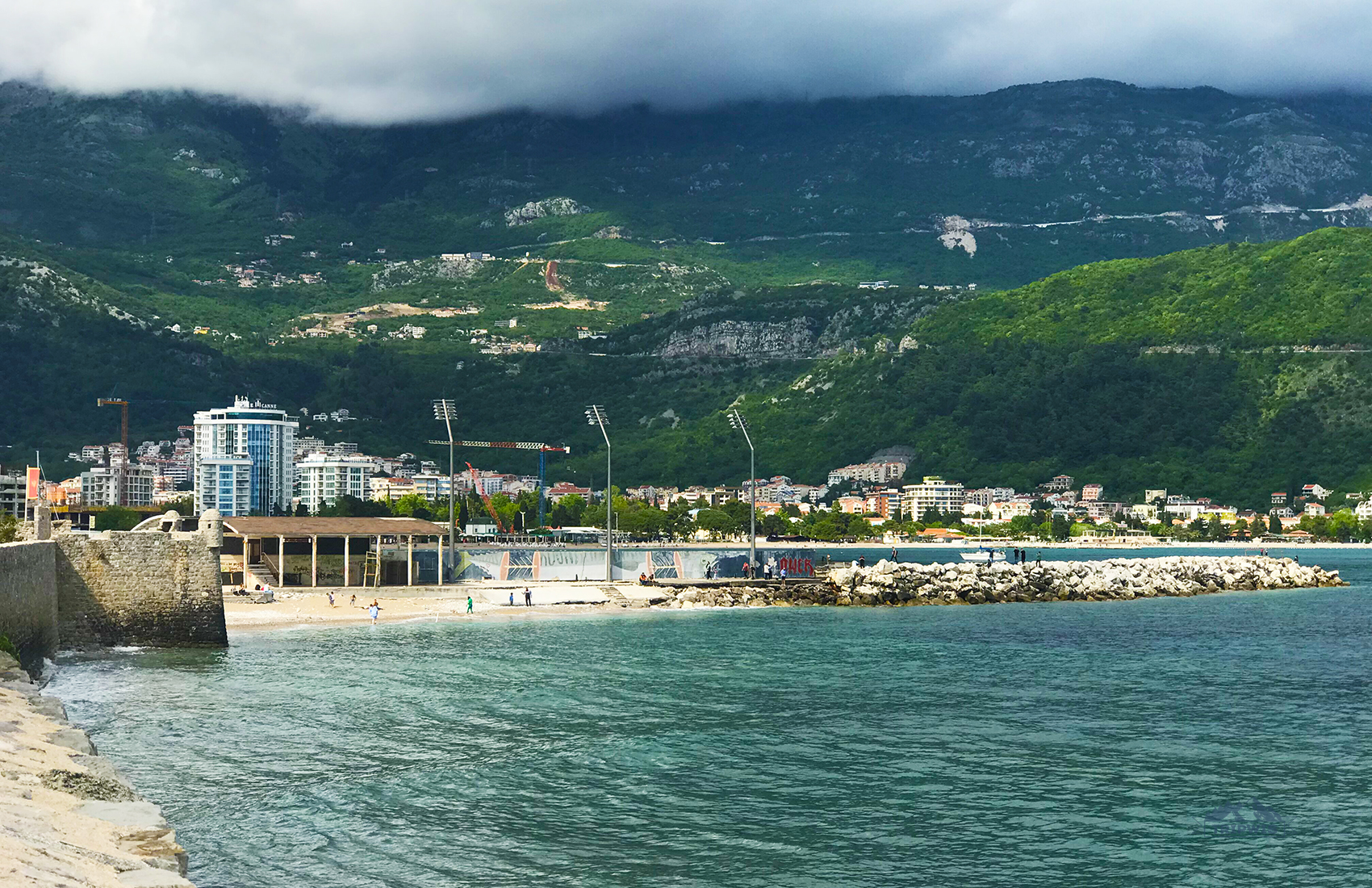
If you look at a map online, Pizana Beach looks nice: It sits right next to the Old Town, it’s small and hidden from the crowds. A good place, right? Well…
It’s where the Old Town’s trash dumpster is. Not a small plastic one, but a full-scale 15-yard industrial container. The “beach” itself is a miniscule strip of pebbles, sandwiched between a parking lot and the marina’s administrative building.
It’s an OK spot to watch the storm if you walk a few hundred meters further to the rocks, but the “beach” part is absolutely jampacked with sunbathing crowds every season, making it an impossible feat to even put down your towel. I can’t wrap my head around the decision-making process people go through when they look at this mess and think “yup, that’s a fine beach experience”. It’s free for a reason, and with 4.4 rating on Google, definitely overrated.
Stroll along Azzuro — Slovenska — Greco beaches
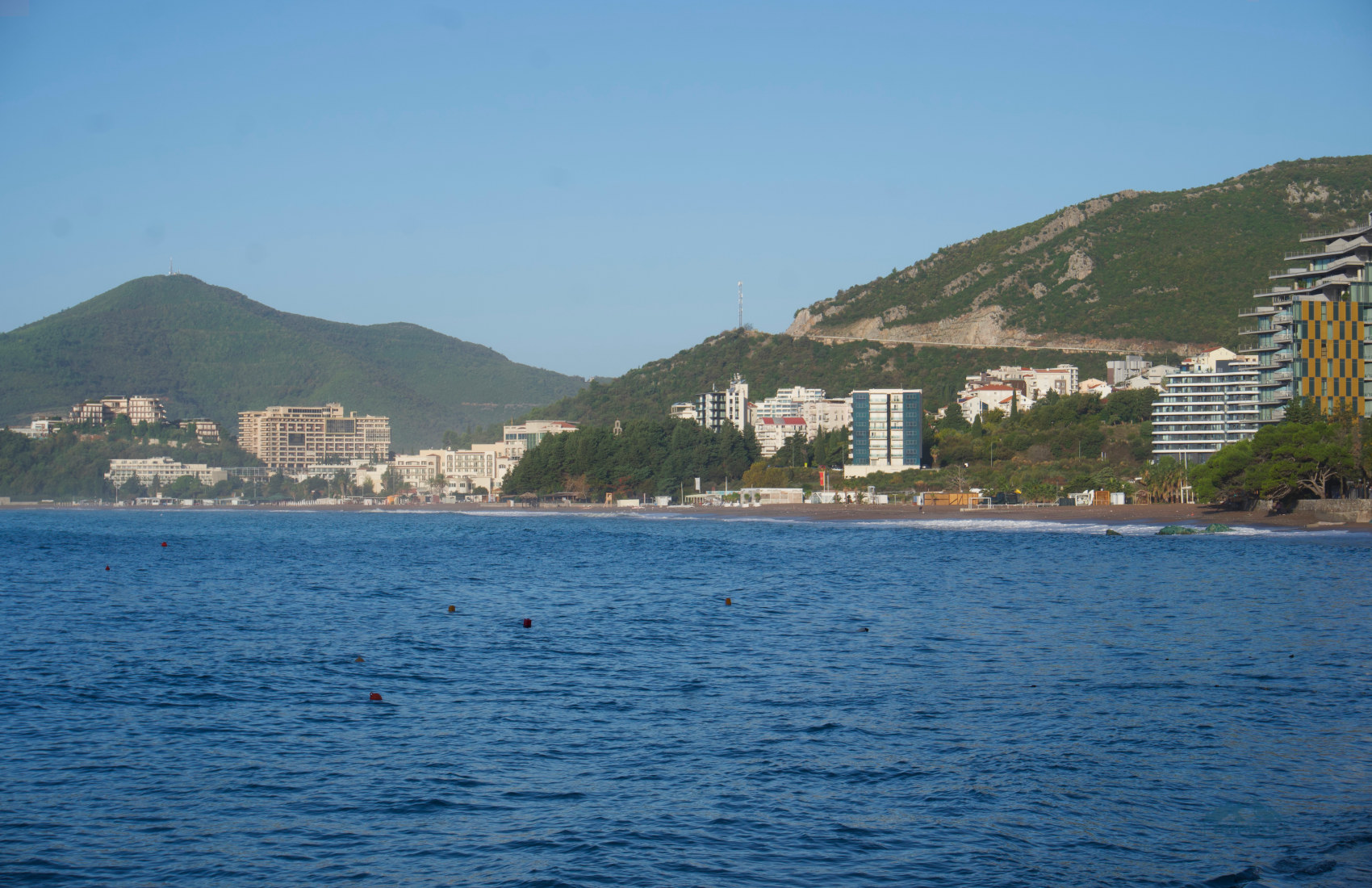
Most of the guides separate these three into self-sufficient attractions, but in reality, it’s not the case. It’s the same beach, the long pebbly strip of sea shore that runs along the whole length of the city, with barely notable borders between the parts.
Greco starts right after the marina, with small insertions of tables from local konobas (tiny family-owned restaurants) calling your name throughout its entire length. Greco then flows into Azzuro, where beach clubs take most of the space. The area gets wider when it comes to Slovenska Beach (that belongs to 3* Hotel Slovenska Plaža; from €130 a night), and finally — turns into a very wide beach when it comes to the mountain that leads to Bečići.
In general, all three mentioned parts come together and form Budva’s most basic beach. Food vendors, some small bars, watersport activities, endless rows of free and paid sunbeds, crowds, and crowds, and crowds of tourists lounging about, — this is the image that AI generates whenever you ask it to show you a beach.
Personally, we would not recommend it: During peak tourist season, every available square foot of land is covered with someone’s towel, and all the small “rivers” that flow through the city from the mountains and into the water are not quite mountain spring-clean.
Try to find anything interesting about Bečići Beach
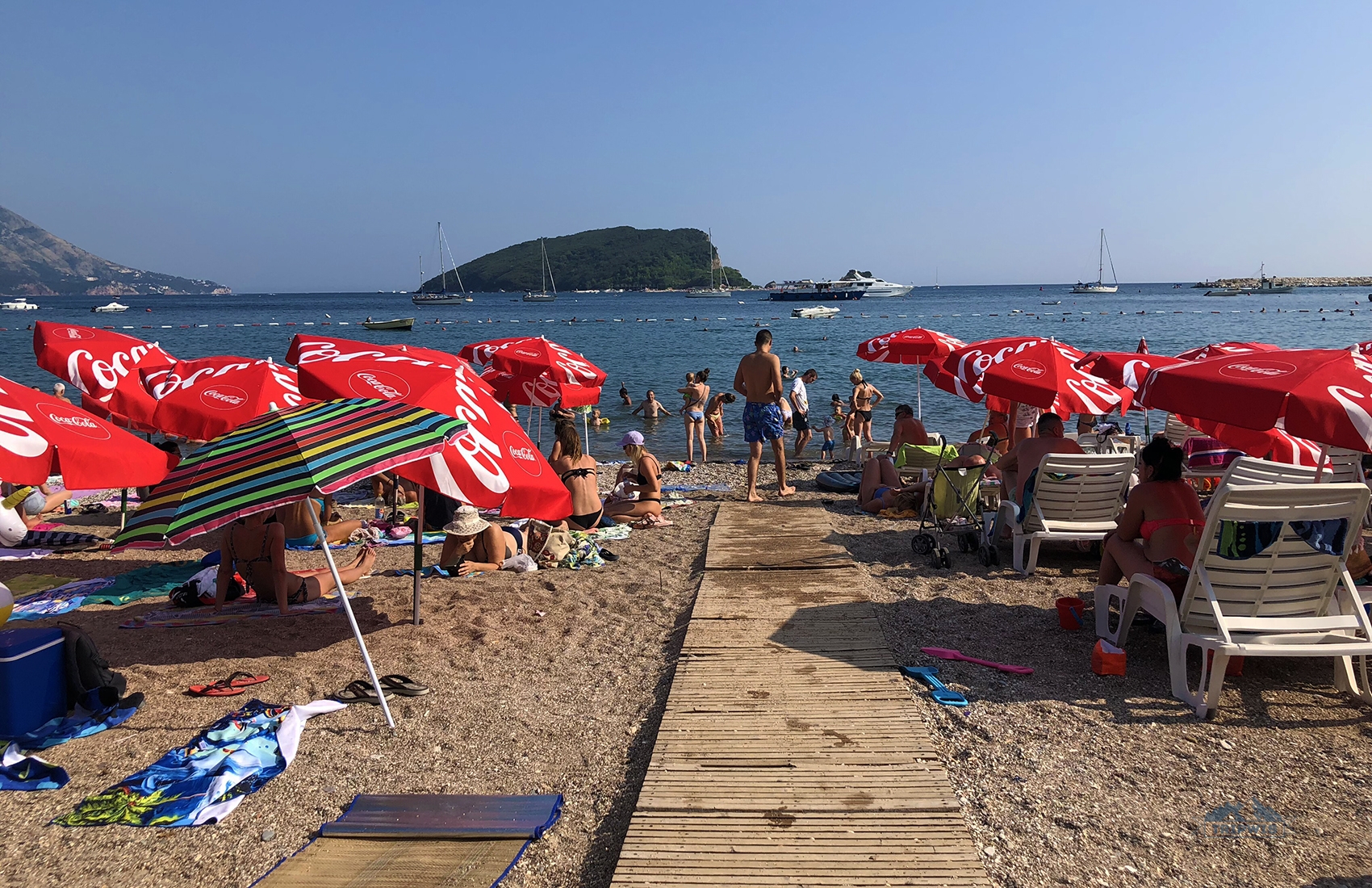
Bečići is, in theory, a part of Budva. In practice, it’s a town next to it, but it’s within walking distance, and people from Bečići often come to Budva, and vice versa.
Bečići has a long and wide strip of small pebbles along the seashore, and it’s definitely one of the most standard beaches nearby: It’s just as simple as it gets, slightly underdeveloped maybe, perfectly even and lacking in any sorts of distinctive features.
It’s Budva promenade beach 2.0, with all the same things, a little more space and fewer people. Nothing special, but also nothing to complain about.
Have a drink at Ricardova Glava Beach
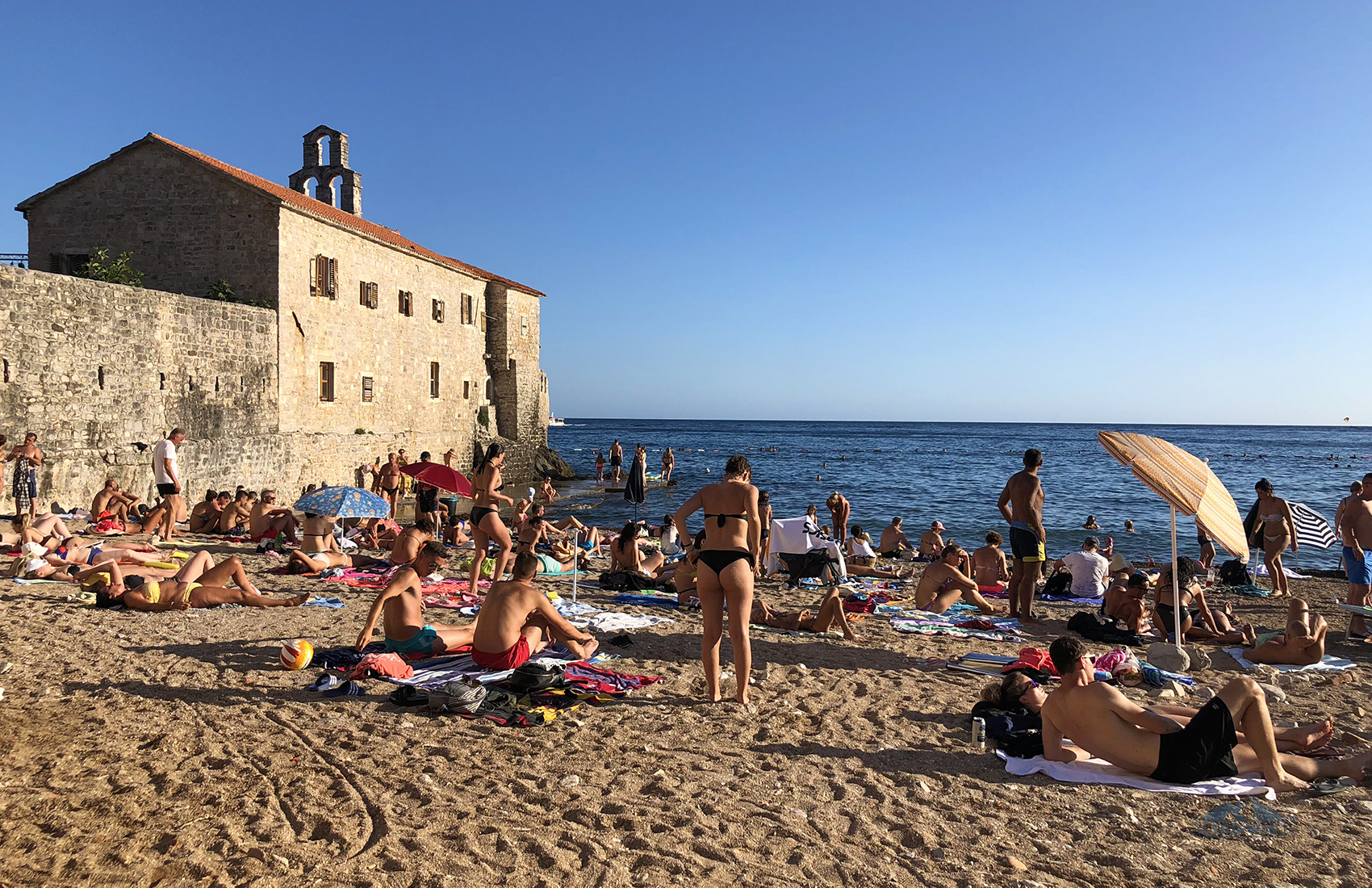
The iconic Richard’s Head Beach (the one we’ve already mentioned above) is a unique site in Budva. Ricardova Glava Beach — a narrow strip of the shore between the 4* Avala Hotel and the Santa Maria in Punta Church — houses 2 beachfront cafes, Konoba Stari Grad and Astoria.
It’s a popular hotspot among locals and tourists alike. Just chilling here with a somewhat-decent cappuccino is one of the best things to do in Budva. This small, 100-yard-long beach is hidden from the outside world by the walls of the Old Town.
It’s too packed and crowded during peak tourist season, but it’s perfect to hide from the sun under the umbrellas with a cold beer or a nice cocktail whenever the crowds subside.
Dance till dawn at Jaz
Jaz is different from all the other Budva’s beaches. You’ve got to take a taxi to get here, since it’s located a bit to the north-west of the city. It’s THE beach to go if you like beach parties.
Dance music, bars, cocktails, all sorts of activities — that’s all about Jaz (and jazz, coincidentally, though the name has no relation to the funky tunes as far as we know). It’s probably the liveliest and the least peaceful option you have around Budva. If you’re young and looking for a fun time — look no further, but if you’re more into romantic relaxation or if you travel with family — Jaz is not the best option for you.
Spend a day full of sunlight and luxury at Milocer Beach
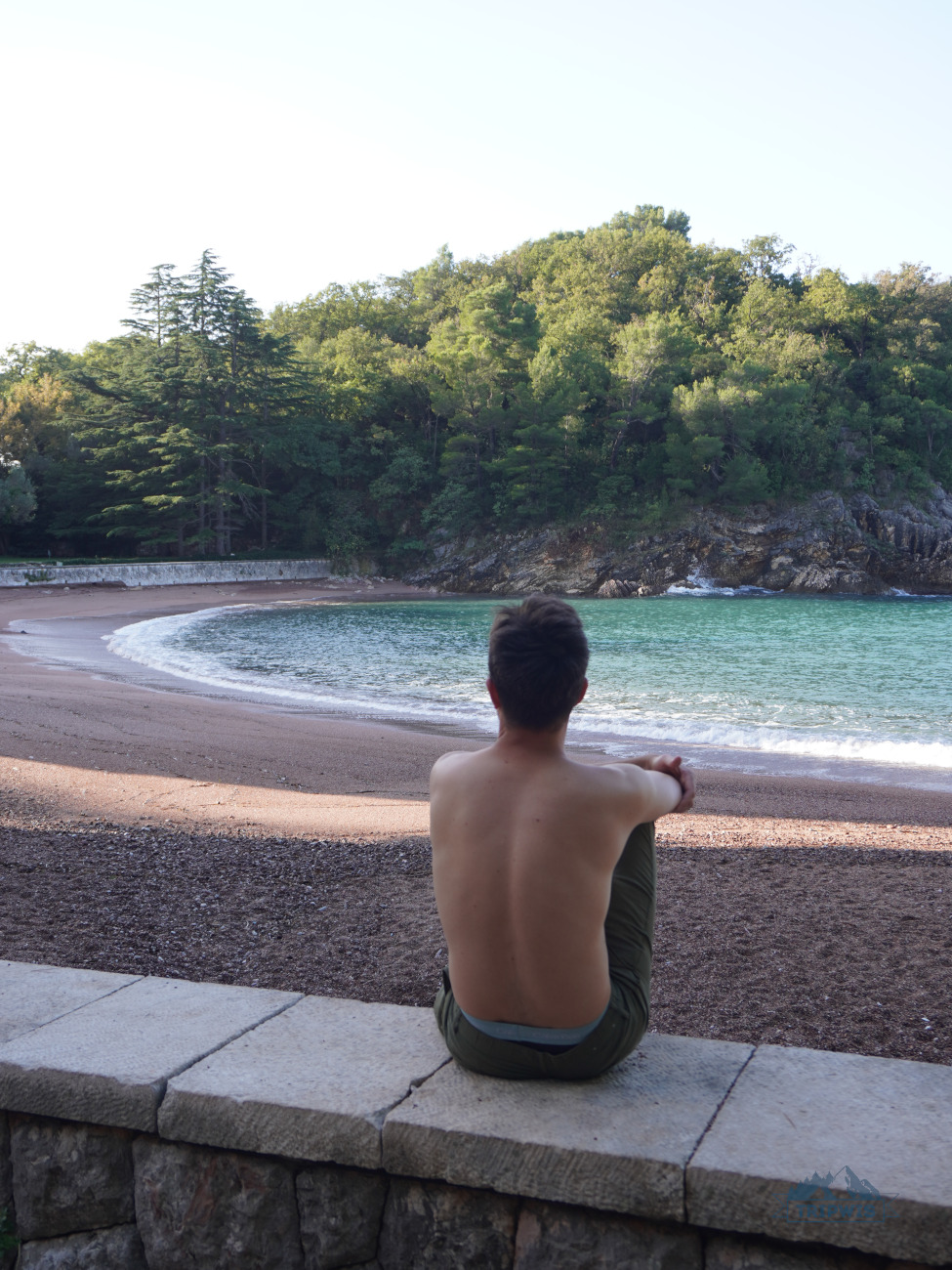 |
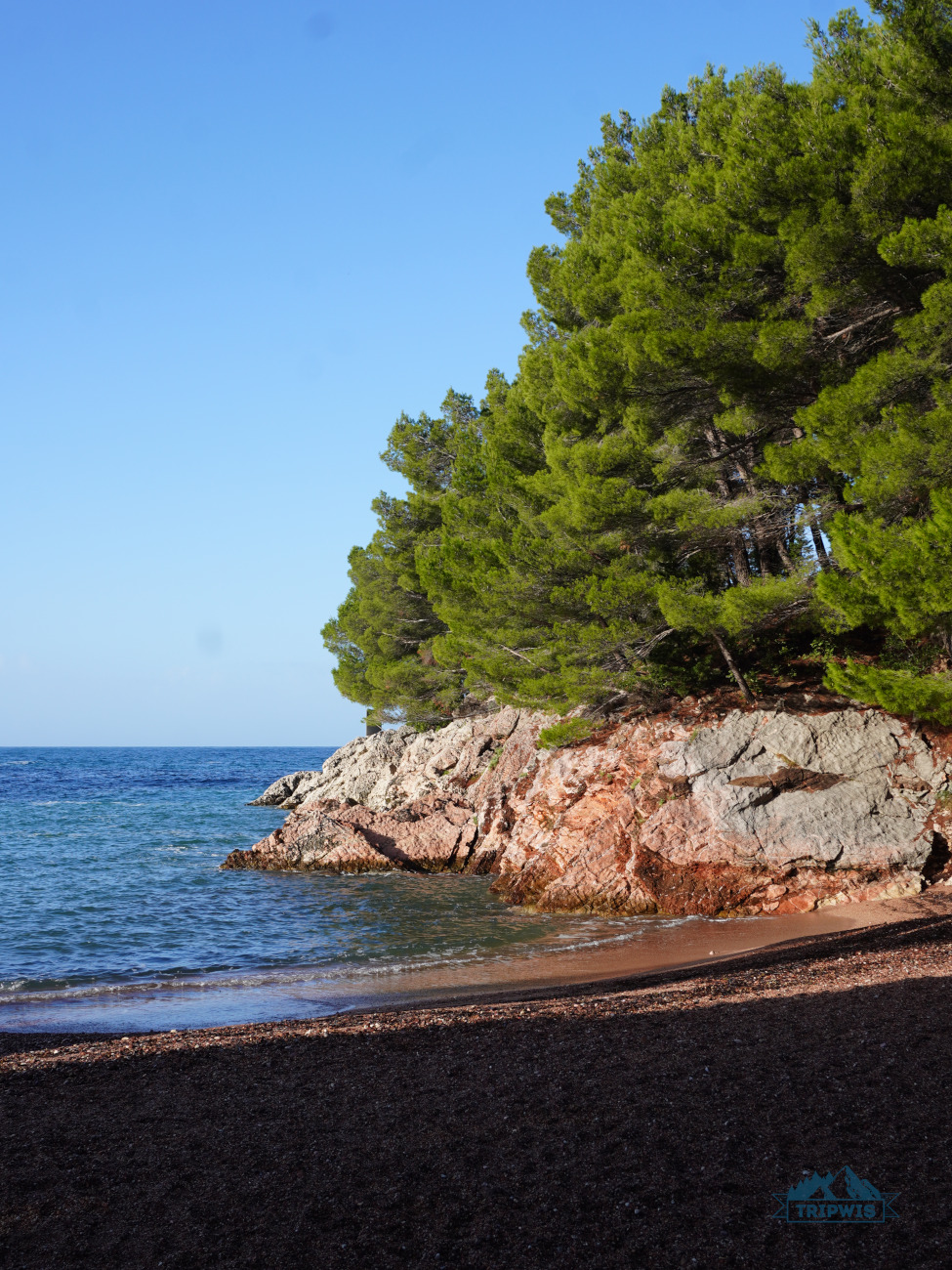 |
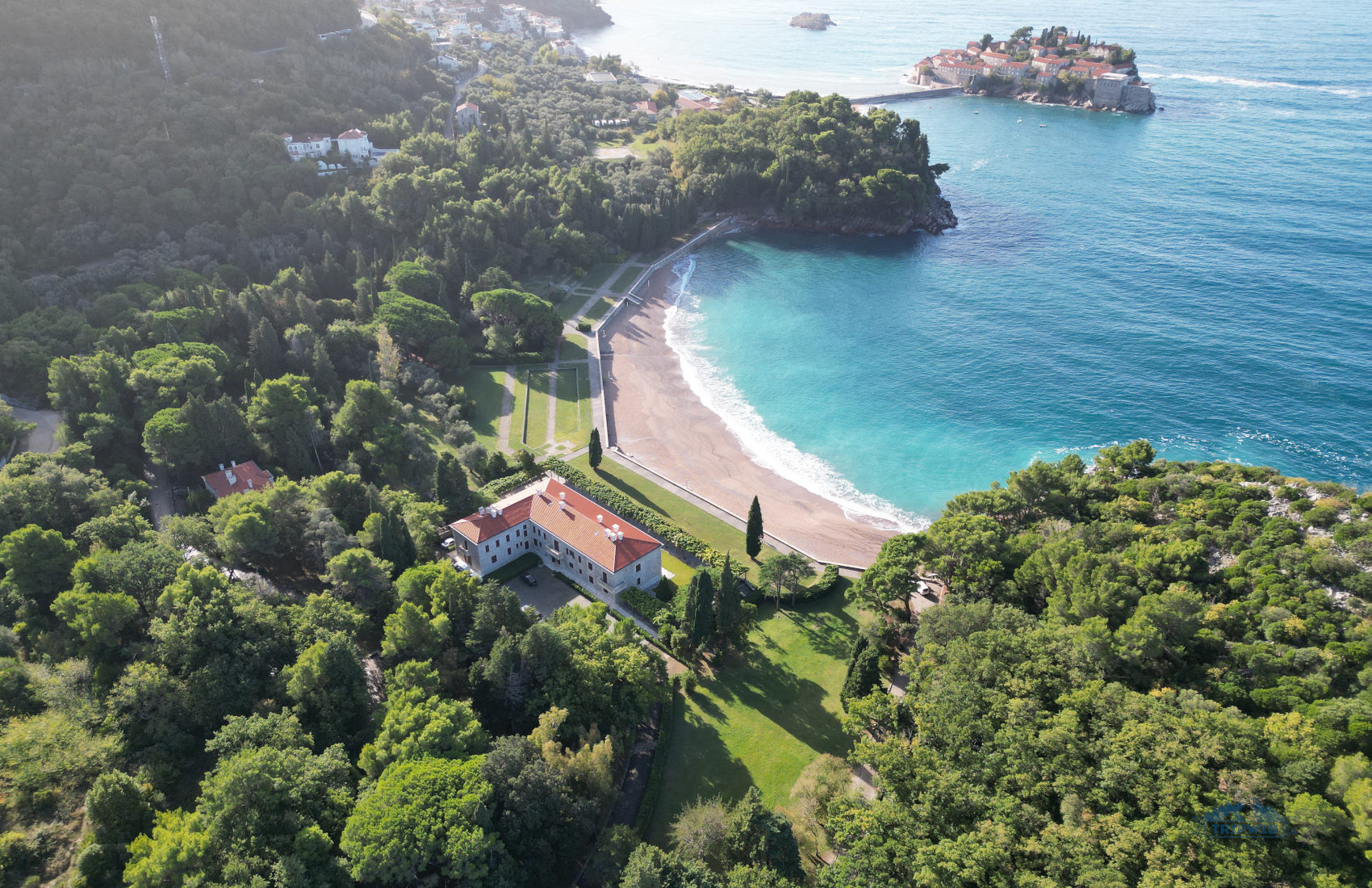
I’d call Milocer a beach for those with taste. It’s far from Budva, so you’ve got to either take a bus to Sveti Stefan or go on a 2-hour-long scenic walk, but it’s worth visiting nonetheless.
Milocer is the beach from all the postcards: Located in a small picturesque lagoon right next to Sveti Stefan — the medieval village in the middle of the sea — it looks otherworldly, almost too good to be true.
The downside? It’s partly owned by Aman Hotel Group, and the sunbed can cost up to €120 per day. Given that insane price tag, if you can afford it (and if you’re willing to drop so much cash, in the first place), you get both privacy and views here.
Legally, no one can make the WHOLE beach private and paid, so if you’re on a shoestring budget and still want to get a piece of the Milocer experience — there’s a small corner of the beach that has no entrance fee. You’ve got to come here early, though, since it’s usually already packed by morning.
Escape to the secret Mogren Beach
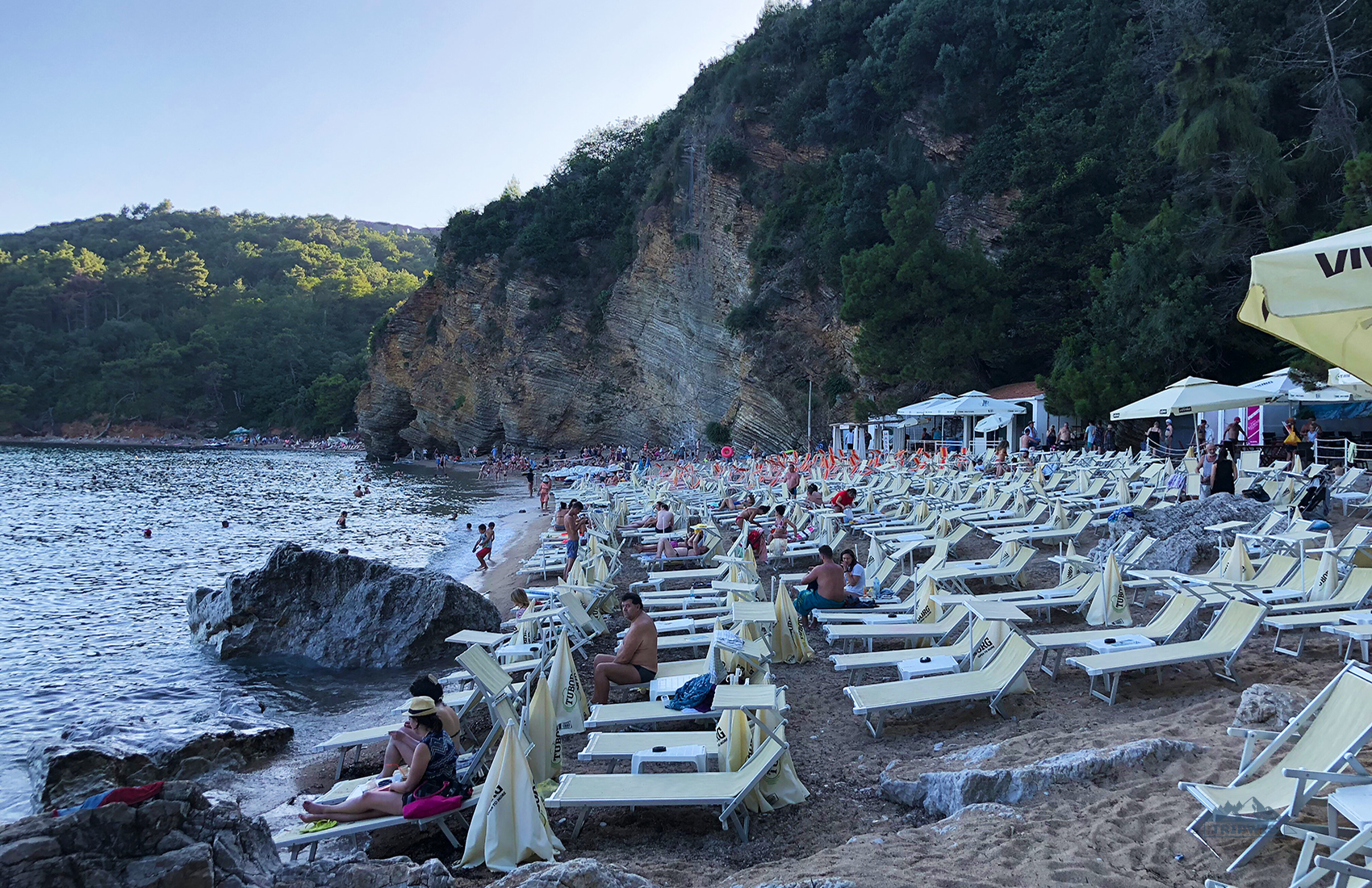

Finally, we get to our favorite option on the list. Mogren is located close to Budva, but it’s almost a secret location for most. It’s the one you see from the Citadel viewpoint, but it’s separated from the city by a mountain.
So, how do you get here? We have the entire path figured out:
- Go to Avala Hotel Beach: right between the Old Town and the Avala Hotel;
- Go right towards the mountain — under the bridge (a large white concrete structure);
- Go through the small gates (keep in mind that the passage is not safe during storms, so if that gate is closed, don’t try to bypass it);
- Follow a narrow rocky trail along the rocks;
- Pass the Ballerina monument (a perfect spot to take a few pictures and marvel at the views of the Old Town);
- Keep following that road until you make it around the mountain.
You’ll see it: Mogren is a fairly large beach. Pebbles are smaller here, one charming cafe is fairly distant from the sea shore (expect to wait longer than usual but keep in mind that you pay for peace and quiet with that time), and most importantly — not that many tourists come here.
Sounds perfect? Wait, there’s more.
- Go through the first part of Mogren Beach and follow the trail till the end;
- Pass through a cave with a tiny lagoon in it;
- Follow the trail for a minute along the mountain until it makes the final turn.
Behind that turn hides the second part of Mogren: The one with even fewer people and way more pine trees. At the end, you’ll see large rocks (don’t try to dive from the top, if you climb these rocks — you’ll see a memorial for those who tried and didn’t survive), and that’s where Mogren truly ends. You get a nice beach, with amazing views, not so many people, and a little adventure on the way.
The only downside is that the local cafe might separate a portion of the shore and put their sunbeds there (paid, of course), but they wouldn’t be able to cover the whole area even if they wanted to.
Eat out at as many restaurants in Budva as possible
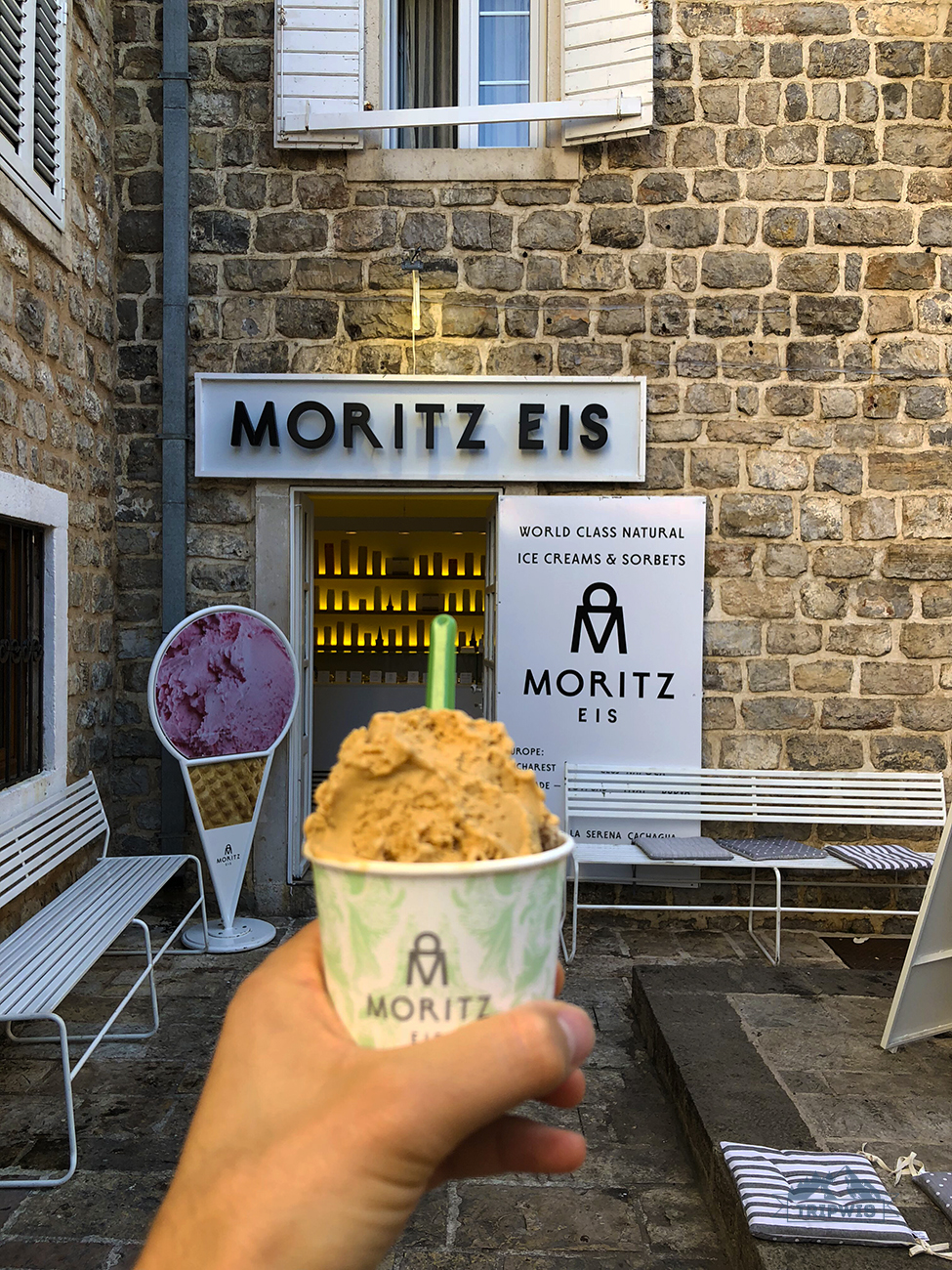 |
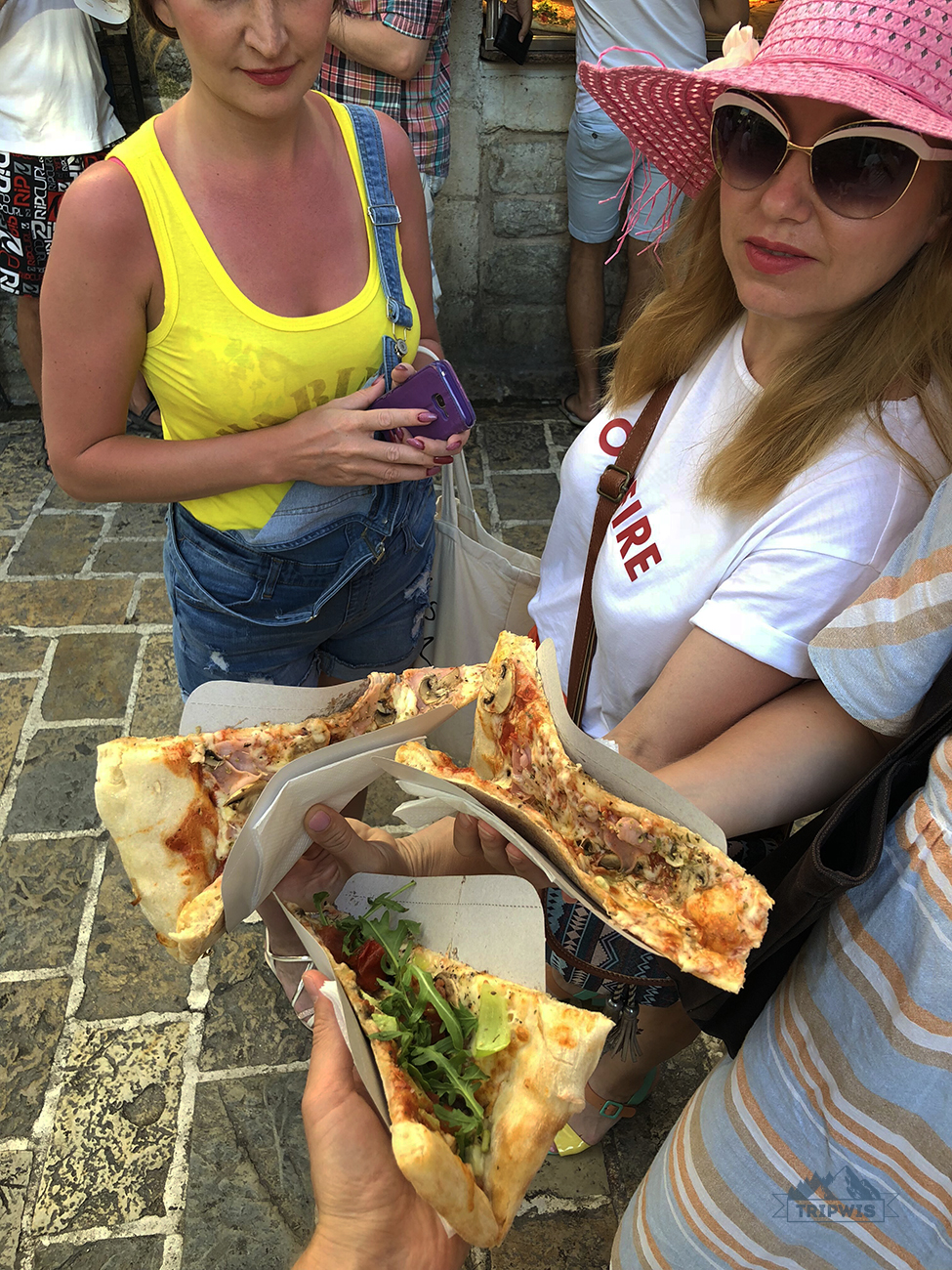 |
Now, after all the walking, you must be hungry. Wonder what food Budva is famous for? Well, we delve deep into the topic in our general Montenegro guide here; but in short, we can tell you that Budva is a true paradise for anyone who likes meat (and likes it in truly absurd amounts), grilled to perfection.
The food scene here is both local and international in a good way: While you can eat exclusively local meals here, your snacks are most likely to be Italian or French, your fast food — Greek or Turkish, and for a change — you can find options from all around the world.
We’ll start with places famous for authentic Montenegrin food in Budva:
Get delicious Cevapi at Parma
Parma is the go-to grill place for locals and tourists alike. It’s been around since forever, and we believe they’re not working any different today than they did 15 years ago.
Slow but relatively cheap, with insane portion sizes, not-so-pretentious, yet cozy interior, it’s a truly Montenegrin dining experience, condensed to two floors (if you count the roof as one, though it might get uncomfortably hot in the summer).
Get anything grilled here and keep the “pol-tonira” (half the plate) option in mind: Whatever you order, you’ll get it in a more than unreasonably massive portion, and you’ll find it hard to resist.
Recover from cultural shock after seeing the size of a gourmet Pljeskavice in Kužina
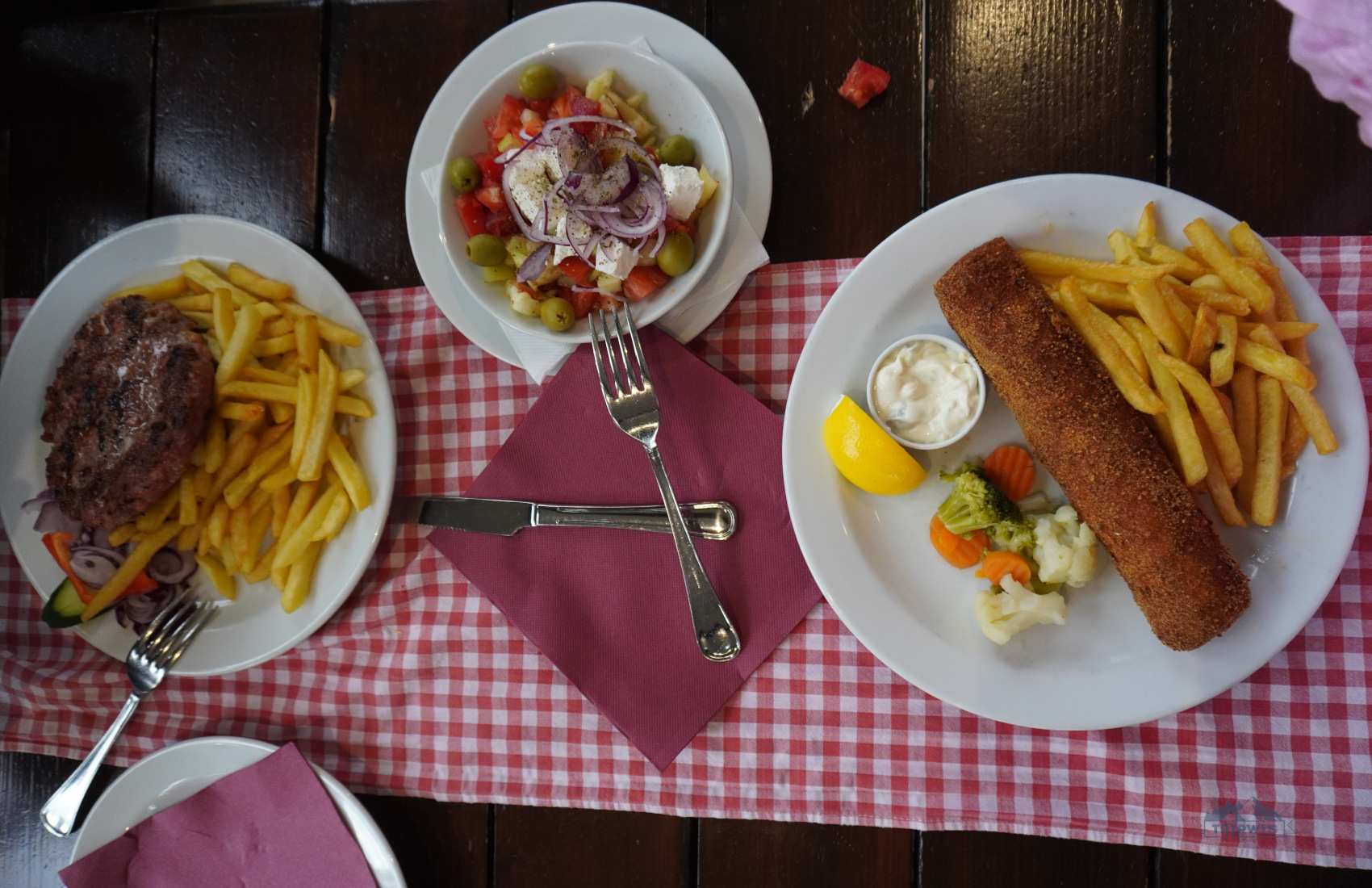
Kužina is probably the first restaurant you’ll hear about when you come to Budva. It’s a place that’s just as famous as it’s true to its original form: A small locally-owned restaurant with traditional food that is not trying to expand, transform, grow, adapt, or anything (and we love it that way).
Despite that laid-back nature, you can order anything traditional here and expect it to be made in accordance with centuries-old recipes. In our experience, this is the best place to get Shopska salad and Pljeskavice (especially the gourmet option, with a different blend of meat in it).
Check what’s the catch of the day is at Tri Ribara
The situation with seafood in Montenegro is… weird.
You’d expect a country with a wide coastline to be a seafood paradise, but it’s not exactly true. Sadly, Montenegro has a narrow strip of the sea under its control, with the absolute majority of the nearest waters being under the control of the Italians (at least they make amazing Cioppino with all that freshly caught fish). Because of such an arrangement, almost all local fish comes from overseas.
Almost all, but not ALL of it. And you still can get a nice fish meal in Budva. The go-to place is Tri Ribara restaurant (the three fishermen).
Located right on the riviera, they own a small fleet of fishing vessels and cook the fish they themselves catch every day.
Try to comprehend the mammoth portion sizes at Zeleni Gaj
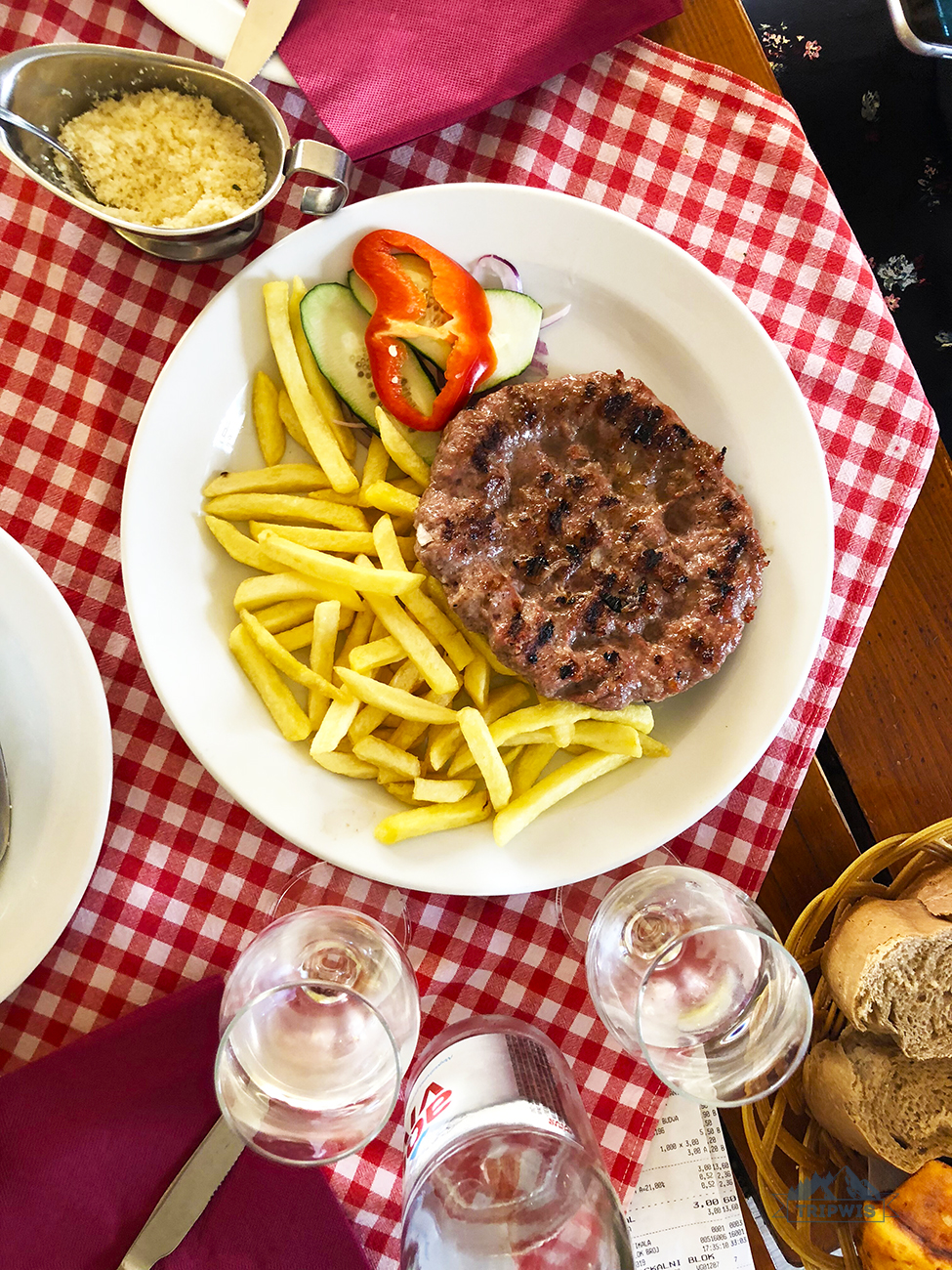 |
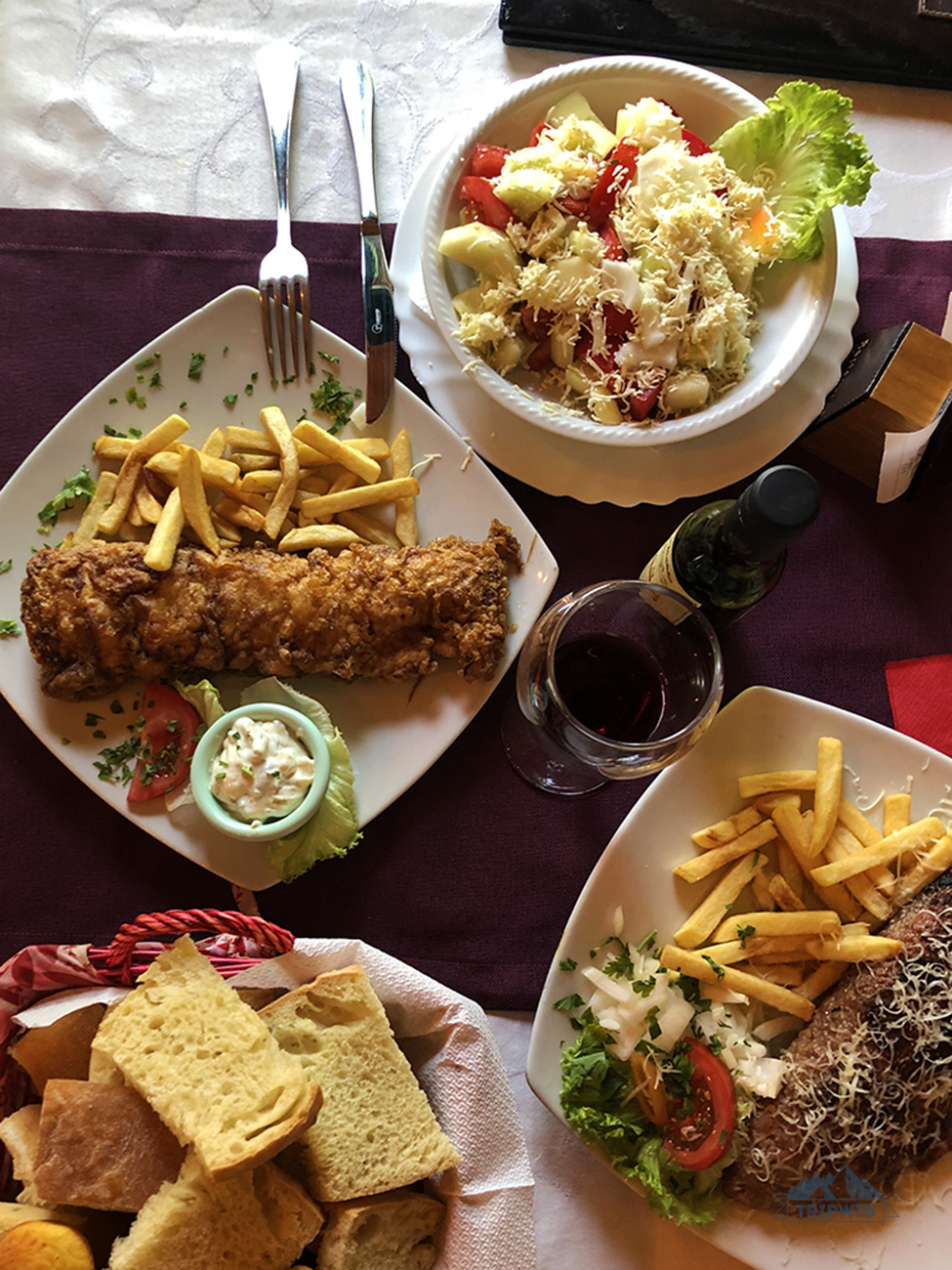 |
Zeleni Gaj was the very first place we went to upon our arrival here 1,5 years ago, and I won’t ever forget the shock I experienced when they brought my pasta to the table.
I’m used to European standard portion sizes, when you get a massive bowl with a single twirl of pasta in the center. So when I found a normally big bowl FILLED TO THE BRIM with pasta right in front of me, I went through a rollercoaster of emotions. That gargantuan pasta dish was amazing, and kind of set the tone for our culinary adventures here.
Explore a local take on Chinese food at Shanghai
You don’t necessarily think of Chinese food when it comes to Montenegro, but this eatery is surprisingly good at it.
Not traditional in any way, with local takes on some authentic Chinese recipes (almost as if trying to put Pršut in at least some of the dishes was a challenge they’ve accepted), Shanghai takes a risk that pays off 100% of the time — their menu is exciting and inspired. Also, they’re located right between the more luxurious part of the Budva marina and the Old Town walls, so whatever you get — you get it with a view.
Have a fancy breakfast at Hemingway
Sometimes, you get tired of local laid-back coziness, and want something fancier. Hemingway is the perfect place for that.
Owned by the 4* Majestic Hotel (from €190 per night), it’s a nice European restaurant and bar that locals and tourists both like. It’s a bit more expensive than other options around, but at Hemingway, they do care about their menu and try their best to keep the service on point. Also, it’s probably one of the best places for breakfasts in Budva.
Watch your pasta being hand-rolled on the spot at La Mia Pasta
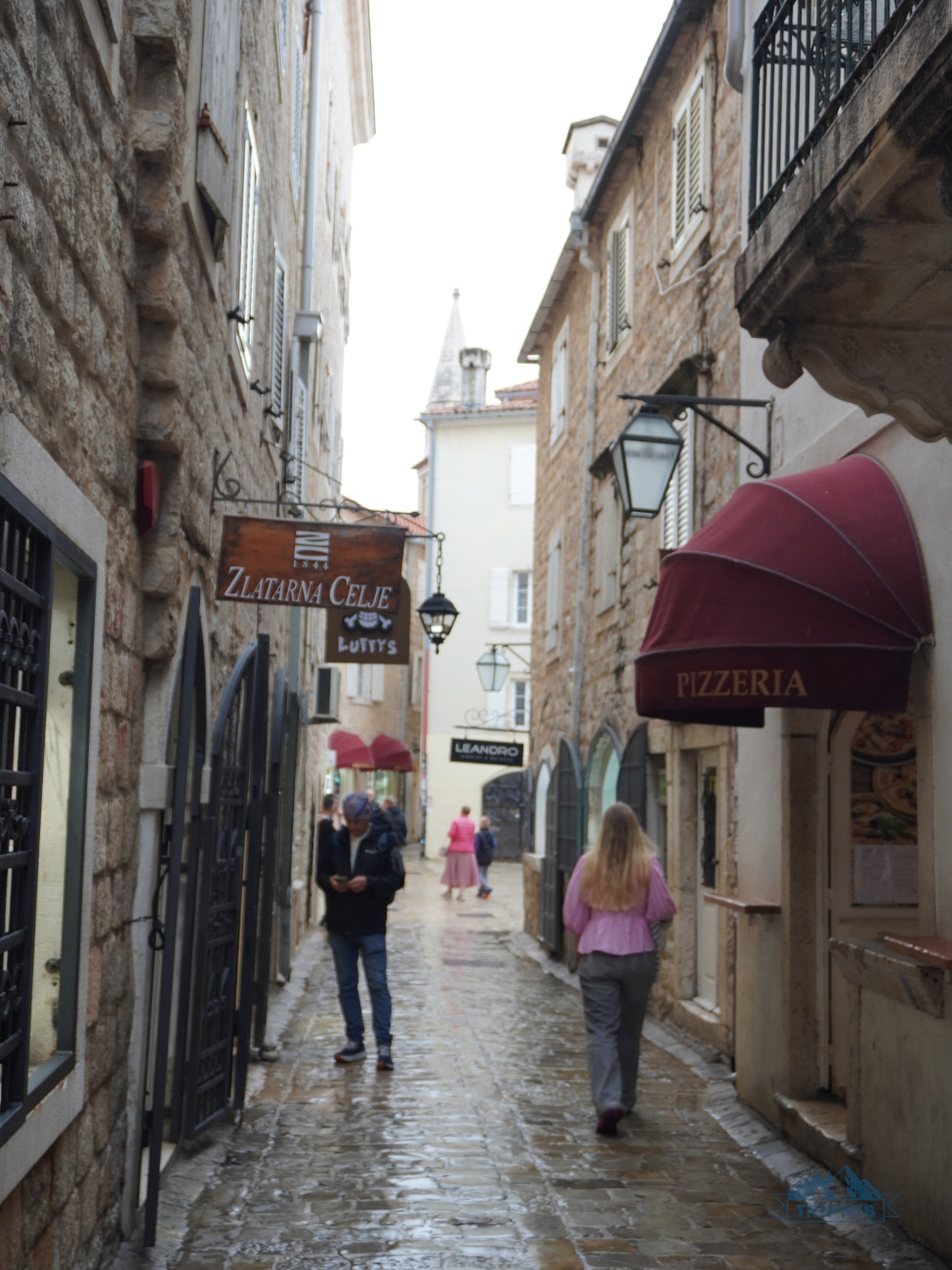 |
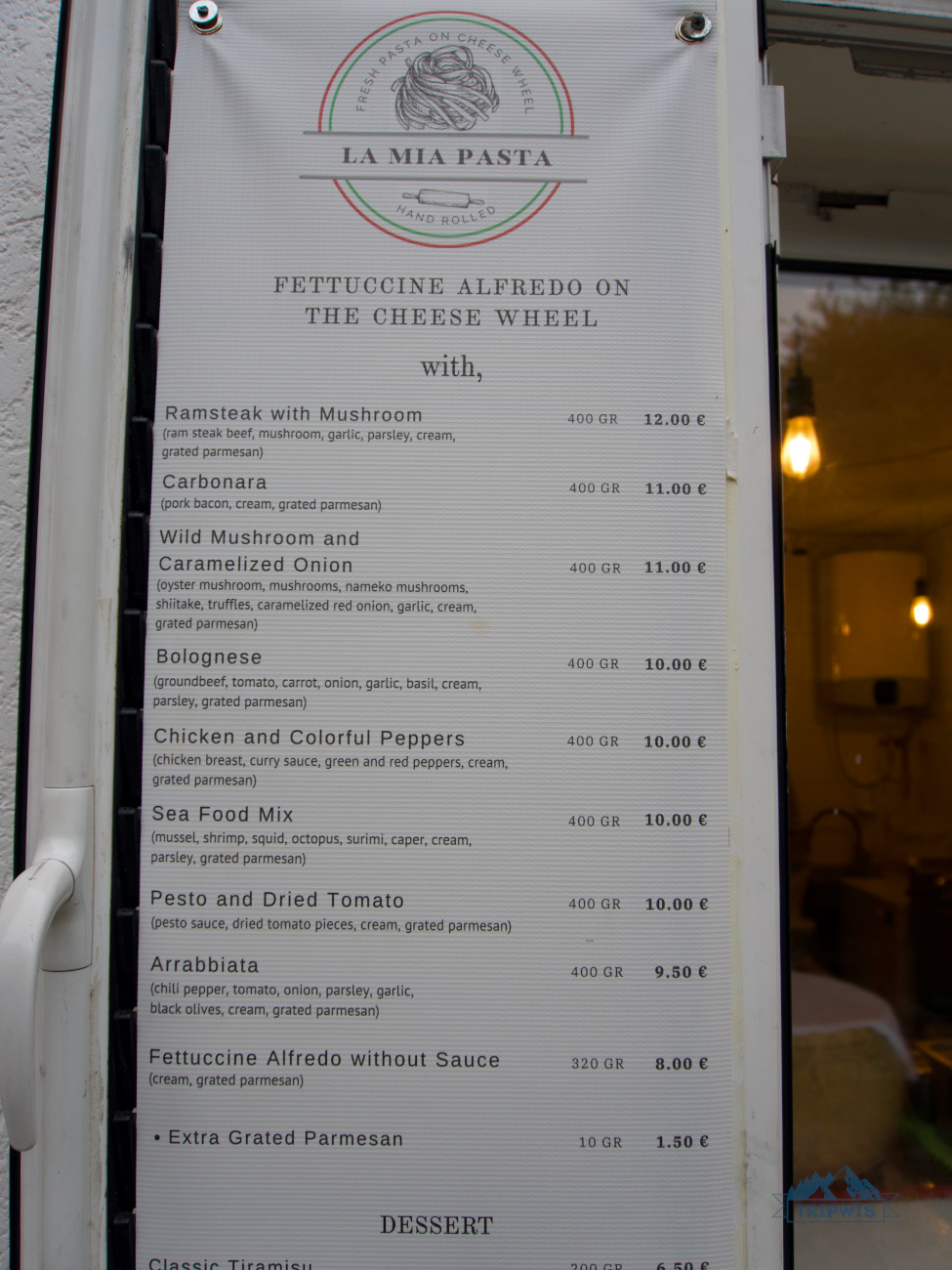 |
When you don’t have much time to sit and wait for the waiter to take your order, and just want something tasty but not in the realm of fast food, La Mia Pasta is the place to consider.
It’s set on a small corner, next to a bar, near the Gvozdena Gate of the Old Town. They don’t have an extensive menu, and — surprise, surprise — make great pasta. These gluten-forward taste bombs are hand-crafted right in front of you, dunked in a giant wheel of cheese, and packed in small containers with a whole list of extra toppings to choose from (YUM!).
Try all the desserts at La Creme (impossible)
This eatery is often overlooked by tourists since it’s a little far from the beach, but if you have a sweet tooth, the go-to place is La Creme. In fact, it’s a fairly big, fairly expensive restaurant for locals in the middle of the city on the Jadran highway, but it’s not the fish or meat that it’s famous for.
Enter the place through the side door, and you’ll see a dessert bar: That’s what they’re best at. All sorts of cakes, cupcakes, brownies, ice cream, — the mind reels! Reasonably priced and served fancily, these desserts are more than worth the walk, and are definitely worth adding La Creme to your itinerary.
Cool down with ice cream at Goddo or Moritz
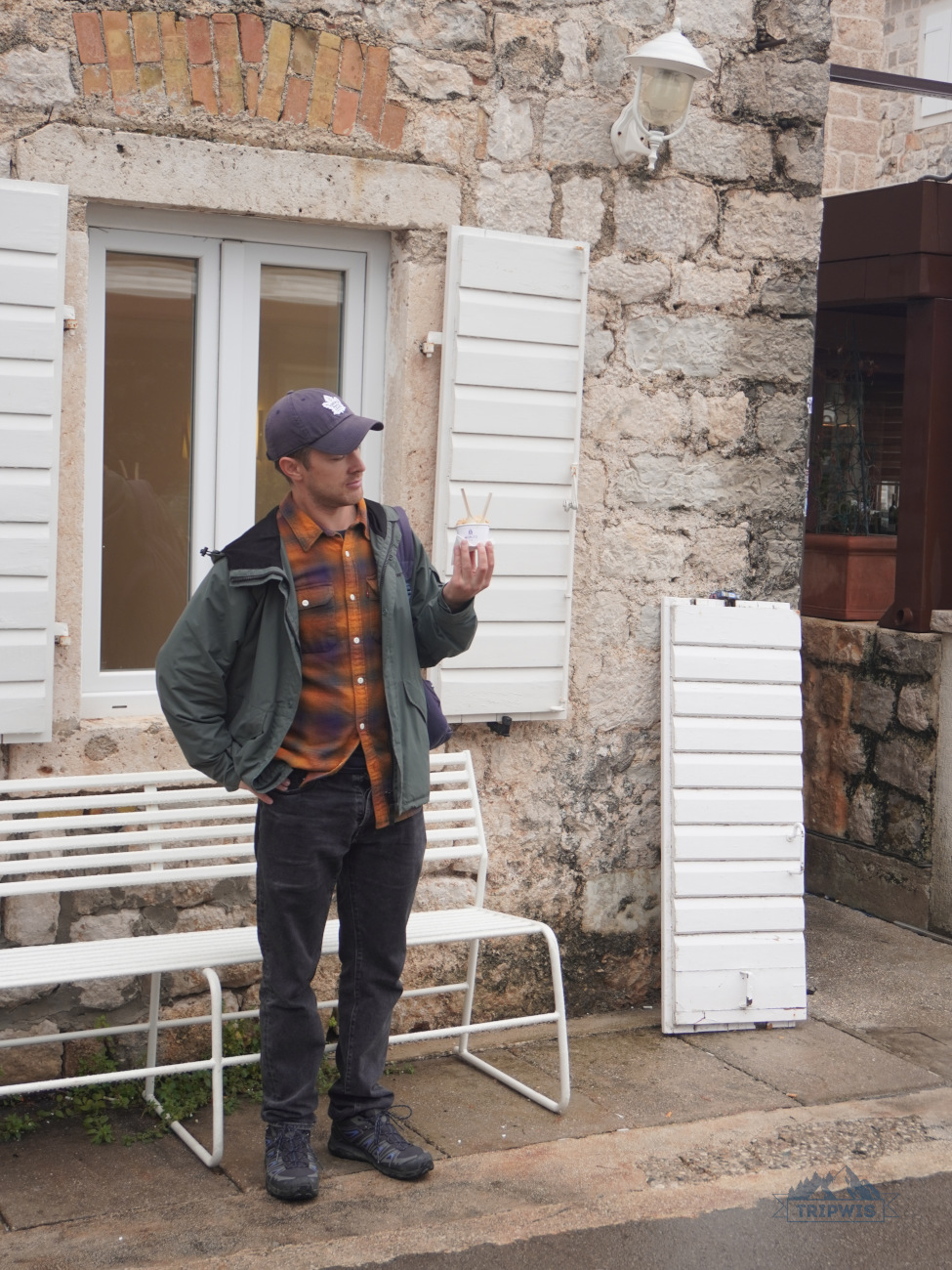 |
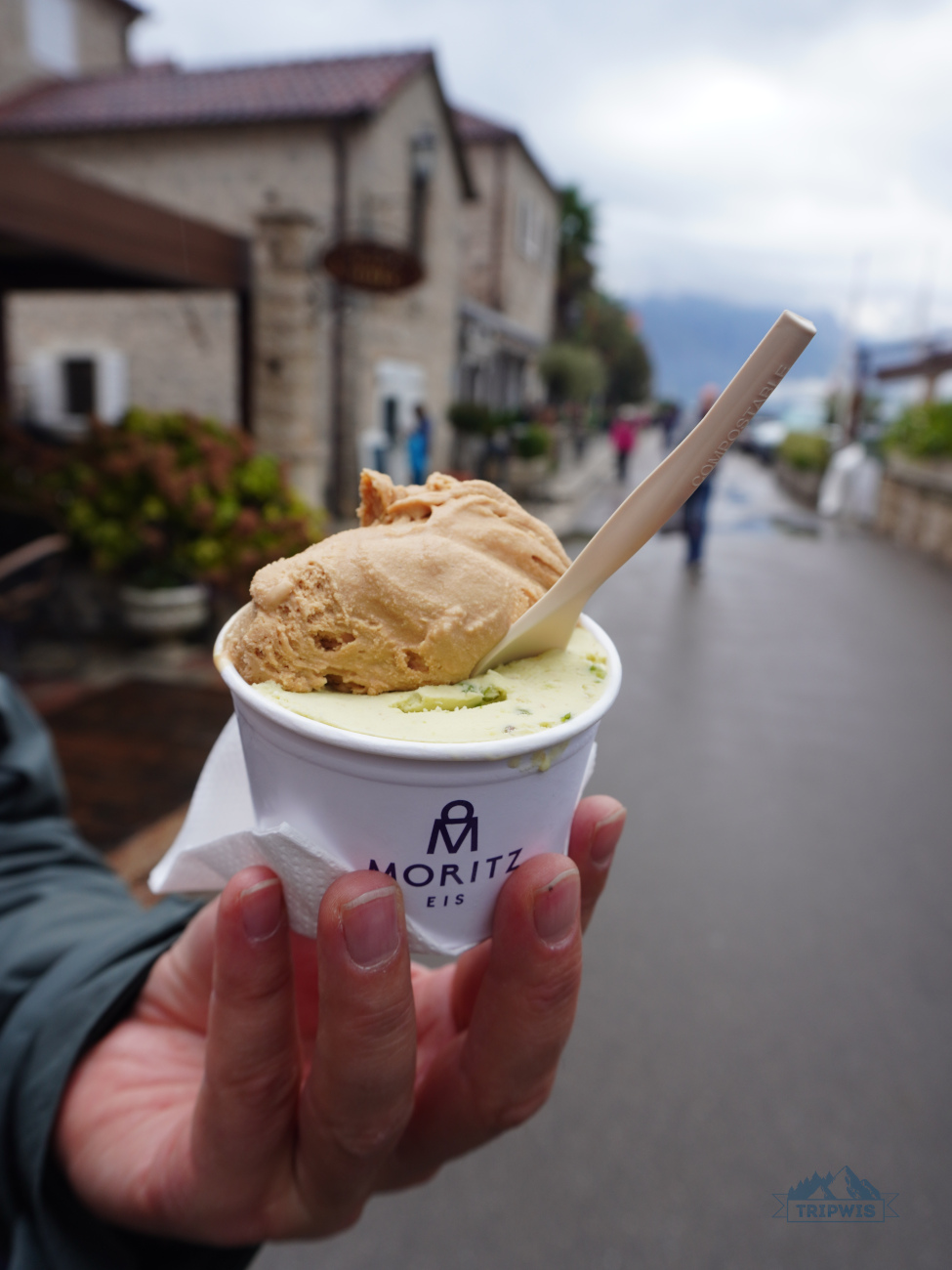 |
On a sunny day, it might get too hot for pasta or cakes. Montenegro is not exactly famous for sladoled (ice cream), but there are two places to visit in Budva if you want your ice cream to be churned just right:
- Goddo — makes gelato and ice cream, glazed in chocolate from their in-house chocolate waterfall (a delightful sight);
- Moritz — the go-to place for a sorbet on the go, with 20+ tastes to choose from. Just what you need on a particularly sunny day in Budva!
Find the best coffee in Budva
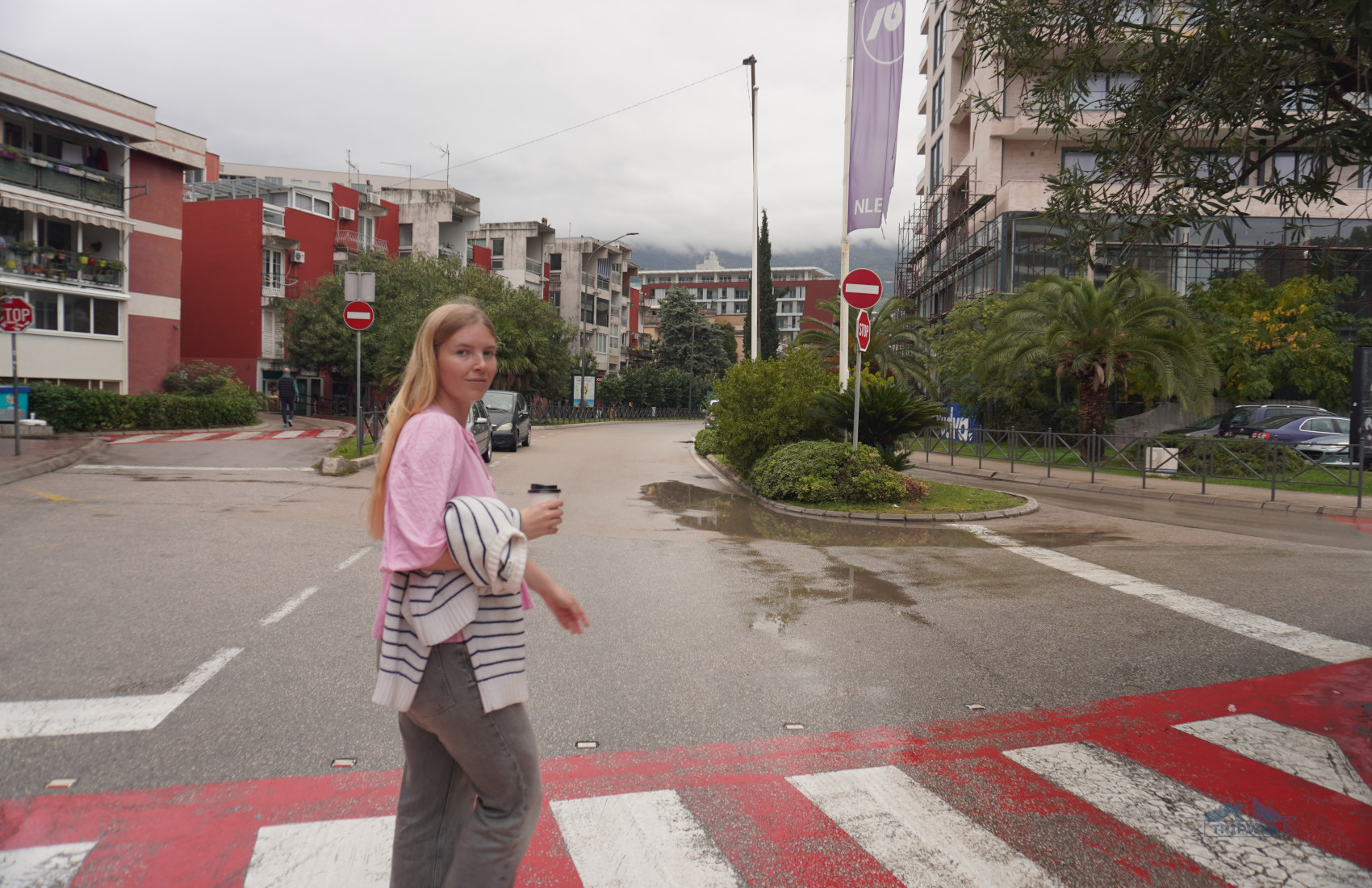
OK, so you know where to eat in Budva. Now let’s move on to coffee! It’s not all about food anyway!
Keep in mind: There’s no Starbucks or anything like that around here. And given that Montenegrins prefer their coffee small, cheap, black and generally simple, finding a decent place with specialty coffee in Budva might be a challenge.
Well, at least it used to be like that 2-3 years ago. The only real challenge nowadays is choosing the right place for your mood. We’ll start with local coffee heavy lifters.
Hide in the shade of olive trees at Casper
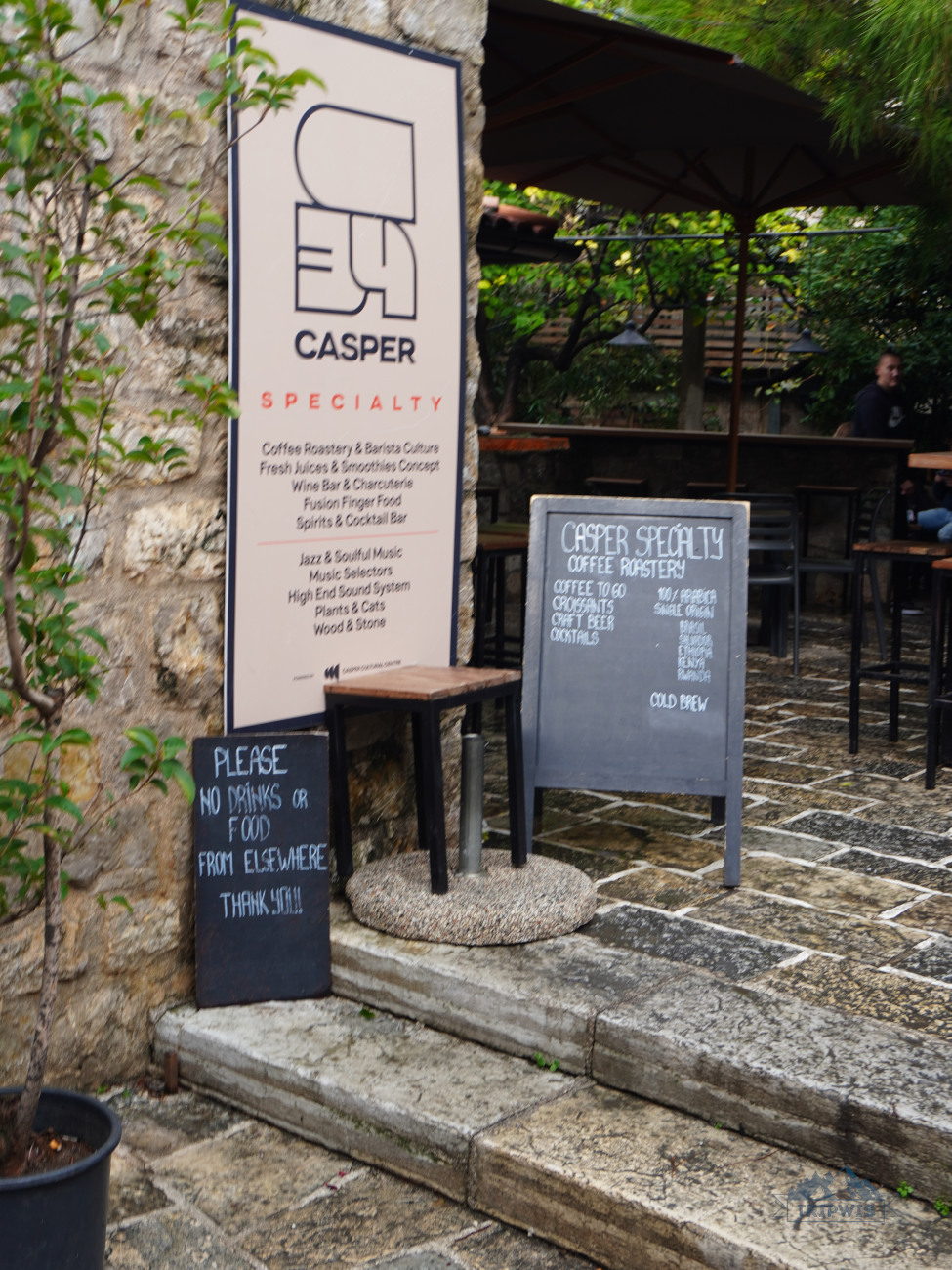 |
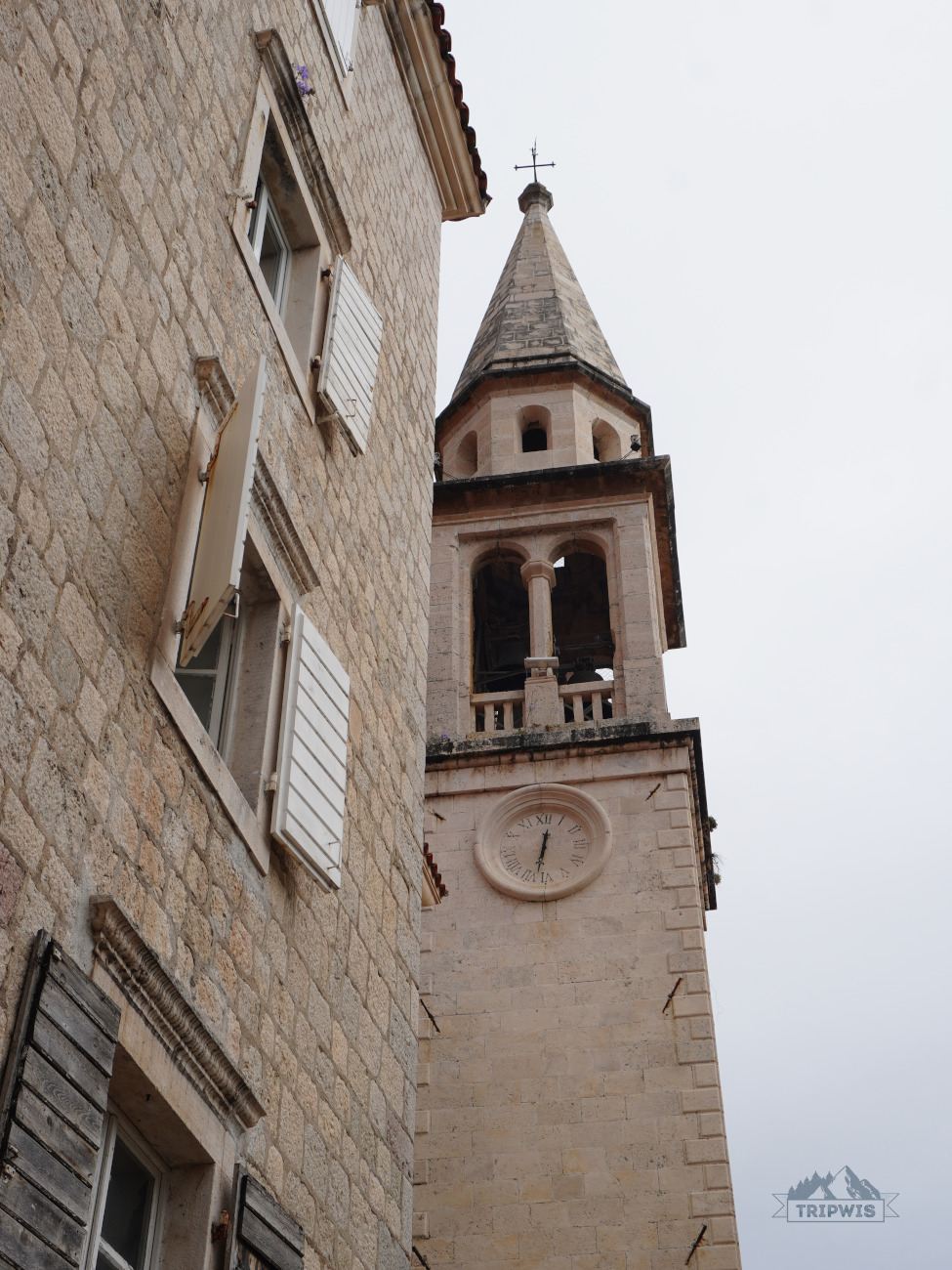 |
It’s one of the fanciest coffee shops around and the one that every single online guide mentions. For a reason, though: The place has been owned by the same family since the 1980s, and they keep the service top-notch no matter what. A variety of blends, small but tasteful snacks, and a pleasant setting in the middle of the Old Town make Casper a worthy stop on your Budva itinerary.
At Casper, you drink your coffee al fresco, so it’s not the go-to place during the rain, but it’s perfect on a sunny day. You can hide between old olive trees and expect the best from your coffee here.
Get the best macchiato of your life at North Coffee Shop
North Coffee is also located in the Old Town (walk straight from the Pizanella gate), but it’s owned by a Turkish family, and we have to say — they bring the best Turkish coffee traditions to Budva. It’s also a geek-friendly area that is clad with references to the Lord of the Rings on the walls and a nice classic rock playlist on at all times.
If you decide to go here, please, don’t bother the cats: They live at the cafe and suffer from hardcore PTSD after every summer (imagine being a cute cat in a high traffic area, with dozens, if not hundreds of kids trying to pet you every single day).
Walk deeper into the city and get a full specialty experience at Oliva
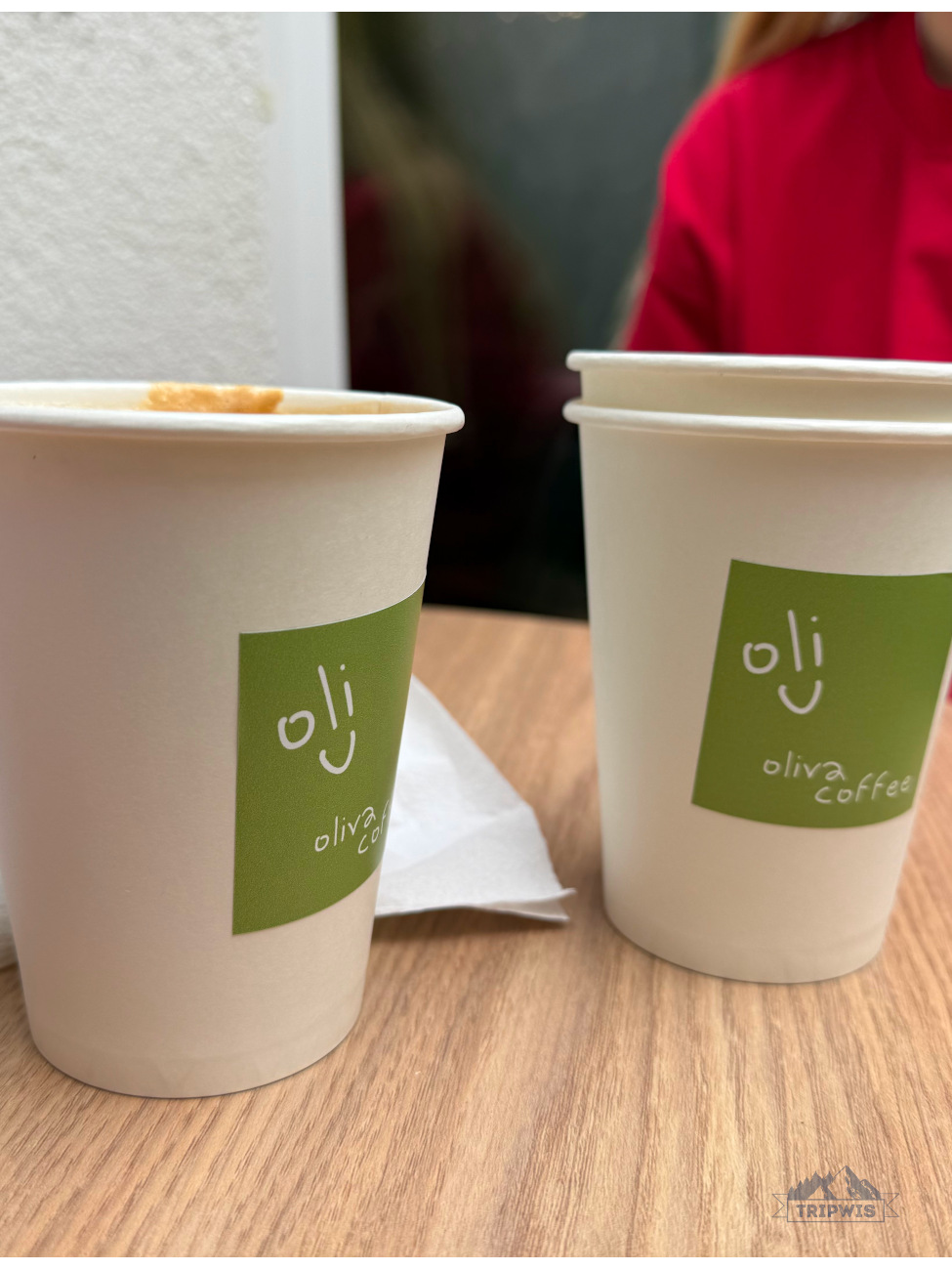 |
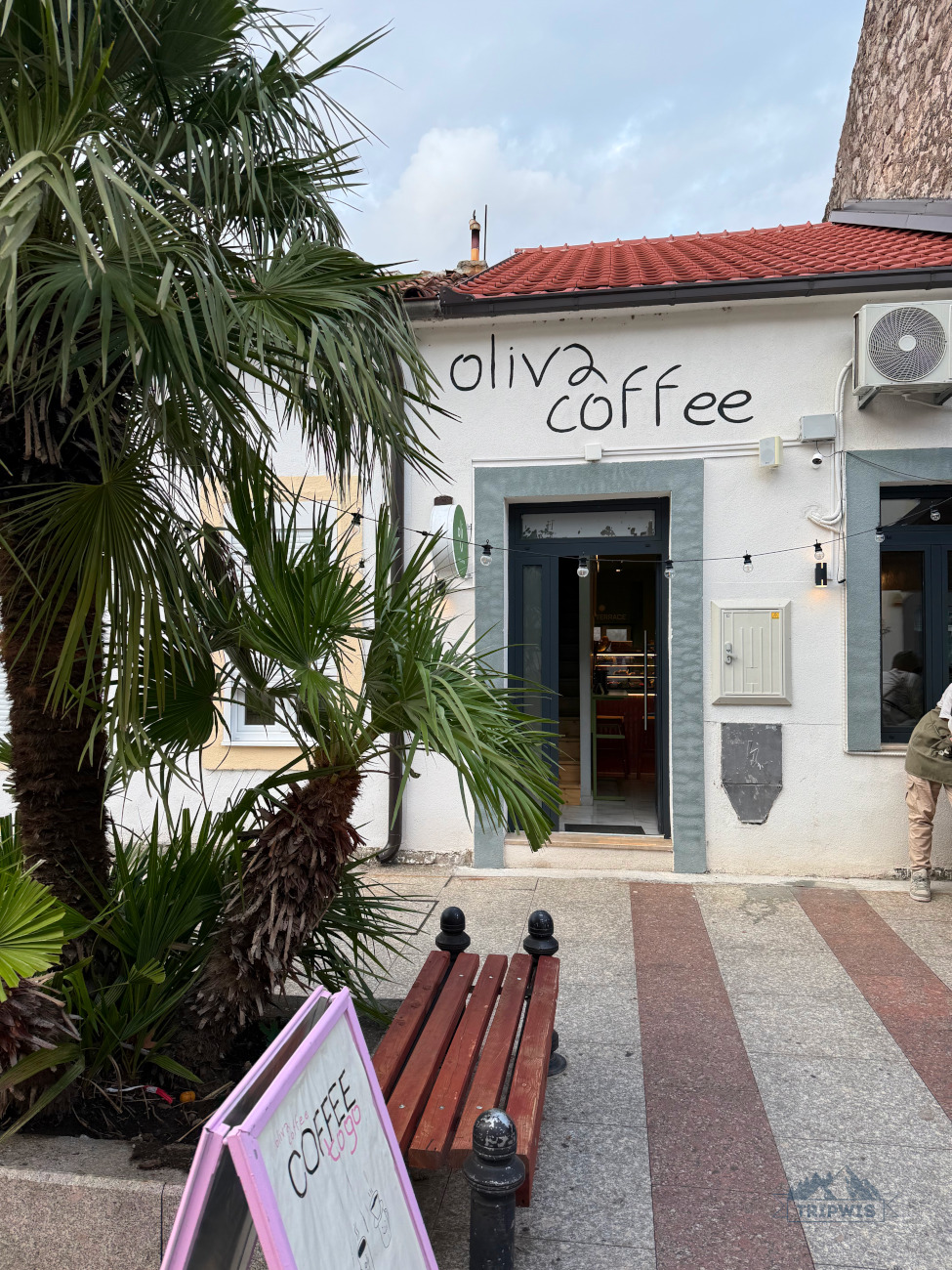 |
Opened just over a year ago, Oliva is probably the closest you can get in Budva to a Starbucks experience (although with actually good coffee).
With a small indoor space and a large outdoor area, it’s chill, relaxed, and usually packed with either groups of friends or people with laptops.
The only downside is that Oliva is a 20-minute-walk up the hill from the beach, set in a more residential area.
Just listen to good music at Akacia
Originally, it existed as a tiny space in Bečići, in the Akacia apartment block (hence the name). However, now they also have a spot in Budva — almost on the Jadranski put (the city’s main highway).
It’s a go-to place for those who are into techno playlists, decaf, alternative milk, and other things of that nature. Minimalistic interior and an abundance of power outlets make it a good place to work if you suddenly have some urgent task to complete but can’t do it in your hotel room for some reason.
Try to choose between More and Cups
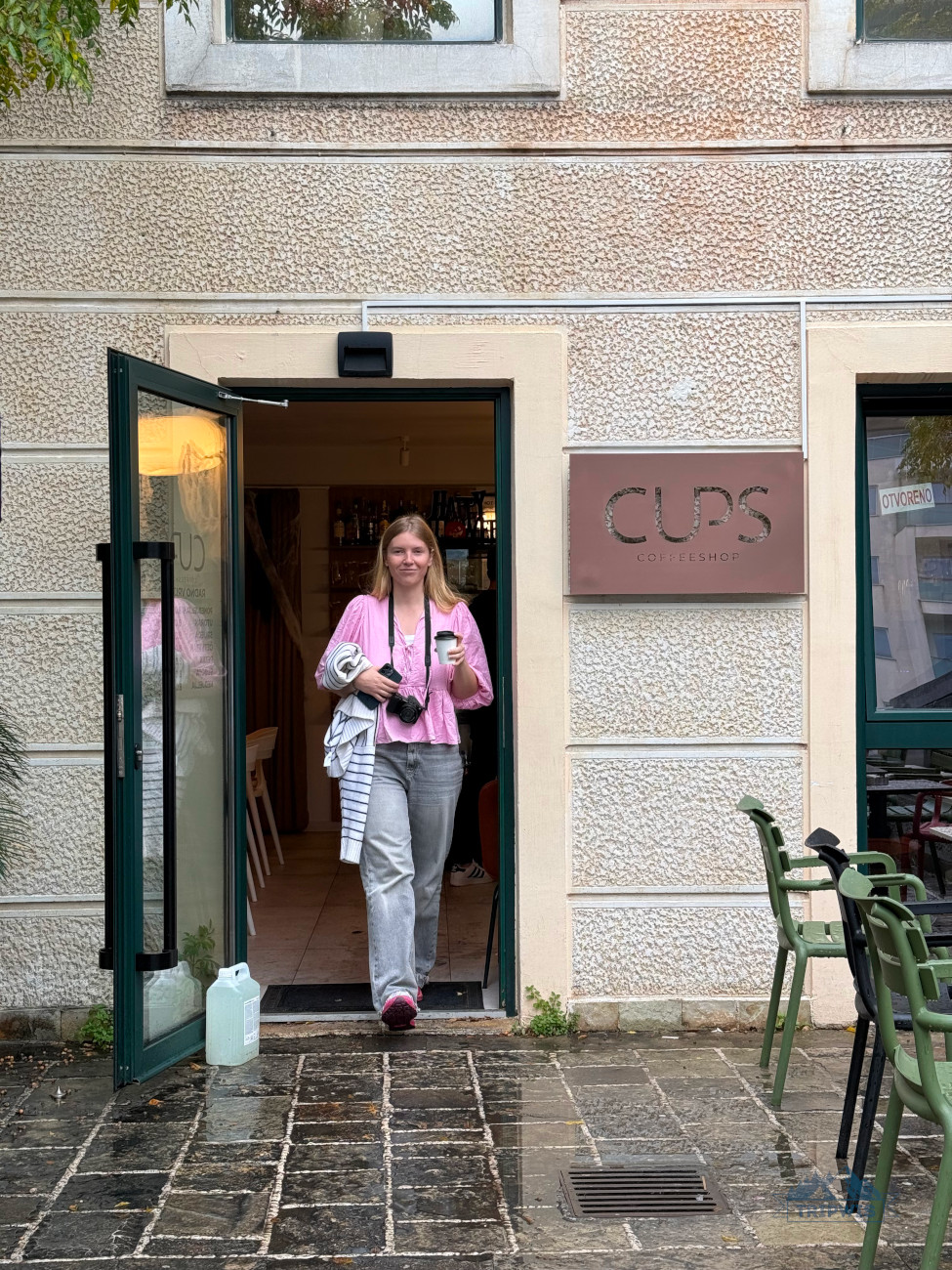 |
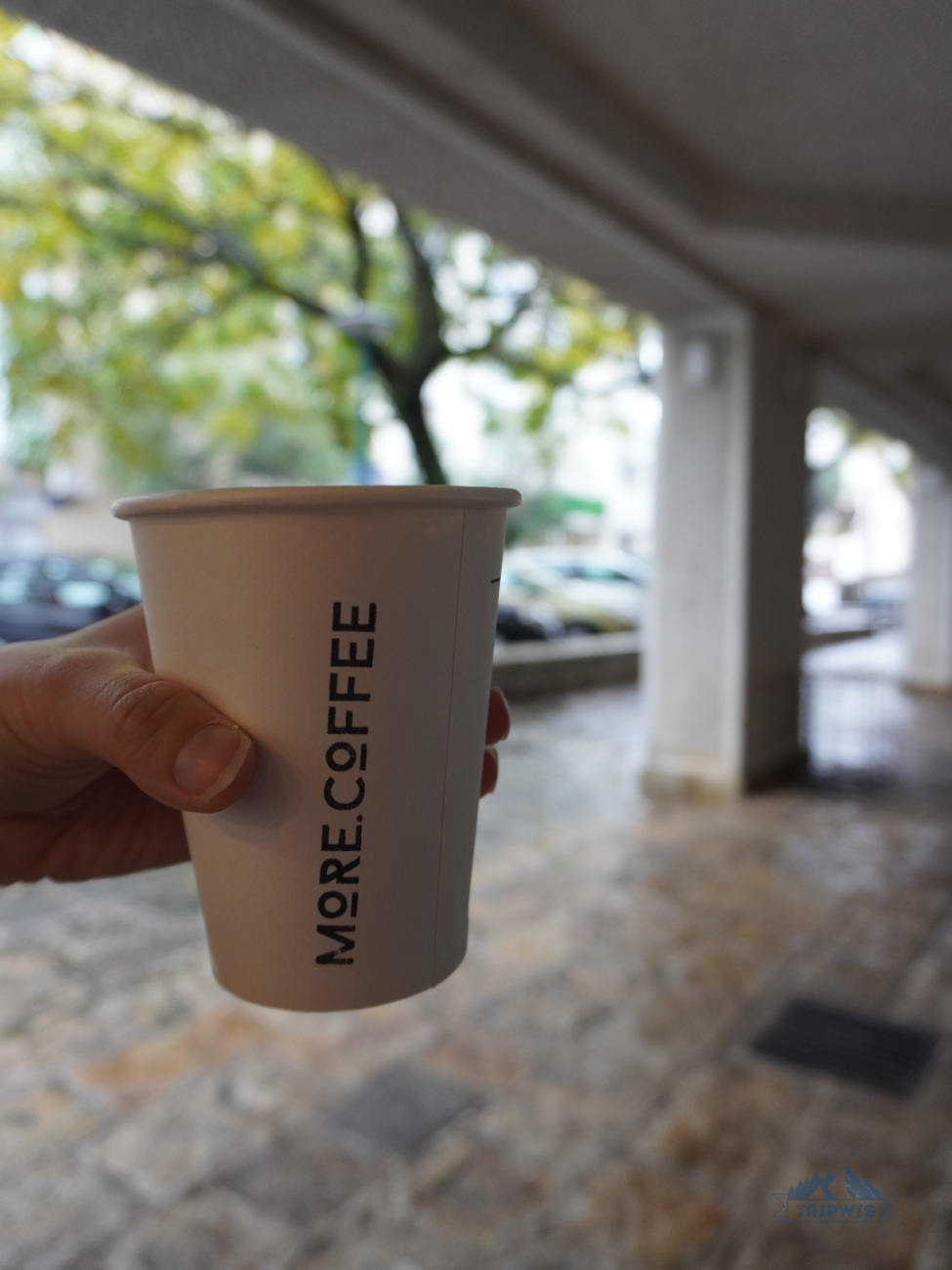 |
These two are located right behind Budva’s main shopping mall, TQ Plaza (it’s smaller than an average Walmart and has little to no decent stores, so we won’t even mention it among other places of interest).
These two coffee shops don’t get their own separate parts because they’re literally located next to each other.
- More — a trendier option with a nice playlist and great seasonal menu items (think spearmint iced latte, pu’er tea, halva raf, and so on);
- Cups — a more family-friendly option (meaning they have some toys for kids, as well as bigger tables), with another great seasonal specialty menu and a slightly more interesting interior.
Both are rather popular now, so practically, if you get here and don’t get a table at More — you can go to Cups, and vice versa.
Get a taste of nightlife in Budva
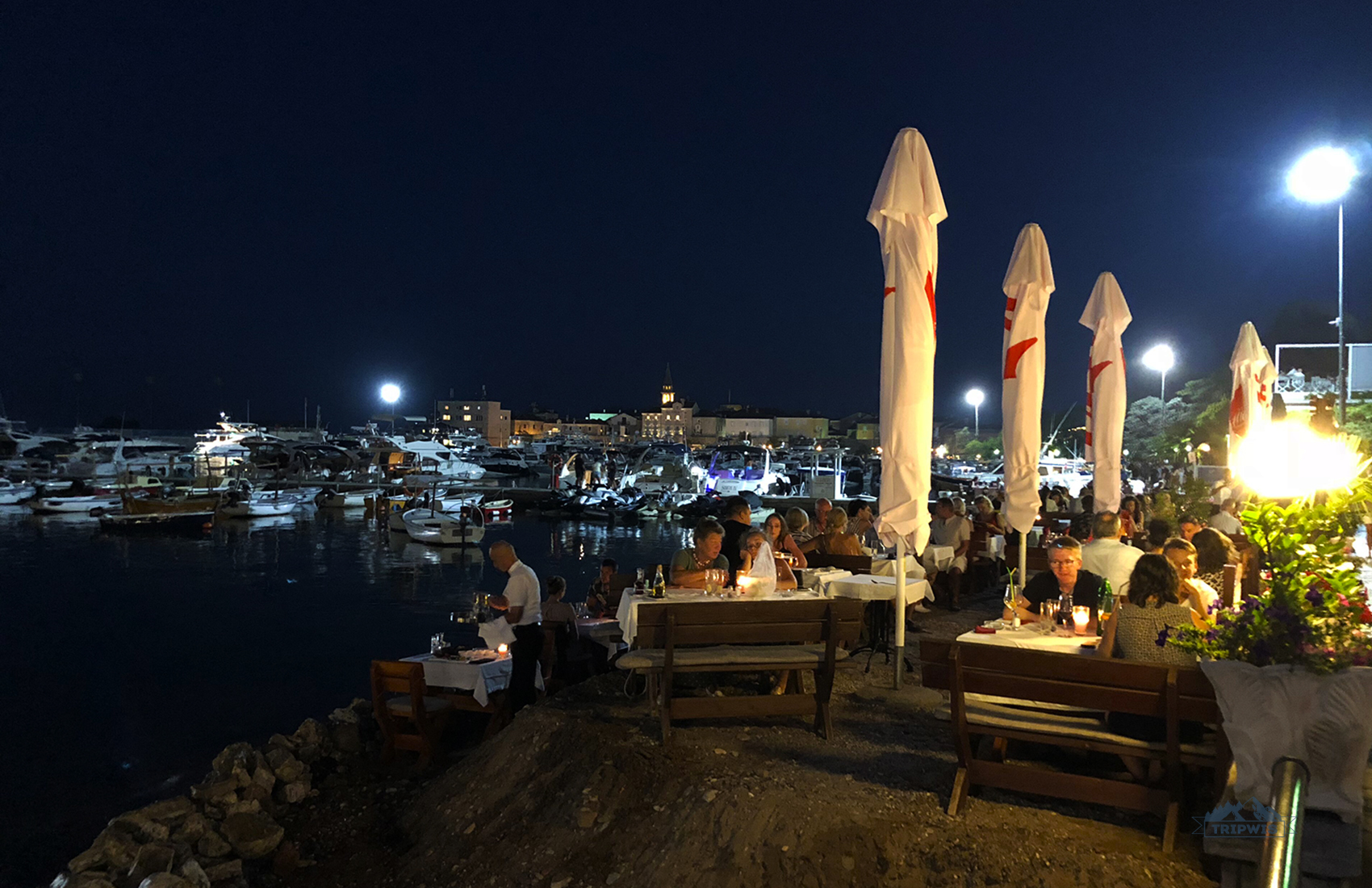
As one totally drunk local guy once told me, “for nightlife — go to Podgorica”. The truth was in the wine, literally: There are barely any decent night clubs in Budva, especially if you have some experience under your belt to compare the local sites to the ones in, say, Ibiza, Berlin, or anywhere else.
Still, there are some places to go if you’re looking for things to do in Budva at night or feel particularly adventurous at 2 a.m. on a Saturday:
Get a taste of local EDM at Omnia
Omnia is the place where most local DJs perform. No internationally recognized superstars, no top-notch mixology, and yet — a crowd and a sound system cranked to the max create the aura of state-of-the-art entertainment. Located right behind TQ Plaza, it’s responsible for 90% of all the posters in the streets. And mind the opening hours: They might be unpredictable.
Get to the very Top of the Hill above Budva
Top Hill is THE club to go to (at least according to local nightlife experts) in Budva. More expensive than other options, with all-night parties and a never-ending river of alcohol, it lures party goers as if they are moths flying to a very exciting flame. It does it quite literally: If you chill somewhere by the beach at night during summer and see two beams lighting up the sky — it’s Top Hill, attracting the raving crowd.
Suit up for a dinner and a cocktail at Perla
A fancy option with a massive bouncer at the entrance; Perla also serves as a restaurant during the day (and it’s one of the best places to eat in Budva as well). It’s the closest nightlife place to the Old Town, but keep in mind that it’s not always open to the public or free to visit: Sometimes it’s reserved for private parties and concerts.
Hang out with bikers at Krsto’s Jadran
Jadran is a nightlife experience for those who can’t stand electronic dance music. It’s a biker bar (quite literally; it’s owned by one of the local biker community leaders), and it’s one of the very — very — few places that are open after midnight in Budva every day.
Live music (mostly rock and local bands), cheap beer, quirky tables (one made from an old Harley Davidson bike, one that looks like a Mini Cooper, and so on), shameless chaotic abundance of road signs and plates on the wall… you get the point: It’s a biker bar. It’s safe, though, and quite popular among tourists.
Get active — sports activities in Budva
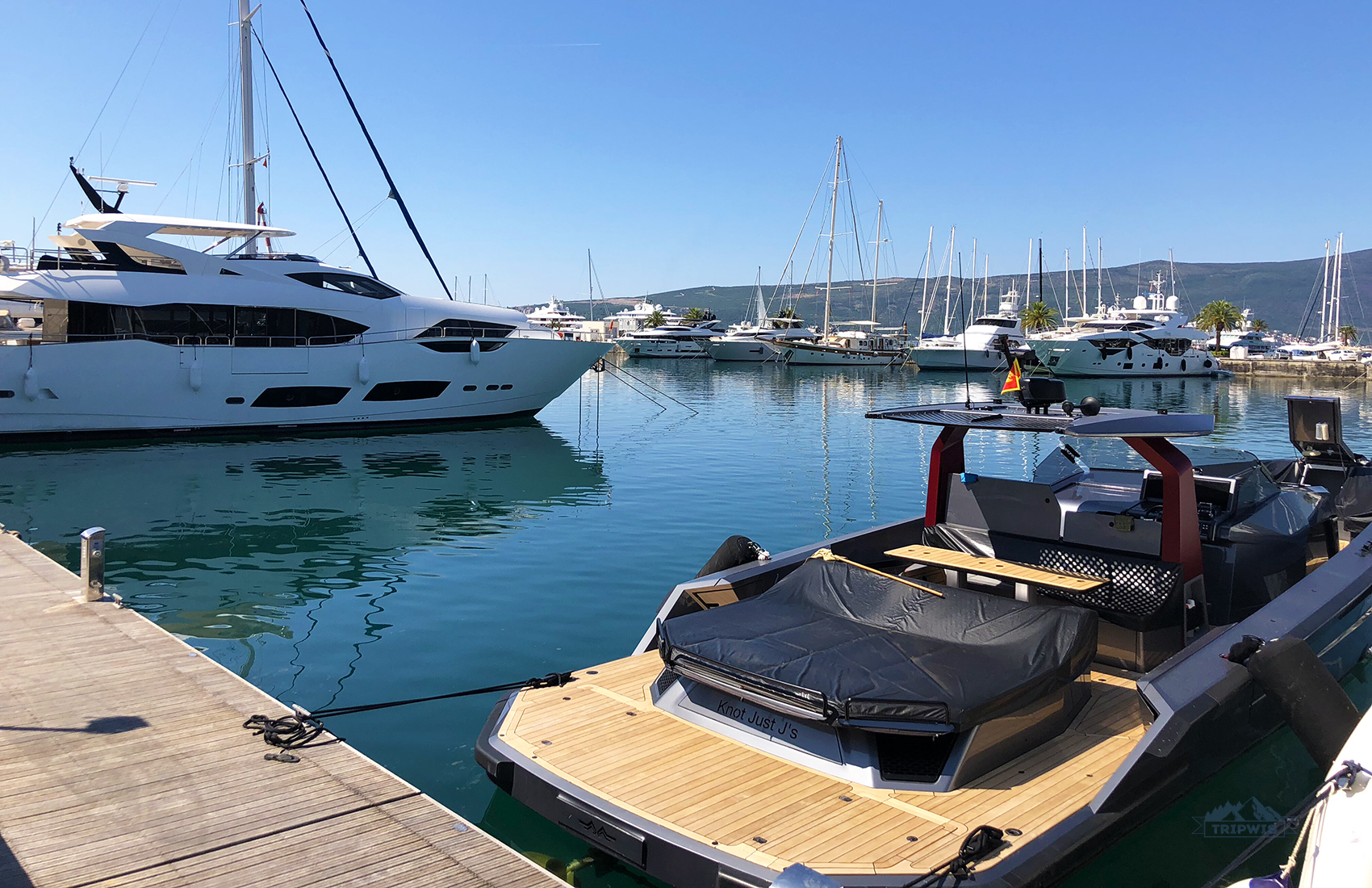
If you’re not exactly a wine-and-dine type of person and don’t consider life between adrenaline spikes truly a “life”, or if you just want to spend your time in Budva in a less relaxed way, there are plenty of options.
While hiking is definitely the most popular way to spend your time around these parts (and we’ll get to that later), here’re some other things you can do in Budva:
Fly to the beach with paragliding tours in Budva
Sailing from the top of the mountain above the city, with wind in your ears and nothing but the sky around — does it sound exciting to you?
If yes, then Bečići is a perfect base for this activity. There’re plenty of companies that offer paragliding tours in the area, though most of them, if not all, use the steep 760m slope of Brajići (right above Bečići) as a starting point and land on the beach in Bečići, right by the sea.
Note that almost all flights, unless you’re an expert with certifications to back your skills, are tandem flights: You’ll have an instructor behind you to make sure everything’s OK.
The prices are largely defined by the season, and if you plan on paragliding in Budva during summer months, it’ll cost you about €125 for a 20-minute flight.
See the Adriatic Coast as seagulls see it while parasailing
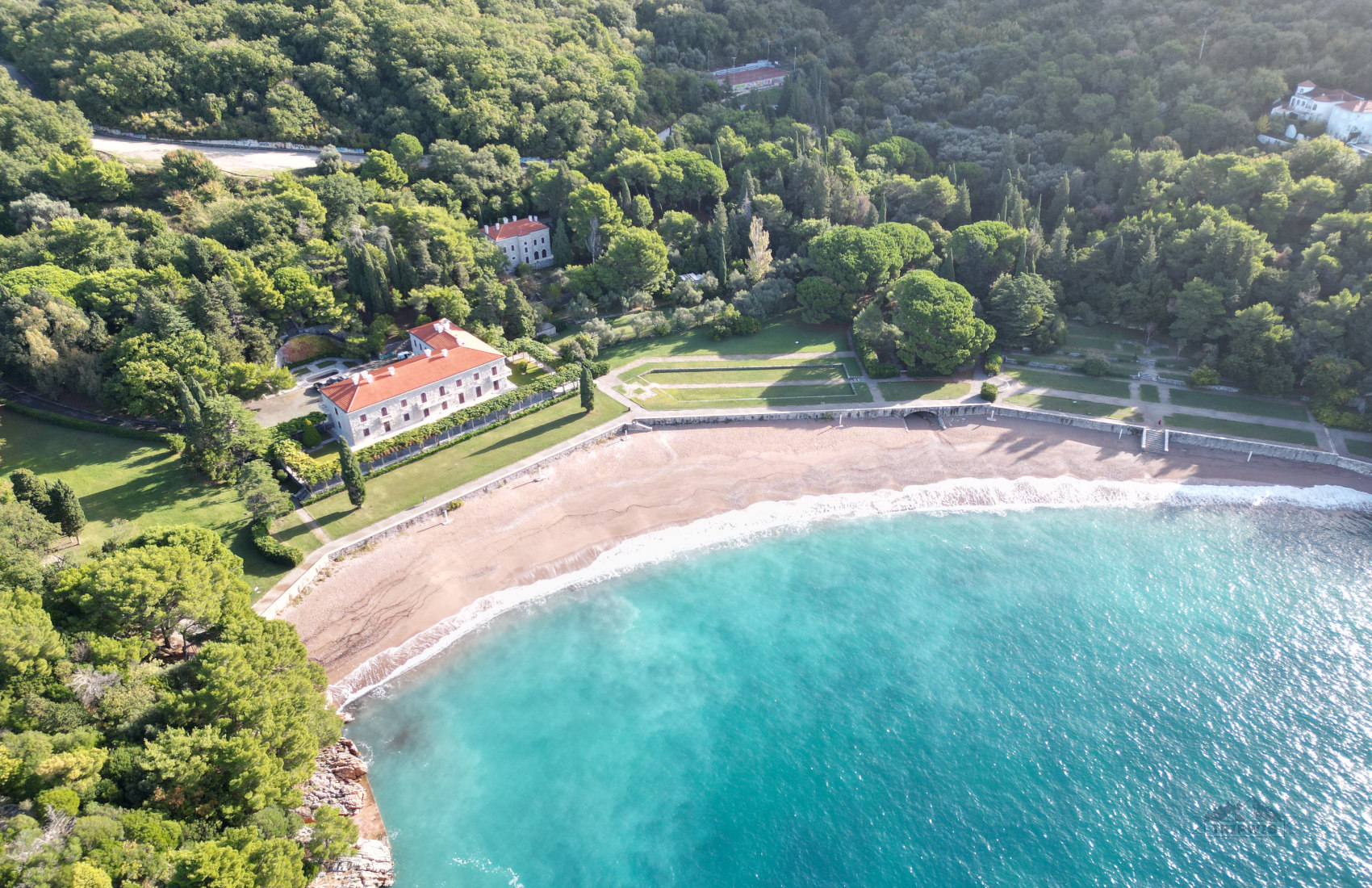
Parasailing (sailing in the air with a parachute, tied with a long rope to a boat) is not quite as extreme as paragliding but it’s a fun adventure nonetheless. It’s a season-only thing: You won’t see any parachutes in the skies when it’s cold.
Usually, the tours start from the beach in Bečići or right in Budva, and there are multiple companies that offer the experience. It will only cost you about €50 per person for the ultimate thrill.
Hide from the heat in the caves on your kayak
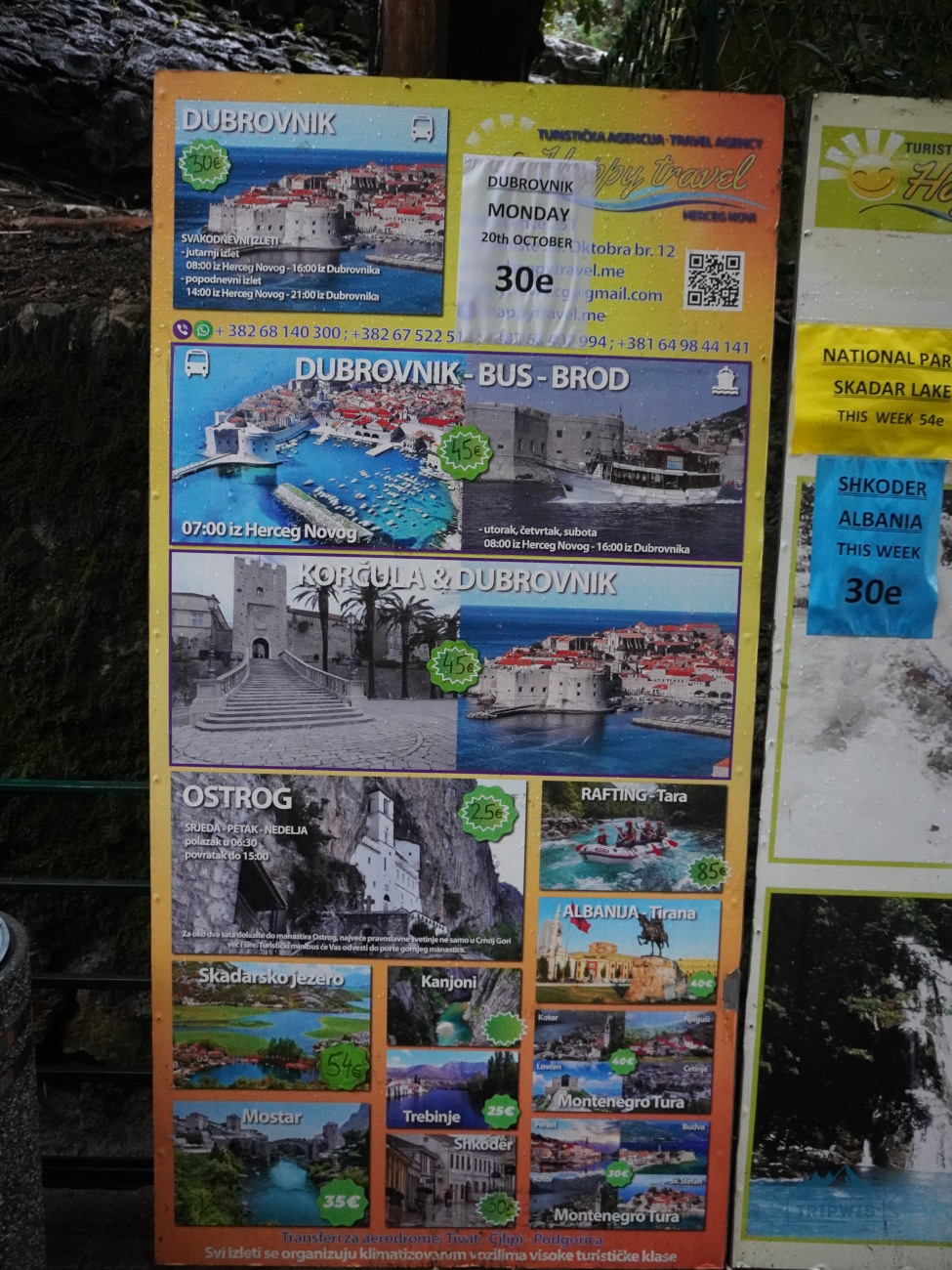 |
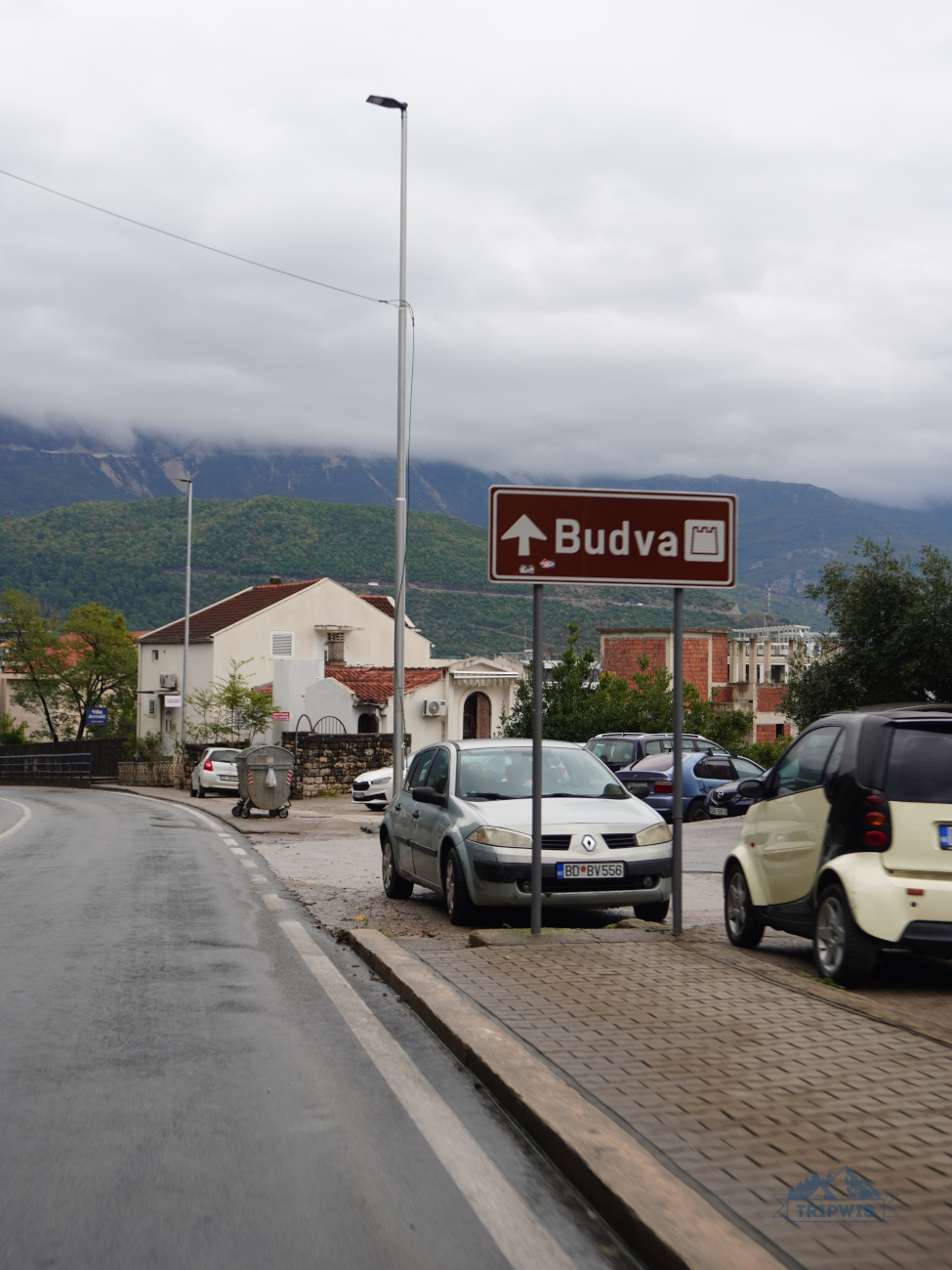 |
If you don’t want to go up but rather the opposite, want to dive beneath the mountains, then paddleboarding or kayaking along the Budva riviera’s many caves is a great idea.
It’s just what it sounds like:
- With a group and a guide, you get into a kayak or onto the paddleboard and follow the instructor that takes you from the busy beach area with boat traffic to a safer lagoon to the right of Budva;
- There, you can explore the rocky shores, paddle into the caves along the coast, and just enjoy the peace and quiet of the sea.
Keep in mind: You absolutely, no questions asked, 100% NEED a strong sunscreen for this activity. While the sun is not as unforgiving as it is in tropical regions, it’s still possible to get a sunburn. Especially when you’re in a small kayak, exposed to sunlight for hours.
Walk through alien-looking Lipa cave
Want to go deeper, into even bigger caves? As its street advertising banner cleverly says, Lipa cave is “like another planet, just 40 minutes from here”.
It’s not just a small cave you can peek into from the outside: It’s a massive 1,5-mile-long cave system, with 16-feet-tall “ceilings” and otherworldly-looking rock formations.
Note that unaccompanied tours through the cave are prohibited. It’s a dangerous place, and you’ll have to join a group of people with a local guide (during peak season, group tours start every hour and you’ll be able to sign up on site). The prices start at €15 for an adult ticket, kids can enter the cave for a humble price of €1.
Find the most exciting water slide at Budva Aquapark
For a more family-friendly type of adventure, you can visit the local aquapark. It’s not the biggest in Europe (and not even the biggest in the Balkans), not the most modern one, but still — it’s there, and water slides are available for everyone from June to September (most years, check the opening dates as they are subject to change). It’s probably one of the best things to do in Budva with kids.
Keep in mind that the aquapark is located above the city on a serpentine, so you’ll need a car or a taxi to get here. Expect the ride to cost anywhere between €15 and €25 depending on traffic.
Time to touch grass: Best hikes in Budva
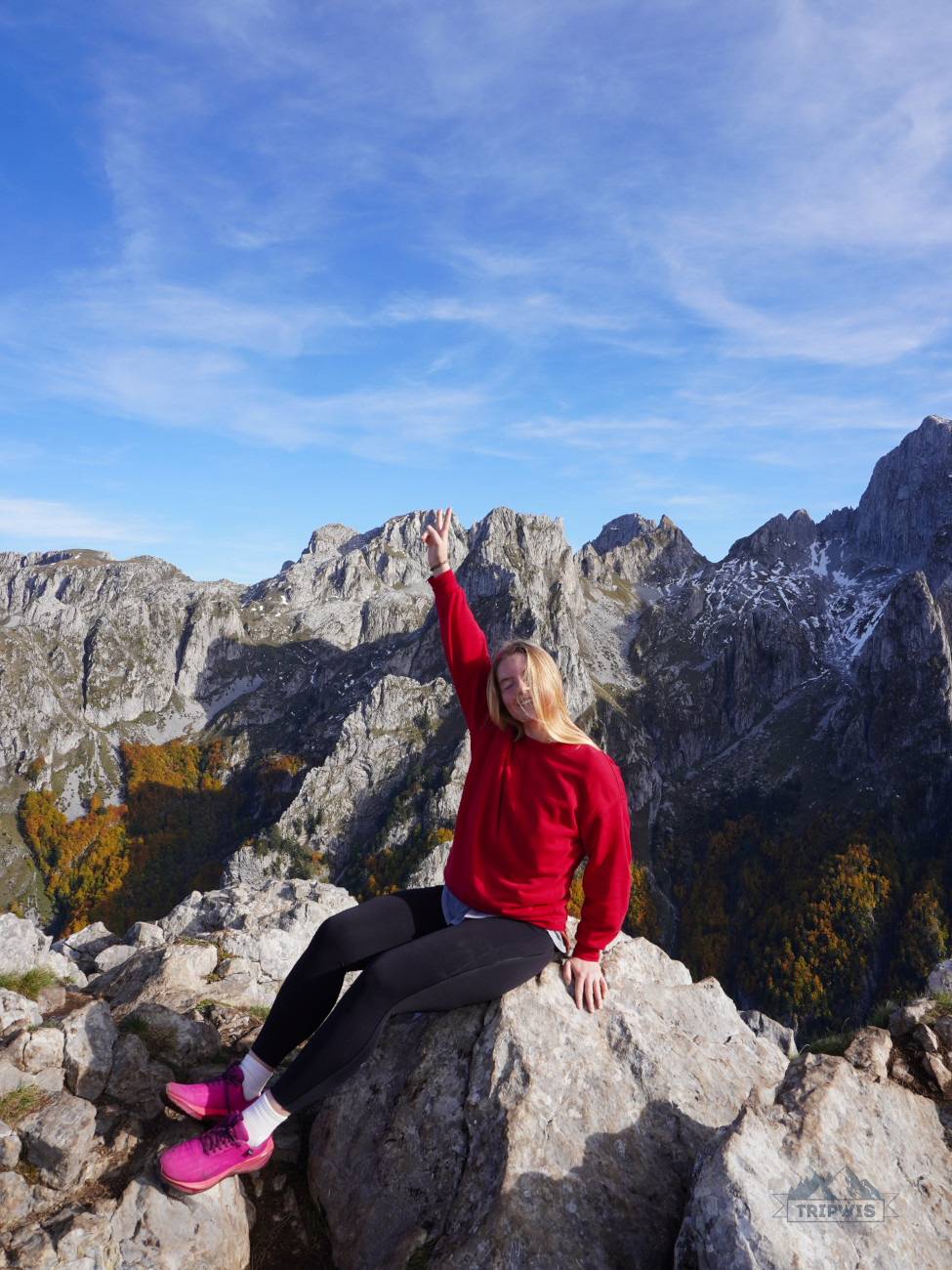 |
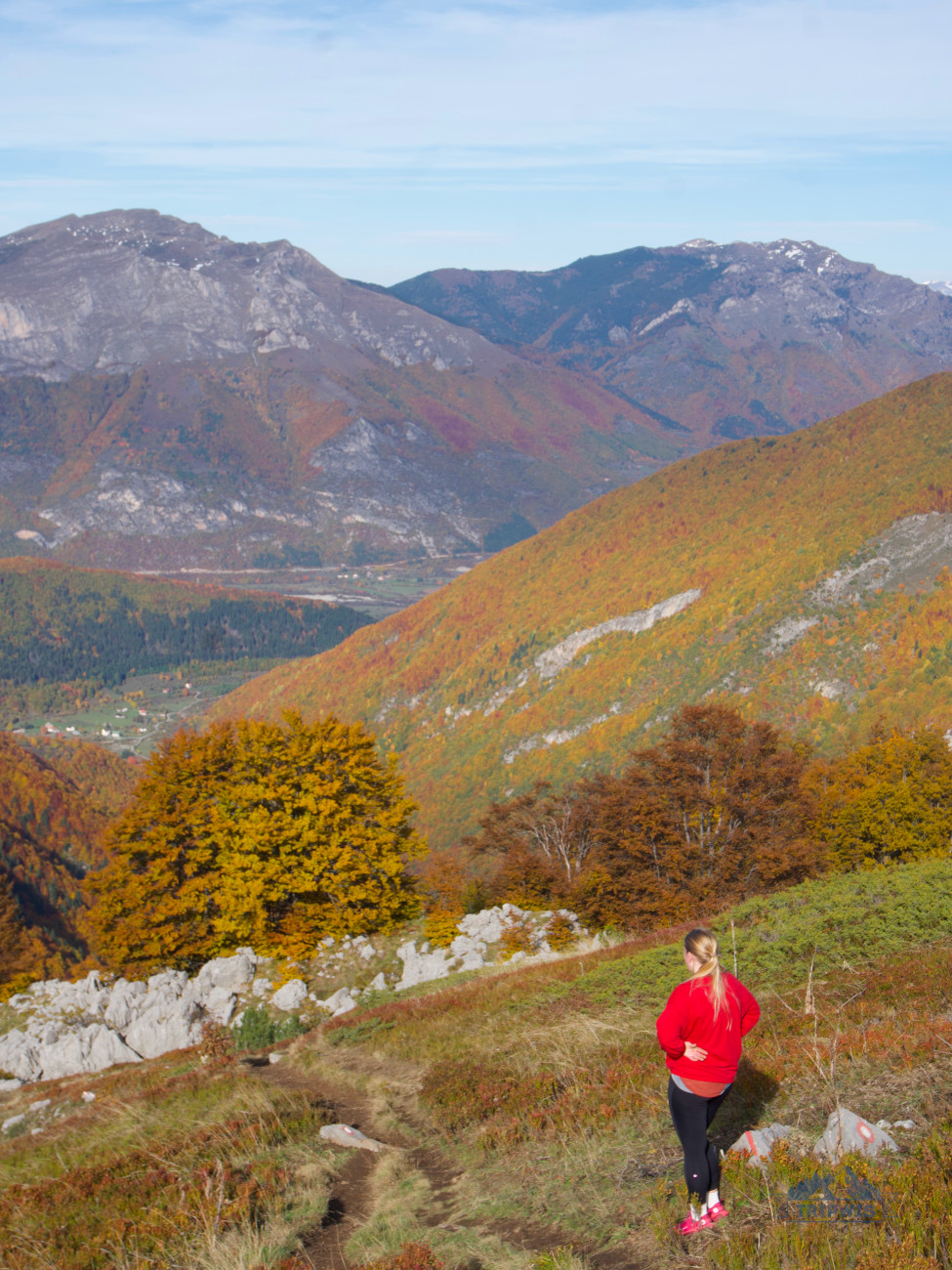 |
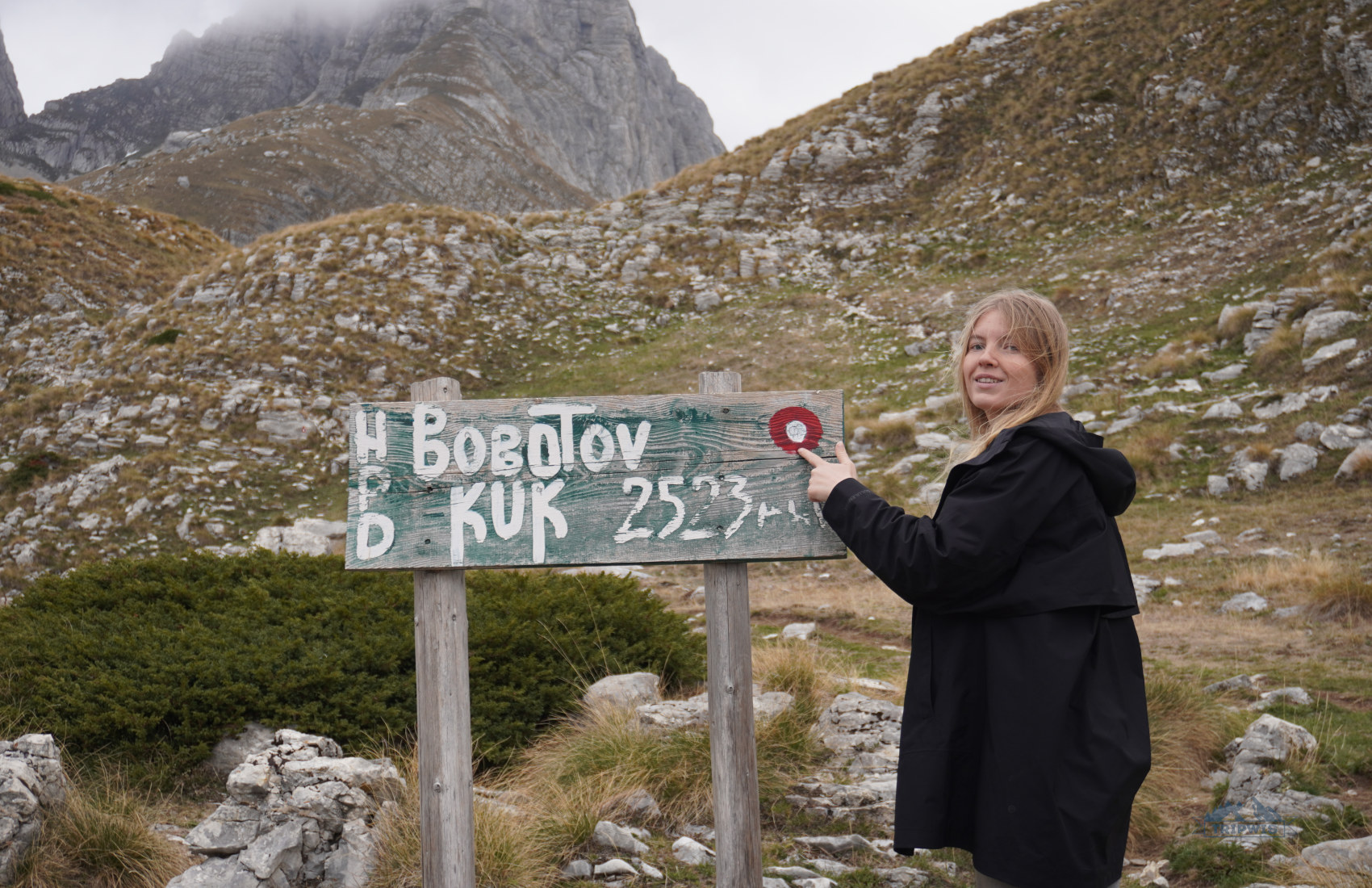
It’s not all about paying for things, right? Sometimes the best adventure is just walking somewhere into the mountains, with nothing but rocks and trees around.
While Budva has more complicated hikes, we’ll start with basic and simple ones first.
Take a walk to the tranquil Podmaine Monastery
It’s probably the most accessible location outside of Budva, set within a short walking distance from the road up the hill. It’ll take you less than 30 minutes by foot to get to your final point.
Podmaine Monastery itself is just as charming as it gets: It’s small, truly ancient (built in the 15th century), peaceful, silent, and tranquil in every aspect that counts.
The territory consists of a few buildings and a beautiful garden. The monastery also has a nice terrace where they serve tea and other drinks for guests to just enjoy the atmosphere and the view. It’s not really the most popular location around, so expect to be among very few tourists, if any.
Enjoy nature’s peace and quiet atmosphere at Krapina village
This one is as good as Budva sightseeing gets if you don’t have a car. Don’t set Podmaine as your final destination and keep going on the same road, turn left when you pass the monastery and follow the serpentine upwards for a few more hours.
The city scape will slowly turn into a village, buildings will get sparser, and finally — you’ll make it to the woods. It might feel like you’re walking straight to the middle of nowhere, though it’s not really the case.
On your way, you’ll pass St. Jovan Church (a small building with an old cemetery), a ranch (Monterancho, one of the very few ranch locations in the country), and a few stunning viewpoints: One with a view towards Budva, and another — in an hour of walking uphill — overlooking the Kovacko Pole valley (the one you pass when you drive from the airport to Budva).
At the end of the road, you’ll find Pojata restaurant. It stands right above Drenovstica river, with the restaurant’s owners also running a successful trout farm. It’s a perfect spot to finish your journey, though the restaurant is perfectly aware of all the perks of its location at the end of a hike, and the prices — especially for locally farmed fish — might be above average.
Explore lesser-known caves and Čučuci waterfall
If you like your waterfalls to be bigger than 15 inches (which is the usual standard for Krapina village), you might go for a short hike up to Čučuci.
Walk up from Bečići’s main roundabout. In about 30-40 minutes you’ll pass the last guest house and will find yourselves at a fork in the road:
- Take a short trail left, and you’ll see the Čučuci waterfall, a nice and peaceful secret location. Yes, you can swim in the river here, it’s deep enough and not as cold as mountain springs;
- Turn right onto another short trail — and you’ll get to the entrance of a cave (no real name exists for it, most people just call it Čučuci Cave). It’s a fun place to explore, narrow and deep, though if you’re not a speleologist — it might be a good idea to just admire it from the outside. It doesn’t end with anything fun and just gets so narrow you can’t continue anyway.
Go straight, via the main road, and you’ll make it to a small church with a panoramic view of Bečići. It’s most likely to be closed, but the church yard is well-maintained and it’s a good place to chill before turning back.
Sail away from Budva to Sveti Nikola Island (for free)
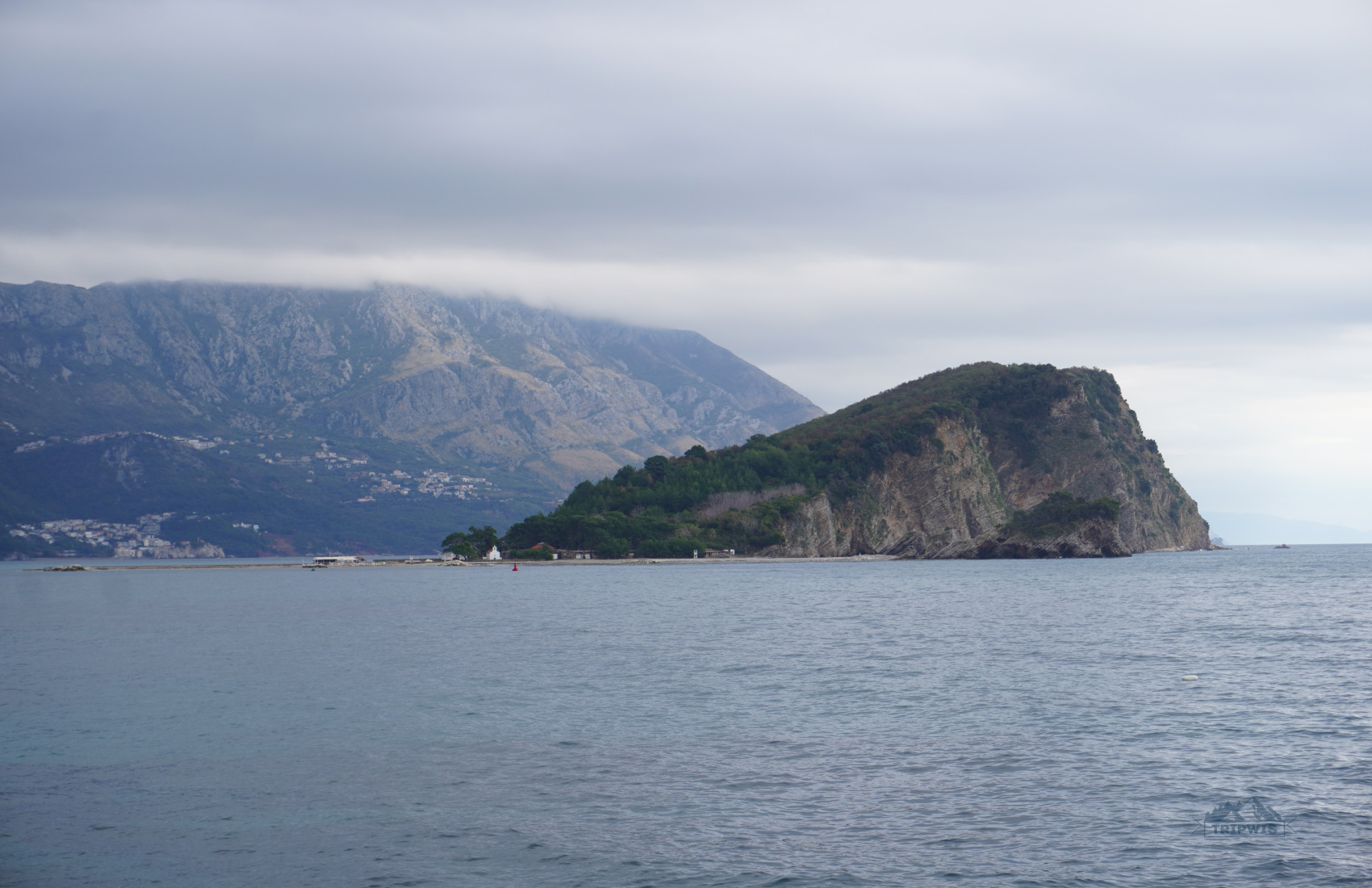
You won’t miss it once you’re in Budva, you see it from almost every point of the central beach: St. Nikola is THAT one island in the middle of the lagoon.
There’s no entrance fee for tourists or any tolls, and it’s quite easy to get to! Right next to Stari Grad walls, you’ll see a free shuttle boat that takes you to the island. The transfer comes every 30 minutes and sails back and forth all day.
Once you’re on the island, you’re free to explore it in any way you see fit! You can:
- Chill by the water on Hawaii Beach;
- Walk all around the place on a well-maintained (though crowded during high season) forest trail;
- Explore the rocky shores in a kayak or on a paddleboard;
- Visit the St. Nikola Church (small and charming, though most of the time closed);
- Go to the top of the mountain and enjoy the view!
Don’t expect the remoteness of the island to make it less crowded: It’s closed for visitors during the winter (almost completely deserted), and once the shuttle boat starts cruising, it gets… Well, people-y.
Take the Seven Beaches Trail
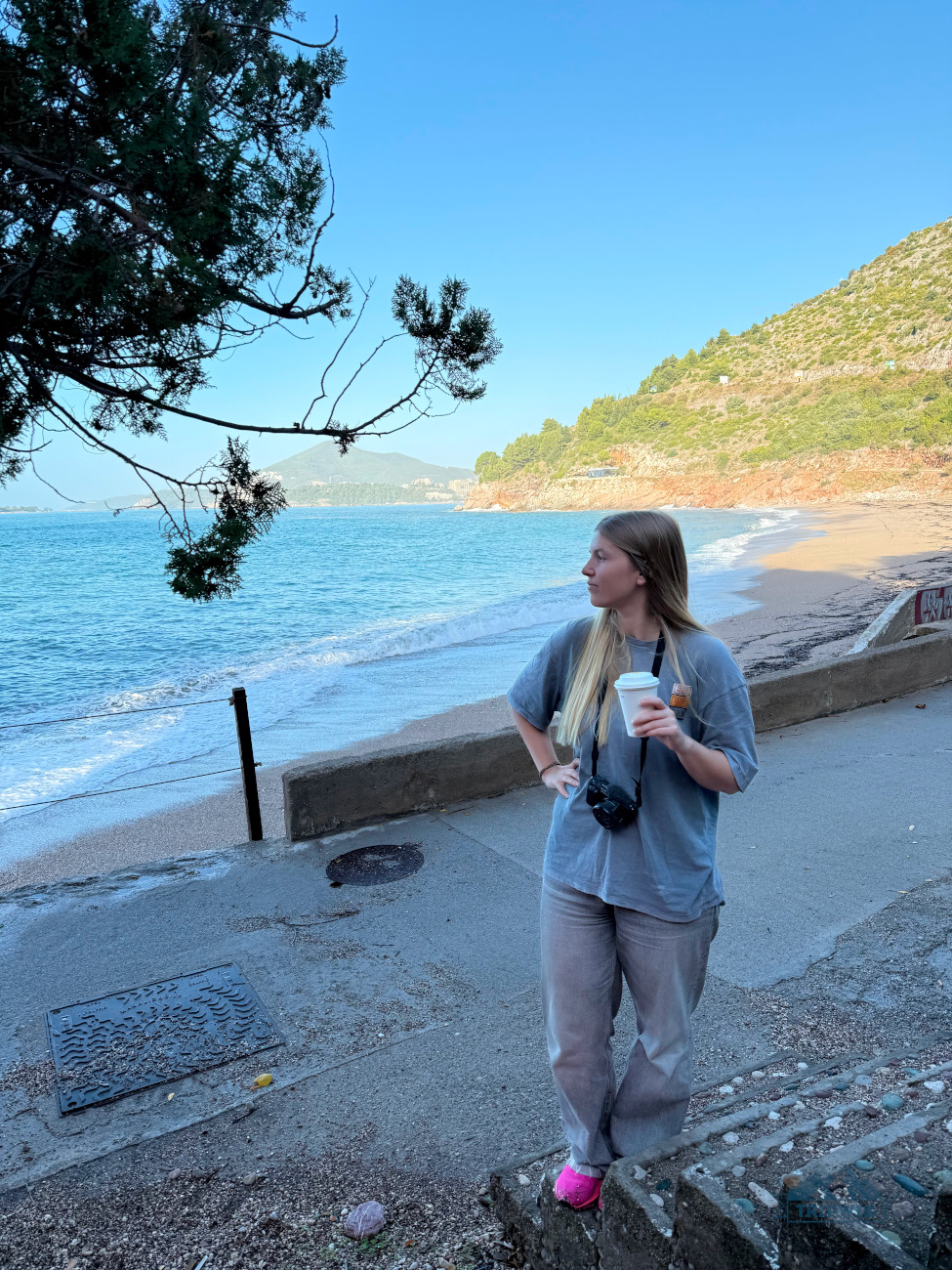 |
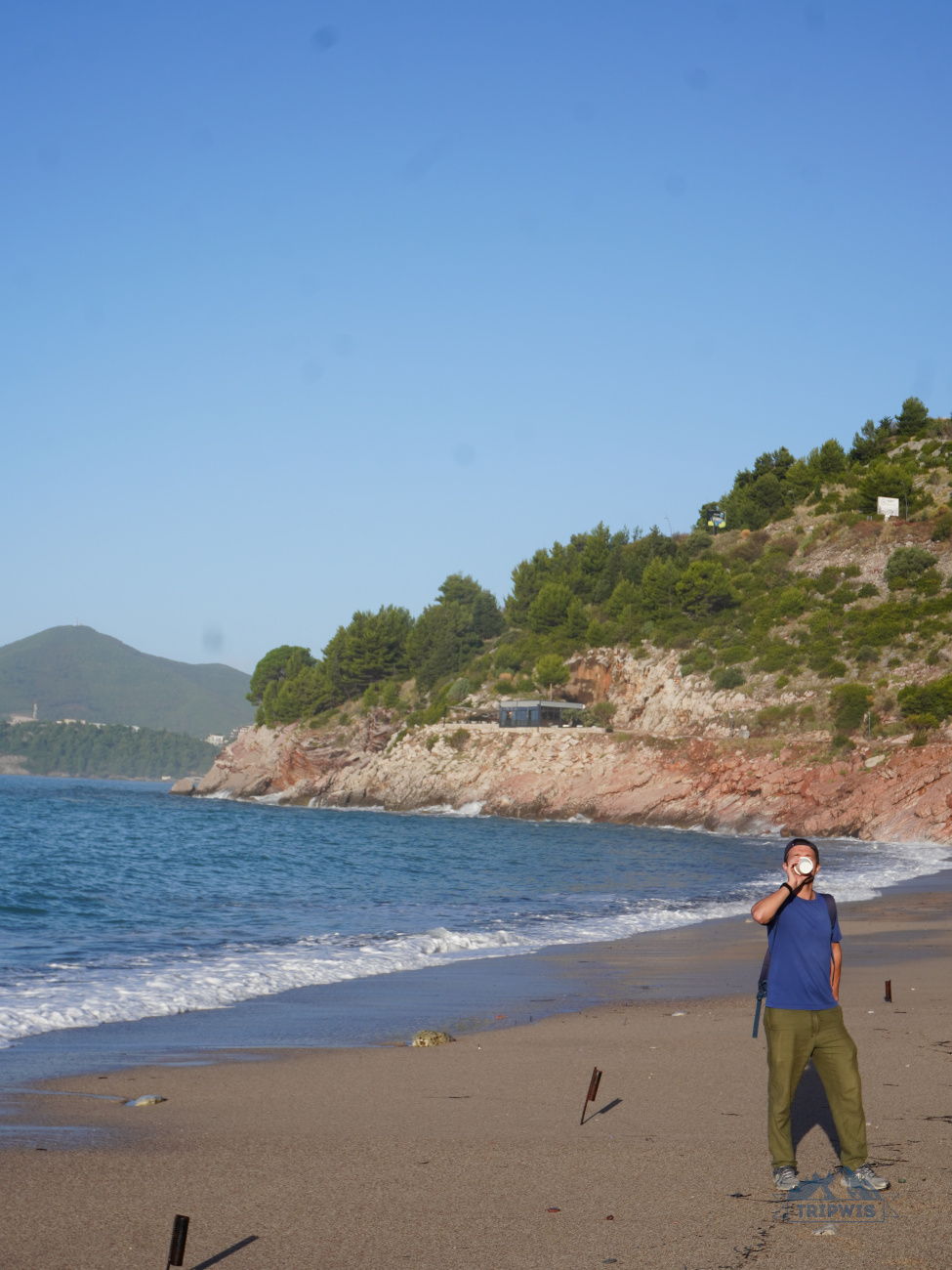 |
This iconic trail is an absolute must-do on your Budva itinerary. It’s probably the easiest “hike” in the area, suitable for all ages and levels of experience. All because it’s not really a hike, but more of a walk along the promenades and the road from Budva to Sveti Stefan.
Here’s how it goes, if we simplify the process:
- Start at Budva’s Old Town, pass Pizana and Ploce beaches;
- Follow the promenade along Slovenska and Greco beach to Dukley Gardens villas;
- Make it to the end of Budva and go through a tunnel to Bečići (you’ll have to walk through some hotel territories behind the enormous Harmonia apartment complex);
- After a long stride along Bečići beach, you’ll make it to Rafailovići, a more picturesque area;
- Pass through another (now — old and abandoned) tunnel to Kamenovo Beach (either packed or deserted, depending on the season);
- In the middle of it, climb up the old stairs to the parking lot;
- Pass through Pržno and make it to the beach bars (there are many paths and stairs, but almost all lead to the same place, so you won’t get lost);
- Go up to beautiful pine woods and pass through the park, via stunning lagoons and insanely beautiful old residences of Montenegrin royal family (now, sadly, leased to Aman Hotels and closed to the public);
- Follow the trail on the mountain (you’ll be at your second or third hour of the walk at this point, but no worries, this trail along the mountain is rather short and well-maintained);
- Follow it to the end, and you’ll end up in Sveti Stefan — right next to the world-famous resort and the postcard-worthy medieval village in the sea.
If you followed through all the steps, you might have questions: Why is it called a trail if it follows mostly promenades? And why seven beaches, when there are clearly more? We’ve got no answers, so feel free to take a wild guess in the comment section down below!
What we can say, however, is that this walk is worth every minute of it: Especially when you make it to the cypress tree park by King and Queen beaches with the old royal residences.
It takes about 3 hours to walk here, and you can always get back to Budva from Sveti Stefan by bus. So, since you’re not really limited in terms of daylight, you can stop at any of the towns on your way and enjoy them to the fullest.
Here’s what you can do in Budva riviera’s each major village on the “Seven Beaches” trail:
Have a snack with a view at Rafailovići
Rafailovići is, technically, its own little coastal village, but practically — it’s a part of Bečići. You can discover it on foot in full and not even notice! Once the pebbles end and the embankment starts, you’ll know you’re in Rafailovići.
Oh, and you definitely won’t miss one more sign of Rafailovići starting: A massive green rock. Aside from its color (that has something to do with copper oxide in it), it’s not really that exciting. As one of the Google reviews puts it, “It’s a rock, and it’s green”. We love it anyways.
Other top things to do in Rafailovići definitely revolve around the promenade with over a dozen cafes and restaurants. Among our favorites are Zeta (Georgian take on local cuisine) and Meat & Burger (decent burgers with a wide range of options, quite rare in Montenegro).
Watch the life of a fishing village at Pržno
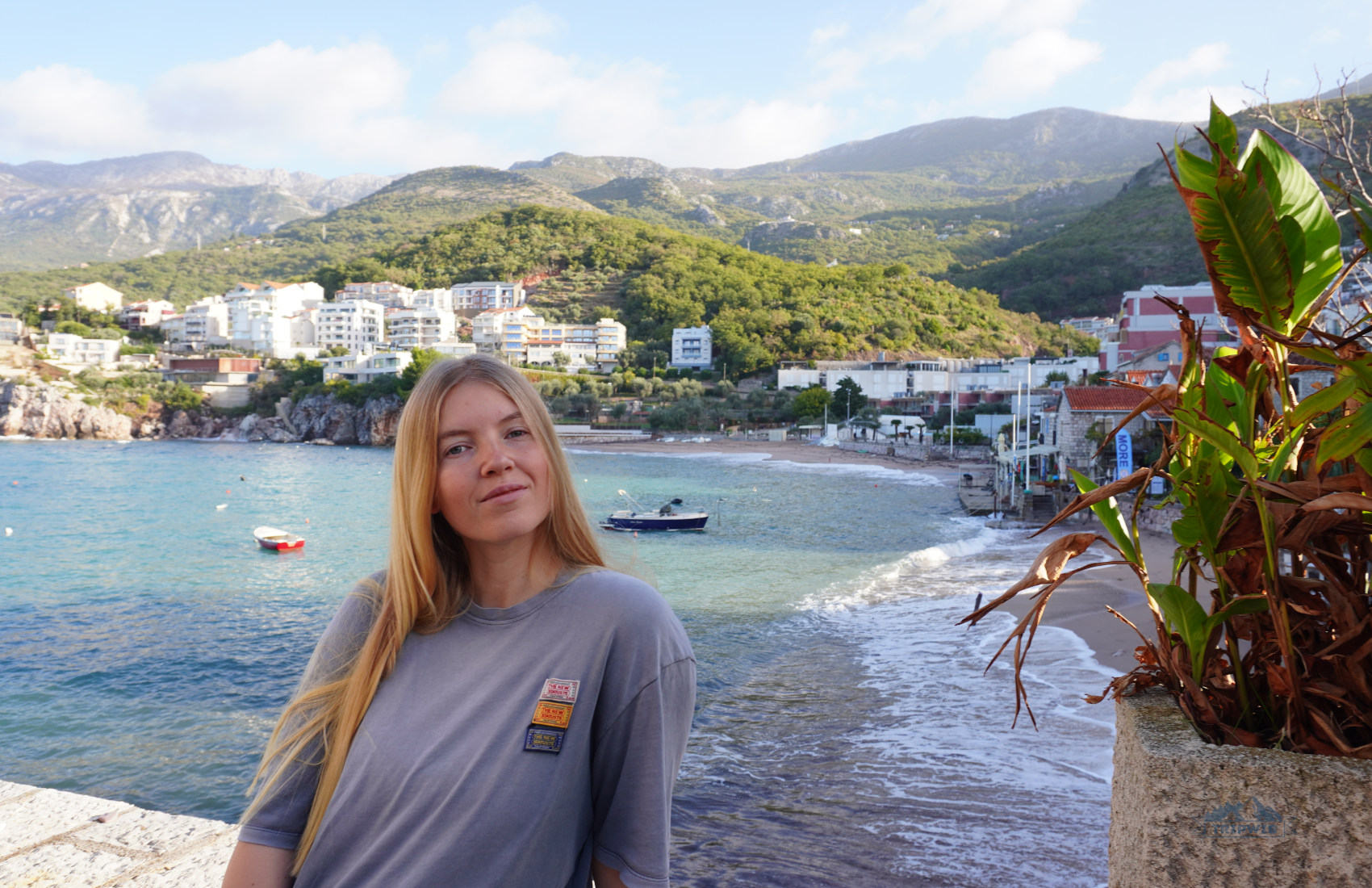
Pržno can be defined by just one word: It’s charming. Imagine a small, ten houses at best, coastal fishing village, with lodges hanging above the sea, all next to a rocky cliff a few dozen meters from the beach. A few family-owned restaurants serve fish and desserts (not mixing them together, thank god), while waves almost knock on some buildings’ windows and doors. That’s Pržno.
And if your list of things to do in Budva in 3 days has some room in it, it’s worth the time it takes to get here. Of course, Pržno is a much bigger village than what we make it out to be, but it’s mostly residential, with no actual places of interest outside of that small beach area. And besides, to get to the main road, you’d have to climb endless stairs, so you’re unlikely to go here.
Get mad at international hotel chains in Sveti Stefan (just kidding, instead — enjoy the views)
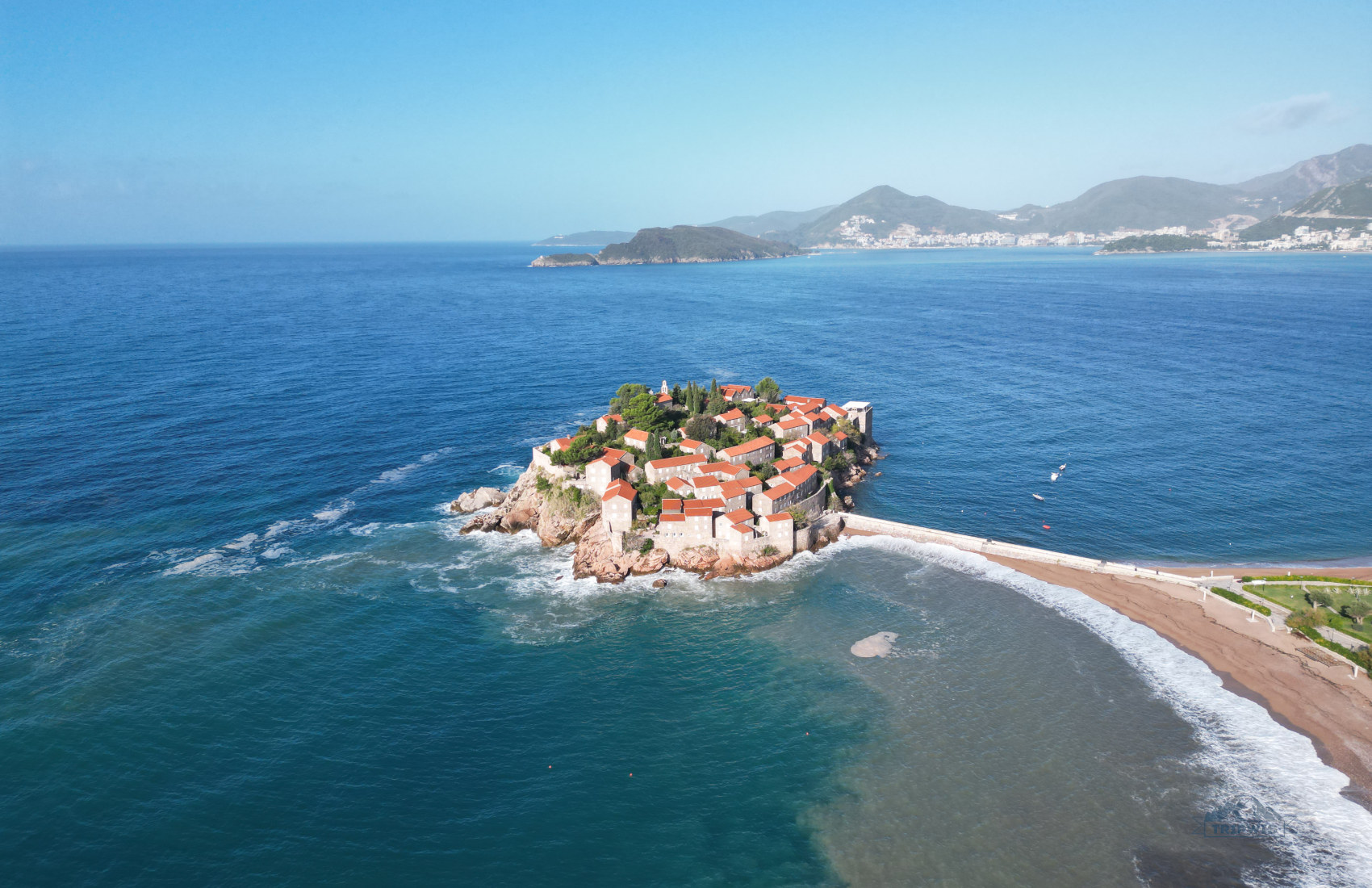
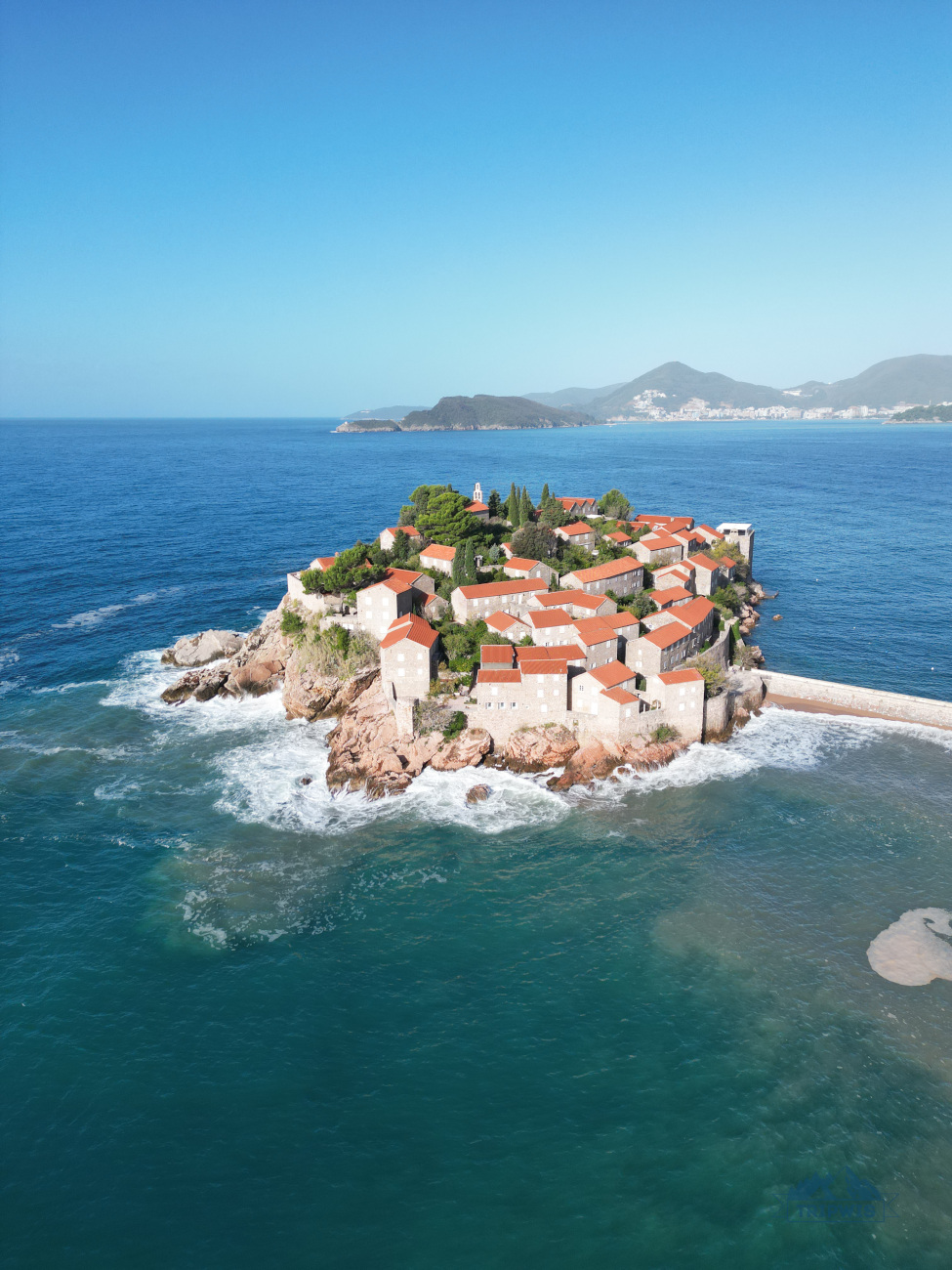 |
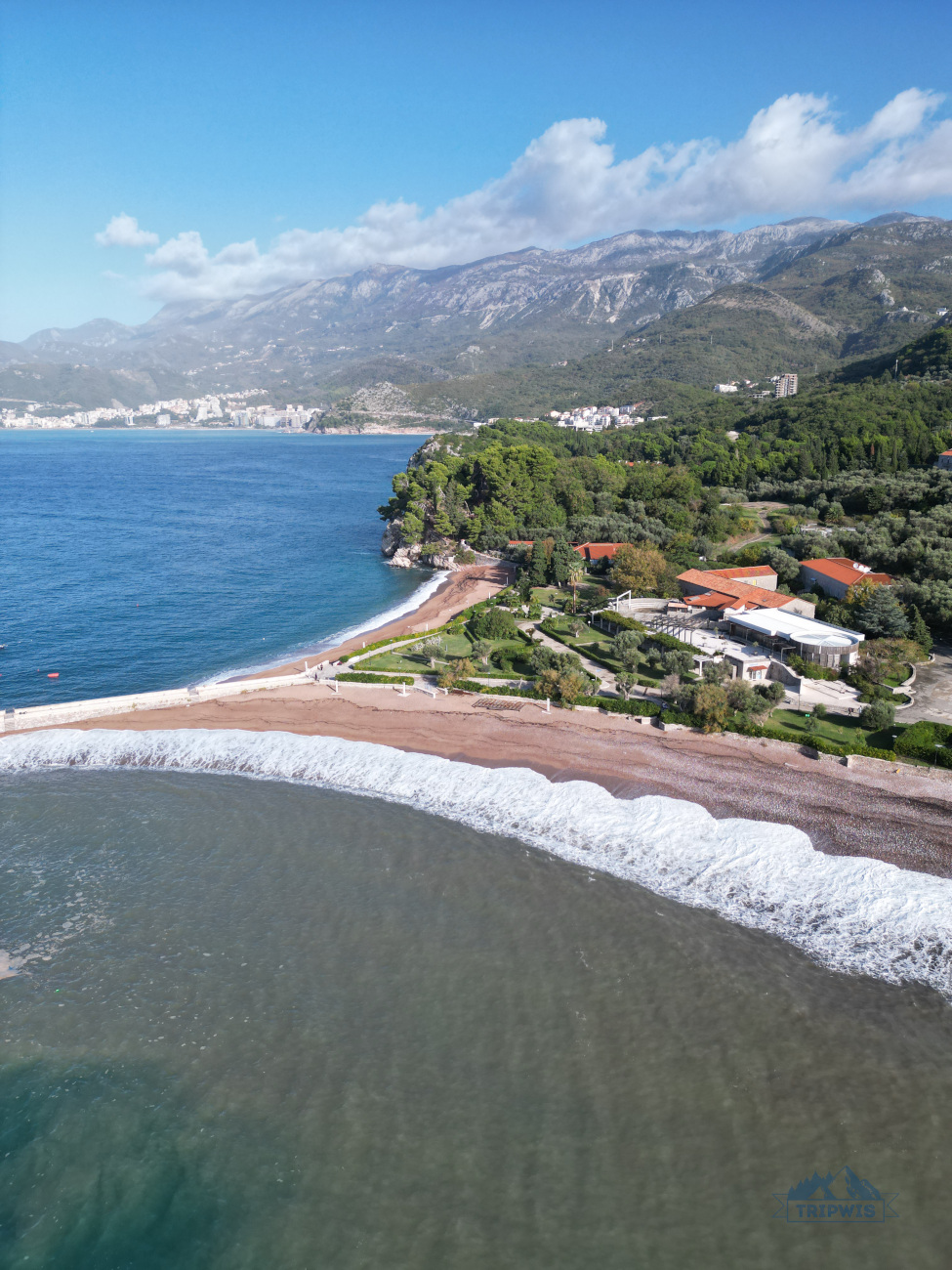 |
Sveti Stefan is an insanely beautiful, postcard-worthy place, probably the crown jewel of the Budva riviera, and one of the places Montenegro is famous for. Sadly, it’s one of the least accessible places on the list as well.
Sveti Stefan “island” itself — the village separated by a bridge from the shore — is what the world’s most famous people have always chosen as their base in Montenegro. From Marilyn Monroe and Sofia Loren to Queen Elisabeth II and Orson Wells, — the names don’t lie! And there’s a reason they chose it: The island’s not open to the public.
- It’s a private hotel, owned by Aman Resorts, and the gates are almost always closed.
Same goes for the two stunning residences of the royal dynasty, the Queen and King lagoons, probably the absolute best of all Montenegrin beaches. The rule is simple: You can see but you can’t touch. Walk off the path, and a security officer will rush to get you back.
A positive aspect in private ownership of this breathtaking place is that it’s perfectly-well maintained. Every cypress tree is trimmed, every lawn is mowed, and every cobblestone in the road is polished.
It’s sad that to enjoy the place to the fullest you’d have to pay at least $850 per night (arranged privately, in advance, via a call).
Set out on a day trip from Budva
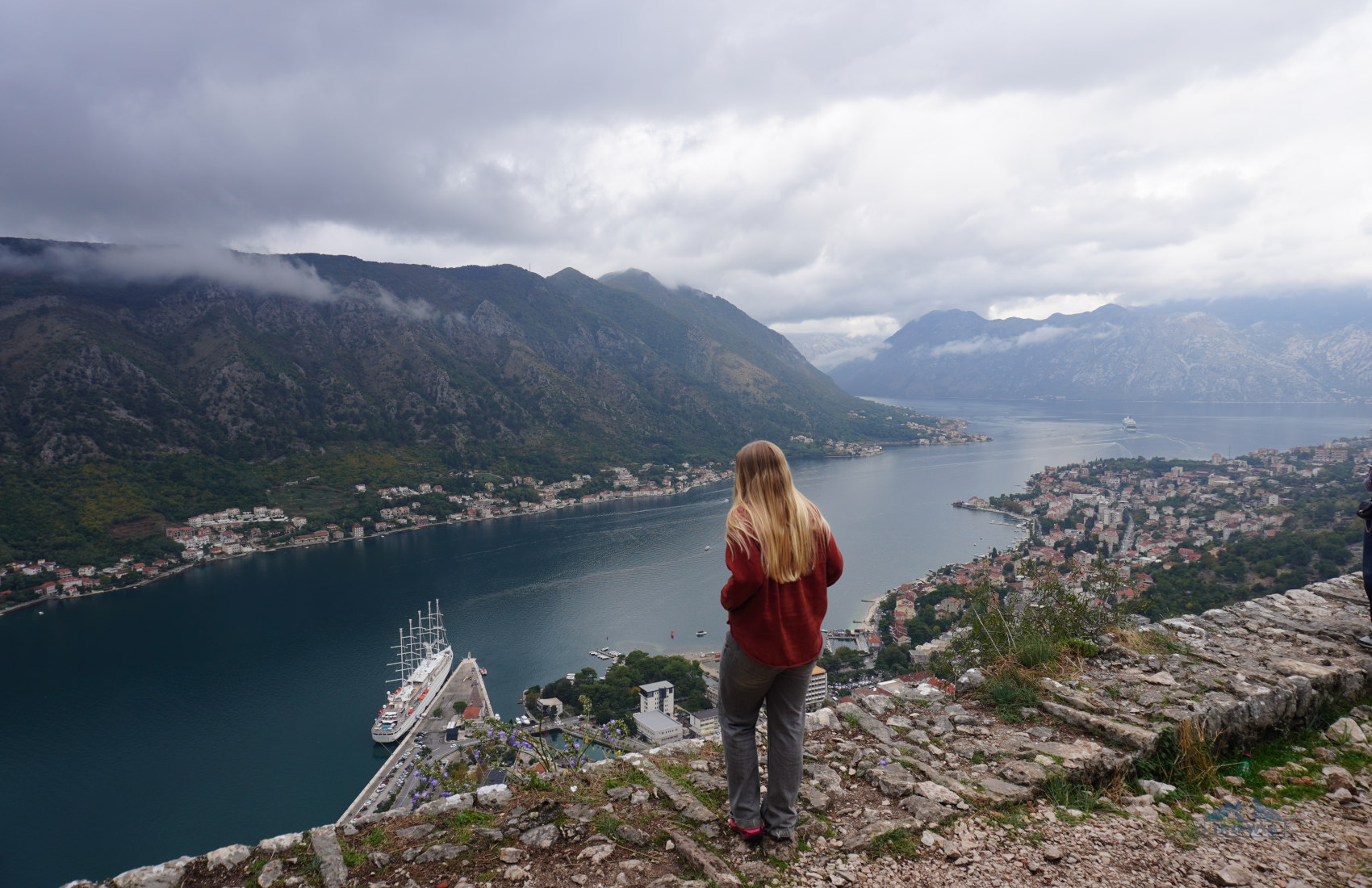
Need some places to add to your itinerary outside of Budva? Even with all the things we’ve already discussed, there’s much more that Montenegro can offer! And most of the exciting locations are rather close to Budva.
While this guide is mostly about things IN Montenegro’s tourist capital, we’ll keep the part on day trips from Budva short.
Explore the ancient village of Kotor
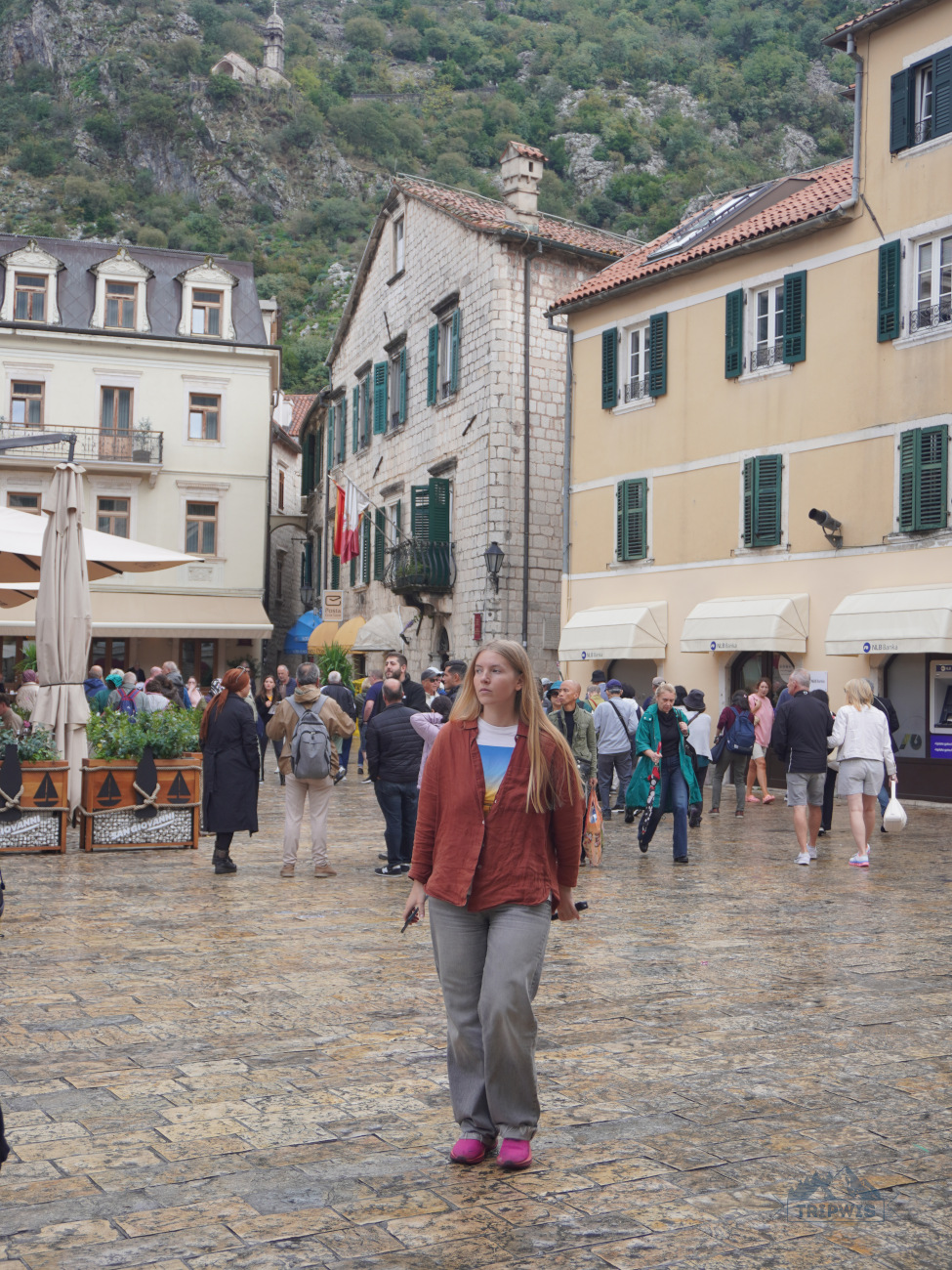 |
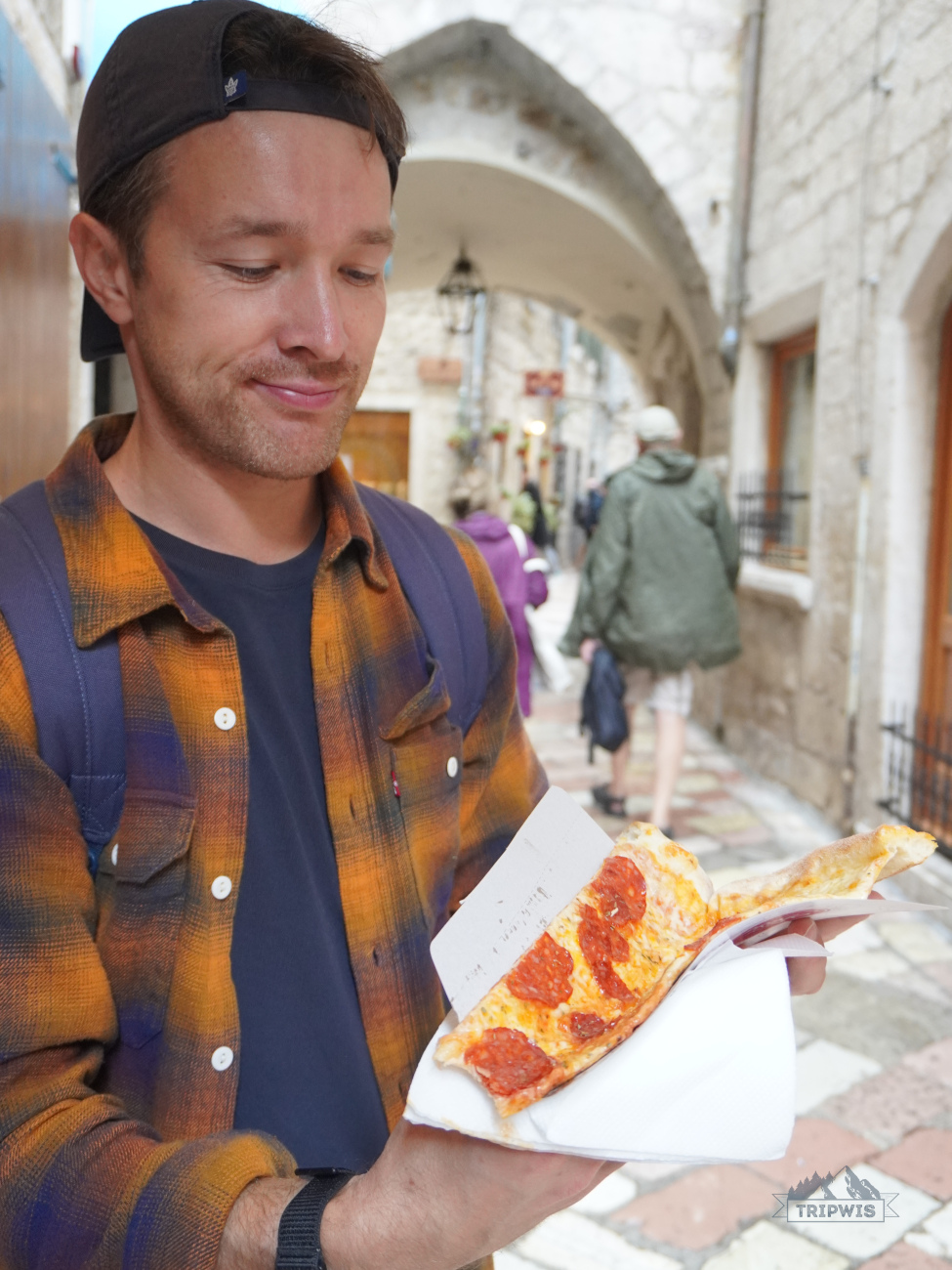 |
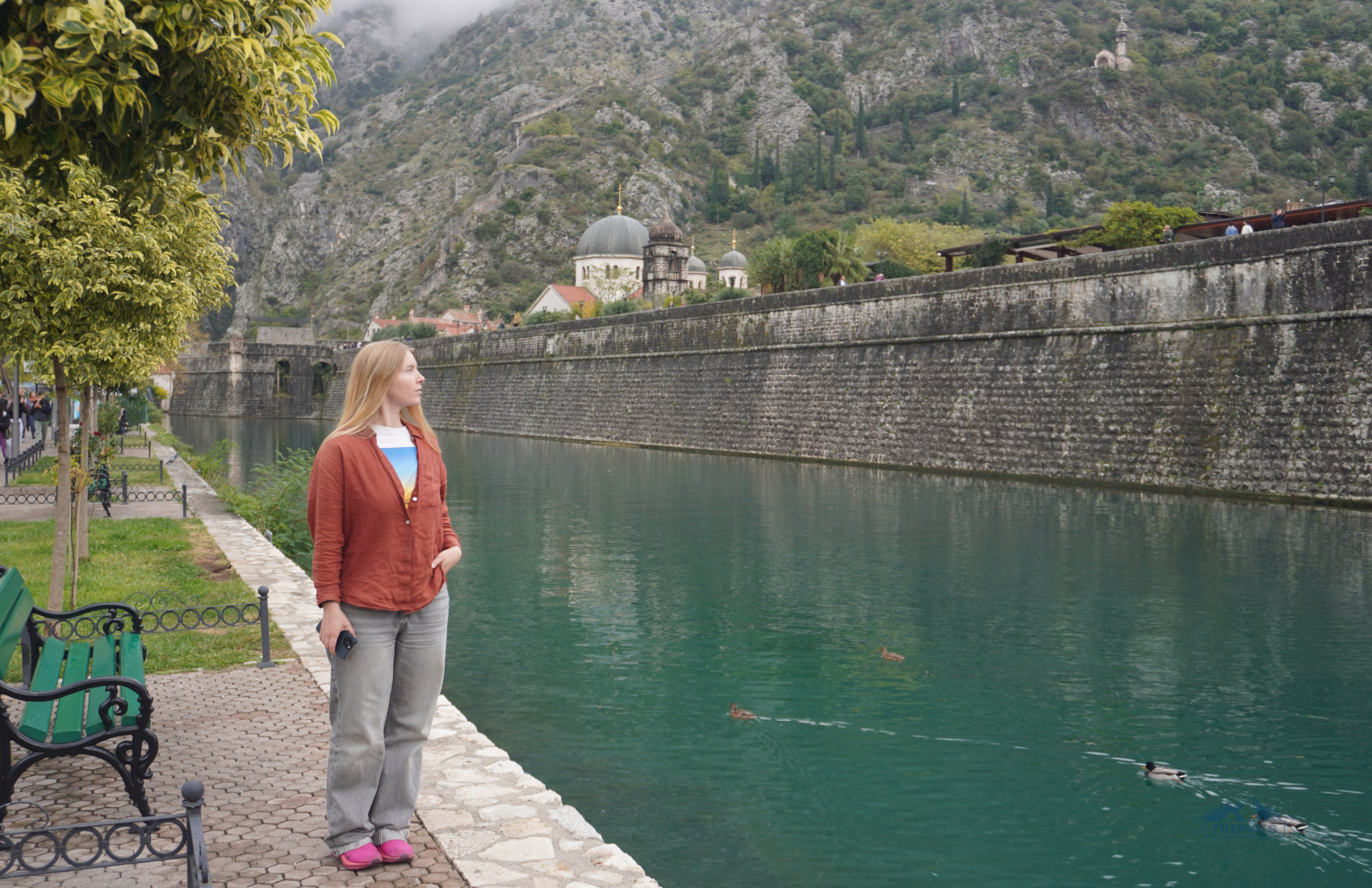
One of the most famous cities in Montenegro, Kotor is located about 40 minutes from Budva (if you travel by bus) and 20–30 minutes if you have a car (renting a car in Montenegro is an absolute must as well as our read-before-you-go instruction).
Compared to Budva, Kotor has a much bigger Old Town, a longer promenade, and it’s surrounded by even steeper mountains. If you’re in Kotor for just one day, the top things to do here are:
- Walk in the Old Town, explore the Museum of Cats and ancient churches;
- Walk along the promenade and have a dinner with a view of the bay;
- Take a boat cruise ride through the whole bay to Herceg Novi;
- Hike to the top of the old Kotor trail to see the city from above.
Kotor definitely deserves its own guide, but just walking around and enjoying the vibes of the Adriatic Coast’s best-preserved ancient village is an adventure by itself.
Side note: If you wonder which is best, Kotor or Budva, there’s no definitive answer here. The two are equally amazing. Budva has access to the sea and more accommodations. Kotor is located in the middle of the bay, not the sea itself, has fewer stores and cafes, but offers better mountain views.
Get a taste of luxury in Tivat
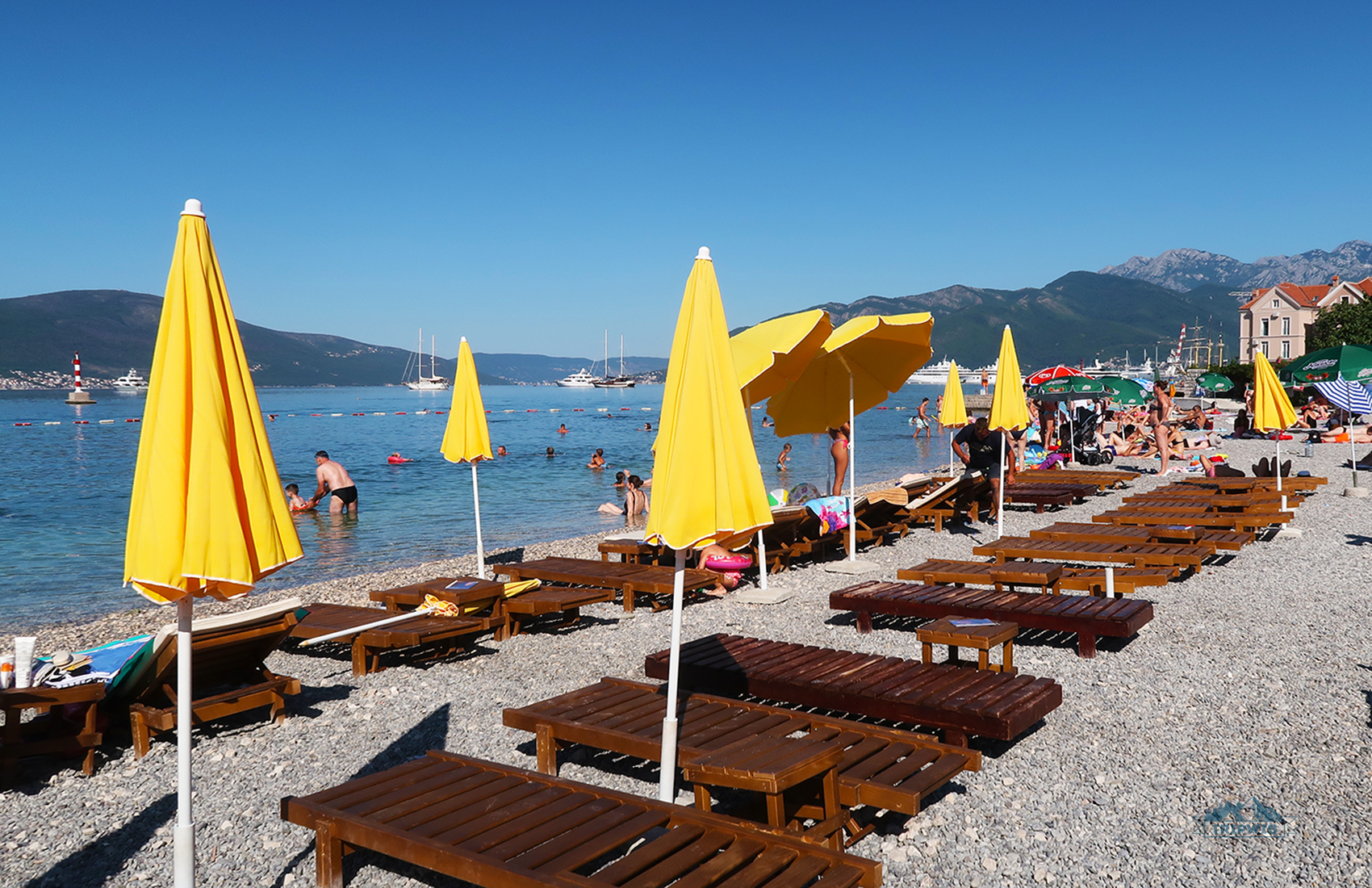
Tivat is just as far from Budva as Kotor is, just a tad further down the road, on the same side of the mountain range (with no need to pass through a tunnel).
In Tivat, your primary place of interest is definitely Porto Montenegro. Mega yachts, luxury boutiques, perfectly maintained promenades, exquisite cafes — this small (and it’s really small) area is just as posh as it gets in Montenegro. And the best part is that it’s still significantly more affordable than similar areas in other parts of Europe.
You can easily get to Tivat by bus (just keep in mind that the bus station is located within a 20-minute walk from Budva city center) or by car (there’s plenty of parking lots here).
Take a cable car to Lovćen
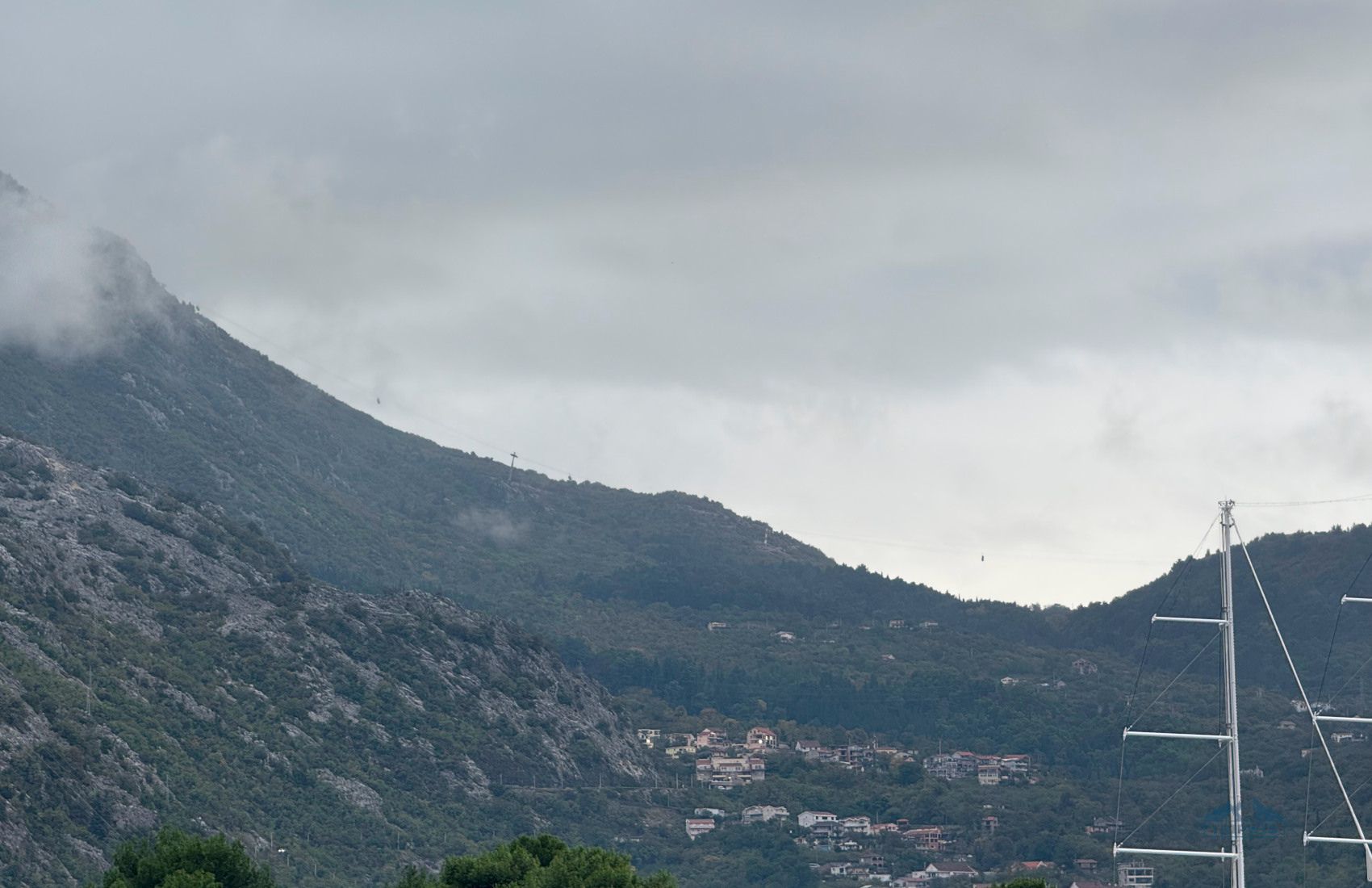
Lovćen is the name of the tallest mountain and — at the same time — the national park between Budva and Kotor. You can get here from Budva by car via a stunning serpentine, but there’s a new addition to the list of things to do in Budva in 2025: The Kotor cable car.
It starts in Kotor, next to the Old Town, and takes you to the top of the mountain in about 10 minutes. Along the ride, you get stunning views from your gondola, and at the top — in Špiljari, 1,500 meters above the city — you can get a drink at a bar or chill at a rather fancy restaurant.
Visit Montenegro’s most legendary ruler at Njegoš Mausoleum
One of the best ways to make this cable car ride worth it (it’s quite expensive, the price per single seat is €23 in 2025) is to walk through Lovćen to the Njegoš Mausoleum. Don’t expect the path to be easy, the winding road is rather steep, and it’s windy at the top.
However, as a reward, you get an even crazier panoramic view of the whole Kotor bay area, and an opportunity to visit the legendary Montenegro ruler’s grave. The mausoleum complex itself is quite striking, and there’s a restaurant at the top, so you can hide from the wind with a nice cup of coffee.
An alternative way to get here is more complicated if you don’t have a car:
- Take a bus from Budva to Cetinje (the old royal capital of Montenegro);
- Once in Cetinje, take a taxi to the top of the Lovćen mountain.
The ride will only cost you about €25 and will take 30 minutes or so, but it’s the only way to get here, no public transport options are available. Taxi drivers are usually OK with waiting for you at the top to help you get back to Cetinje, at a rate of €10 per hour. And don’t forget to take some change to pay the national park entrance fee: It’s €3 per person.
Sail your raft down the Tara River Canyon
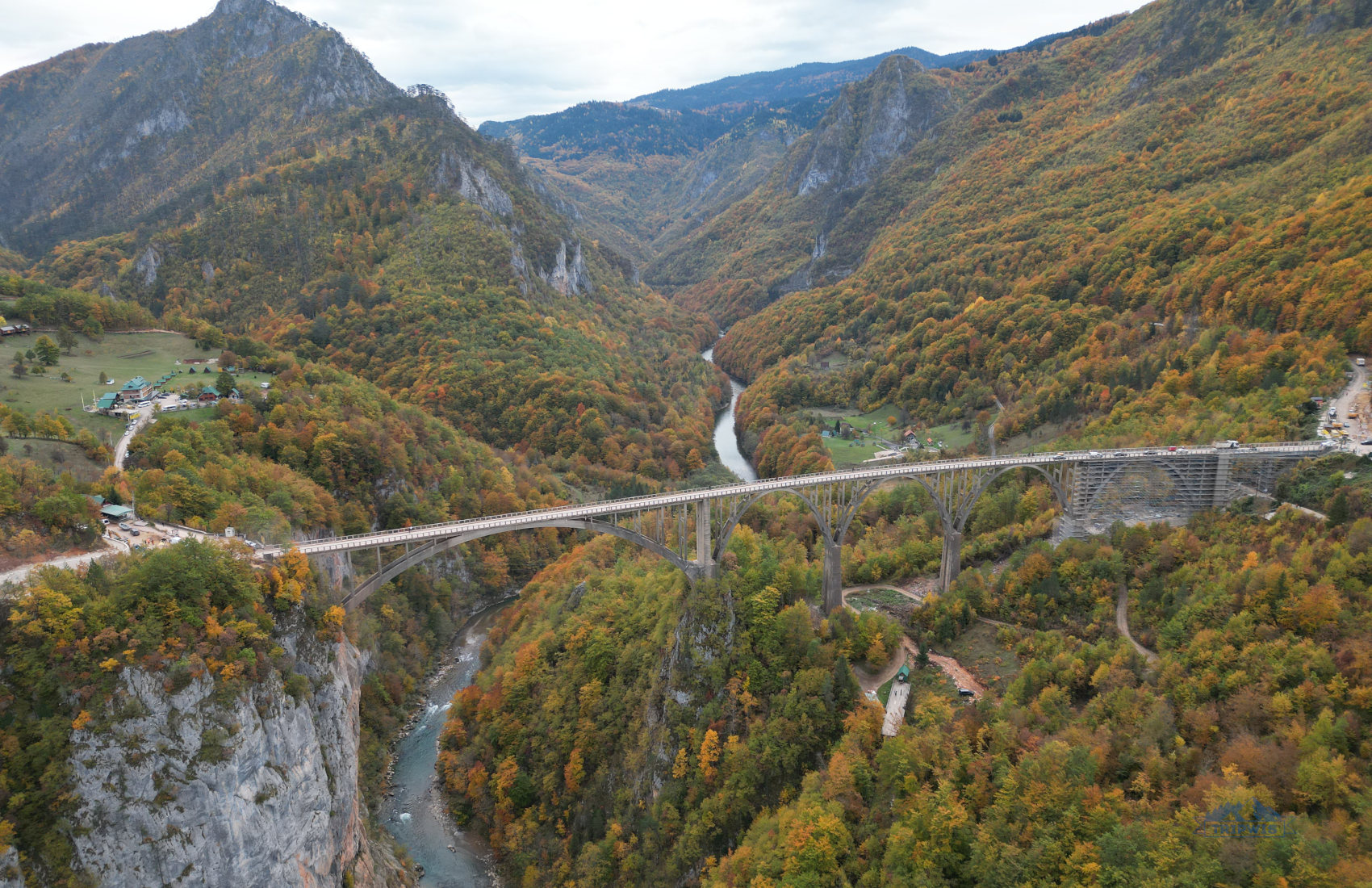
Tara River Canyon might be a bit far, so it’s unlikely you will get to do it if you have one day in Budva: It’s a 5-hour drive from Budva, almost on the other side of the country. However, if you think that mountains surrounding the bay or the riviera are too small, Durmitor National Park is definitely the place to go.
It’s a massive national park in the northern part of Montenegro, famous for the country’s highest peak — Bobotov Kuk. While the area is generally a hiking paradise, there’s much more you can do here than just walk on endless trails through old-growth woods.
For example, the Tara River Canyon is famous for its rafting tours: You’ll see small boats struggling with the currents from most viewpoints.
A few more things you need to know before visiting Budva
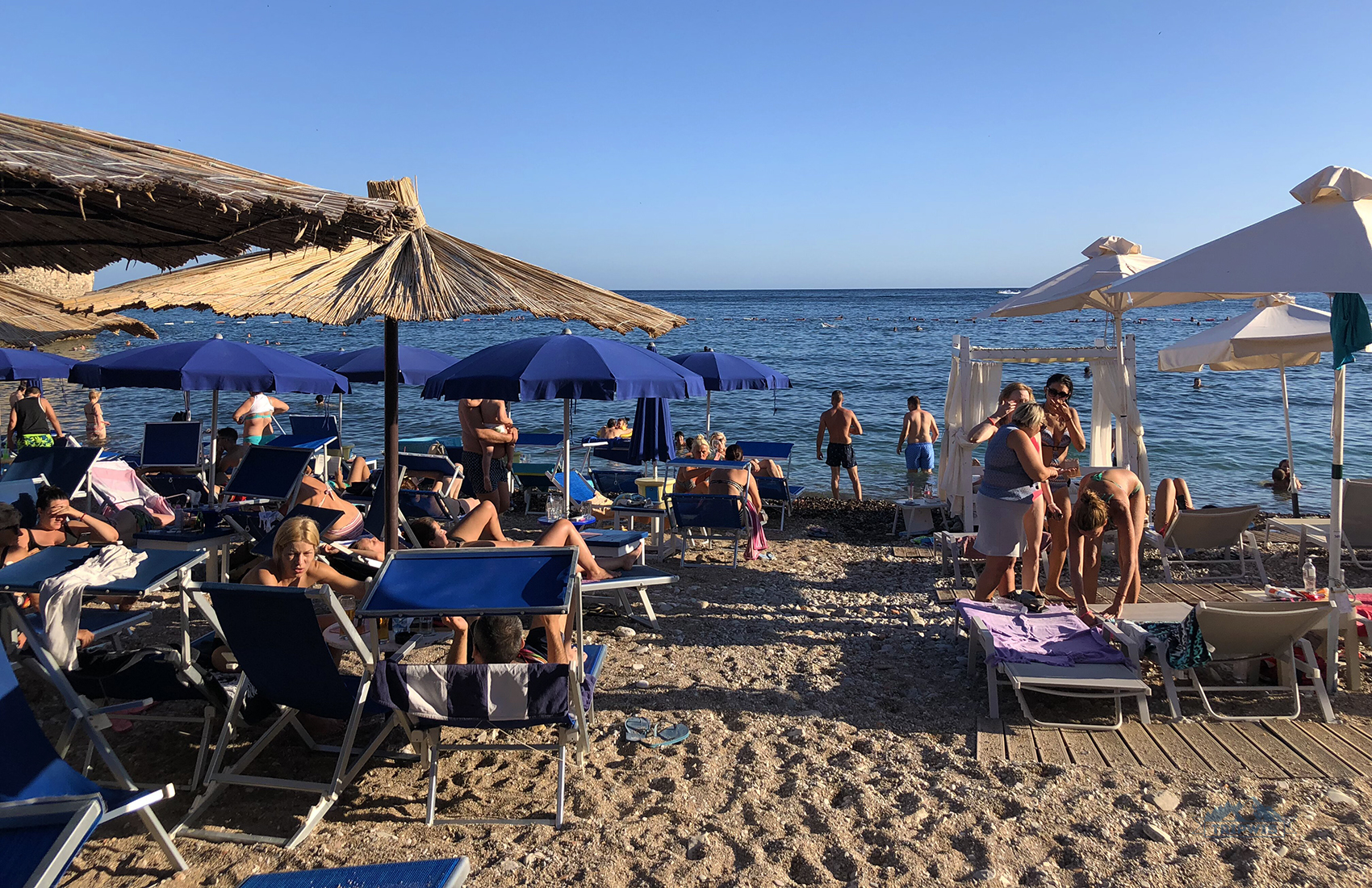
Now that you have an extensive list of activities and know what to do in Budva, it’s time to cover all the practical details of your trip.
While we definitely have no understanding of your budget and personal preferences, we’ll try to cover a range of points we know from personal experience. For a more general insight into trips to Montenegro, check out our guide here.
How to get to Budva from the airport?
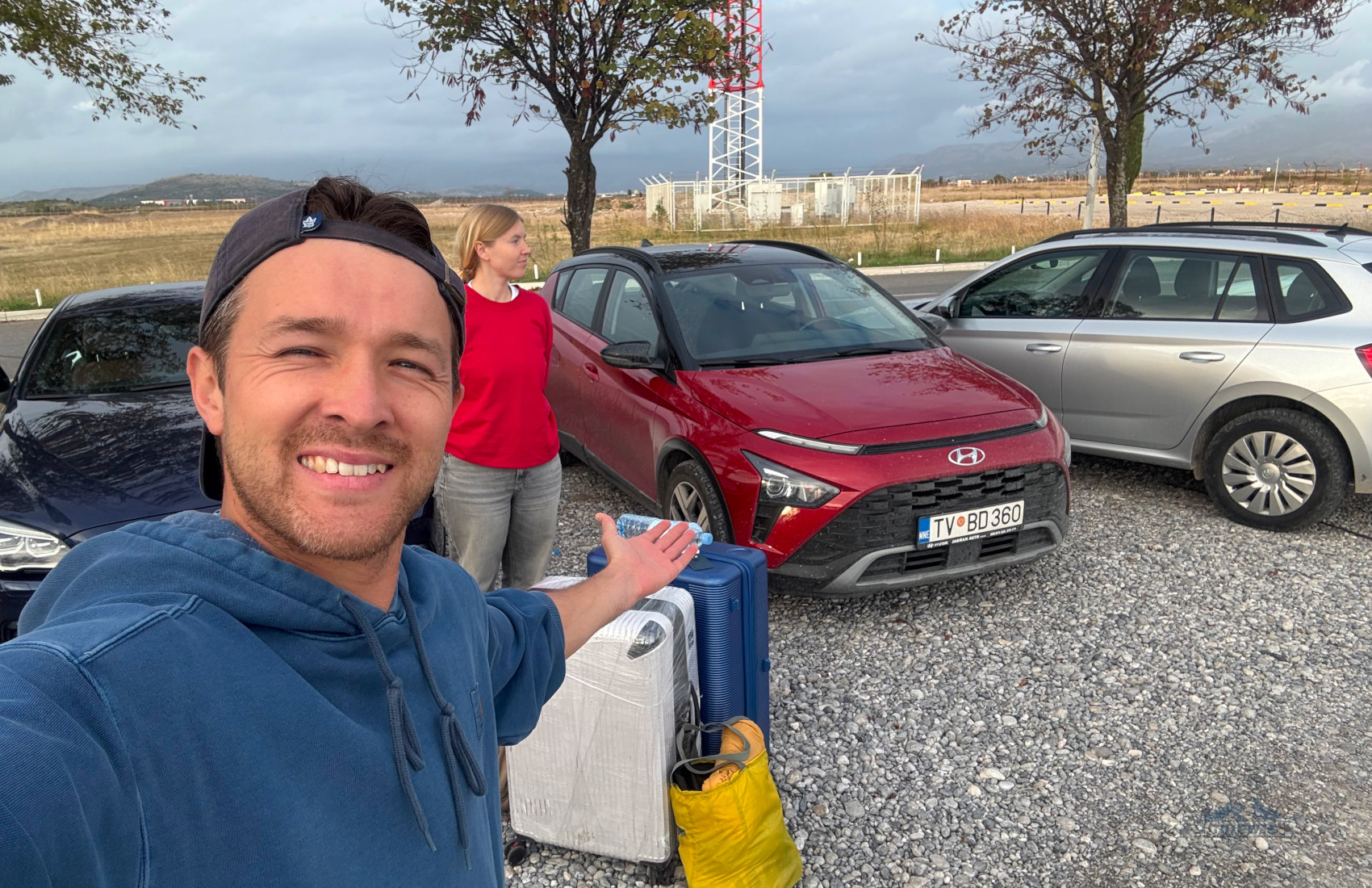
First of all, how do you even get to Budva? If you want to get to Budva from Tivat airport (which is the closest one), you’ve got two main options:
- Get a taxi. It’s €35 for a 30-minute-ride, and it’s the most common option, as there’s no bus that would go from the airport to the city;
- If you’re on a tight budget, get a ride from locals and other tourists. It’s always a good idea to check out one of the numerous Facebook pages for tourists and local expats in Montenegro. Some might be OK with giving you a ride at the price of a bus ticket, which is less than €10.
If you arrive to Podgorica, Montenegro’s capital, and you don’t rent a car on the spot, you’ve got just one option:
- Get a bus from Podgorica: It costs about €6-8 and the ride is about 1 hour long, though it’s the most convenient way to get to Budva.
You can go as far as hiring a private luxury transfer, with a fancy Mercedes minivan or some other exotic option. Of course, if you’re saving every cent possible, you can try to hitchhike (there’s a chance someone will give you a ride), but it’s not an option if you travel with your family.
Where to stay in Budva, Montenegro?
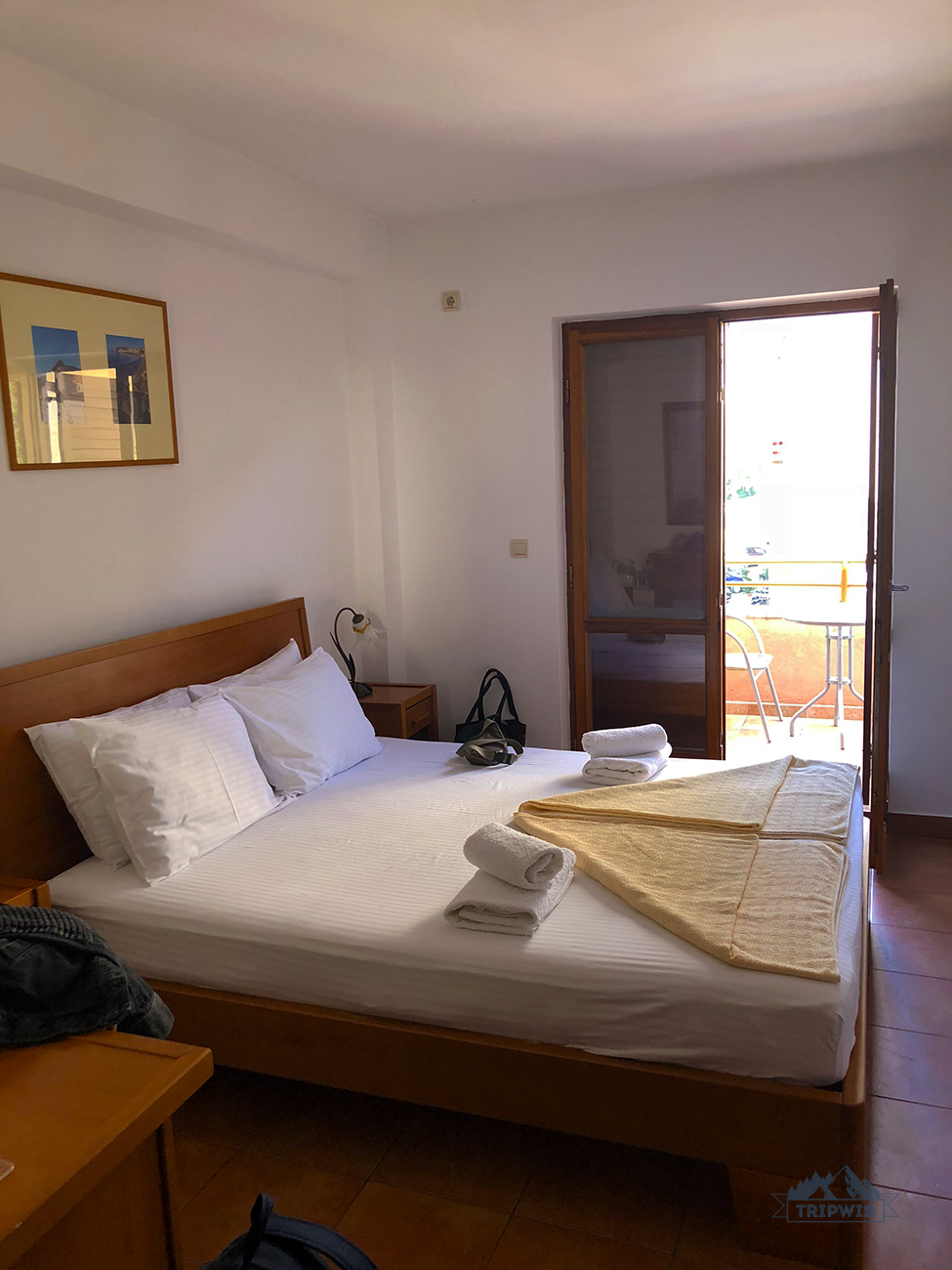 |
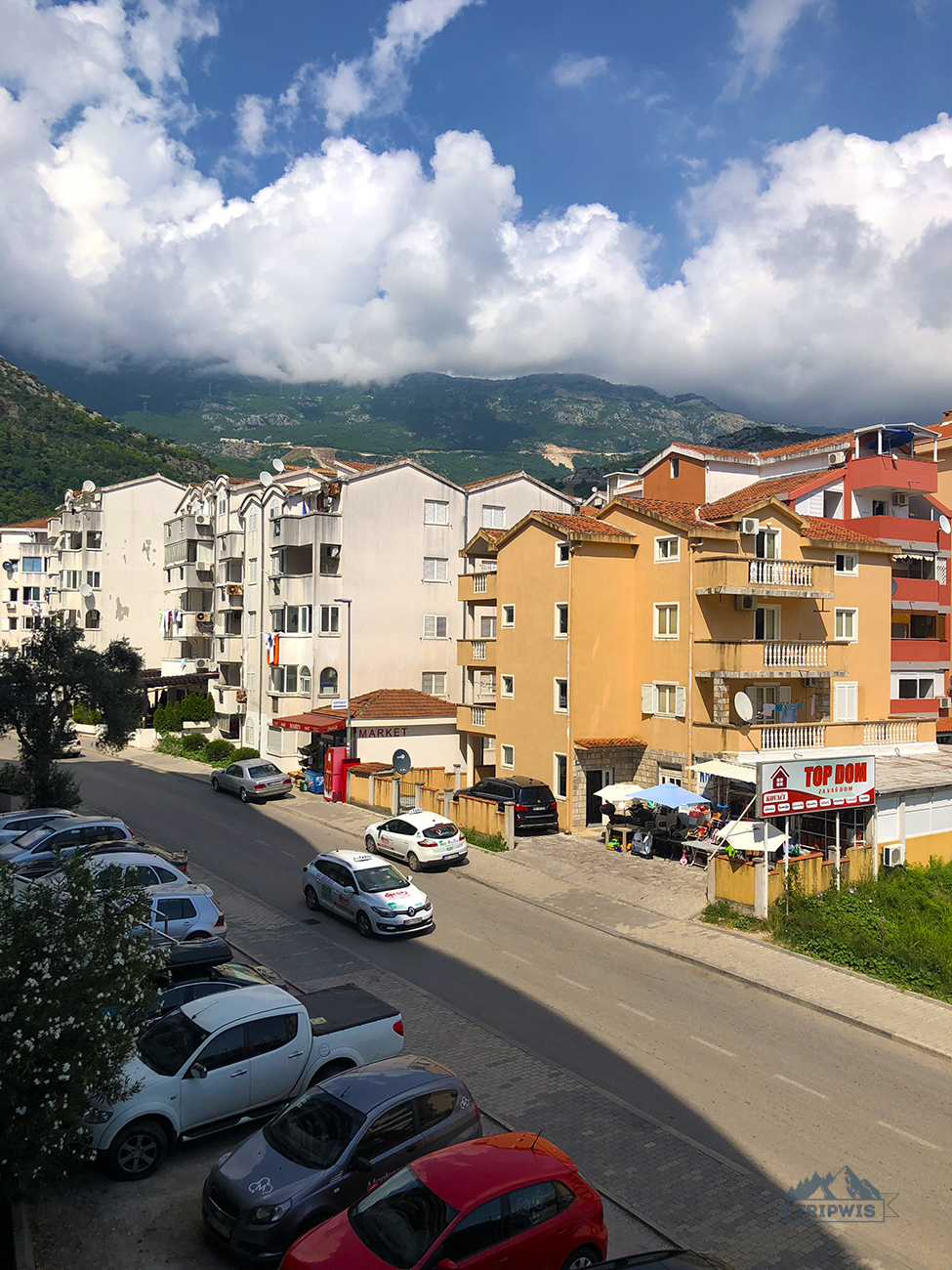 |
For some cities, the location plays a key role in your experience. However, if you don’t know where to stay in Budva, no need for worries: The exact address of your accommodation doesn’t really matter. There are fancier places on the outskirts of town and poorly maintained rooms right next to the beach.
Just keep in mind a few things:
- If you stay in Lazi, Podmaine, Babilonija districts — it’ll take about 15-20 minutes to get to the beach, where all the fun is;
- Dubovica, Rozino, Bijli Do are largely residential and commercial districts with high-rise buildings quite far from the historic part of town (there’s a pretty good chance there’ll be a construction site somewhere near your place);
- Budva city center area is not where the Old Town is: It’s where all the municipal institutions are, so nothing truly special happens here;
- Everything above the Jadranski put costs a little less than anything below it;
- If you stay in Vidikovac, be prepared to climb steep stairways to get back to your place from the beach or from the Old Town (so not really recommended unless you have a car).
In general, the accommodation landscape of Budva is 80% apartments and 19% hotels, with maybe a few hostels making up the final 1%.
Luxury accommodations in Budva
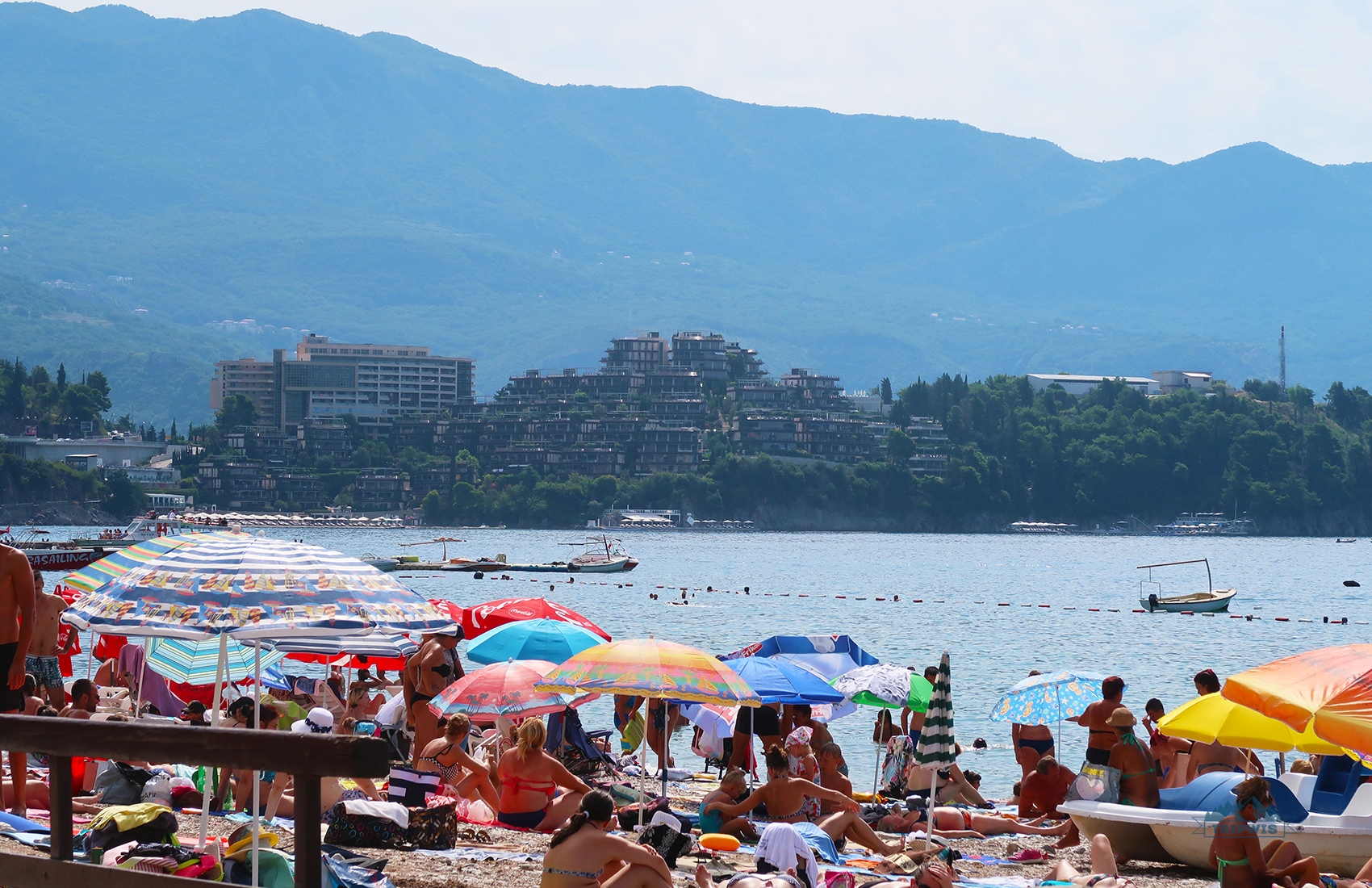
If you’re reading this in the back seat of a Rolls Royce or a Maybach, probably the only option you have in Budva is Dukley Gardens (from €700 a night). It’s a luxurious complex of villas, available for long-term and short-term rent.
The prices are through the roof, but hey — they have golf carts to bring you from your yacht, parked in its own private marina, to a posh restaurant nearby. Just a side note: Of all things to do in Budva, quite few are actually as luxurious as this place.
4* Majestic Hotel is a more realistic option. At a price of €200+ per night, it’s definitely not the cheapest, though it’s a properly maintained hotel. It’s right next to the Old Town, it has a nice restaurant (the Hemingway we’ve covered before), and is, generally, a good place with European standards of service.
If you want a luxury apartment, try anything in the Tre Canne complex, like Apartments Menuet. The complex has its own small territory with a few cafes and stores, and the views from the Hedone restaurant on the roof are just great.
Reasonably priced accommodations in Budva
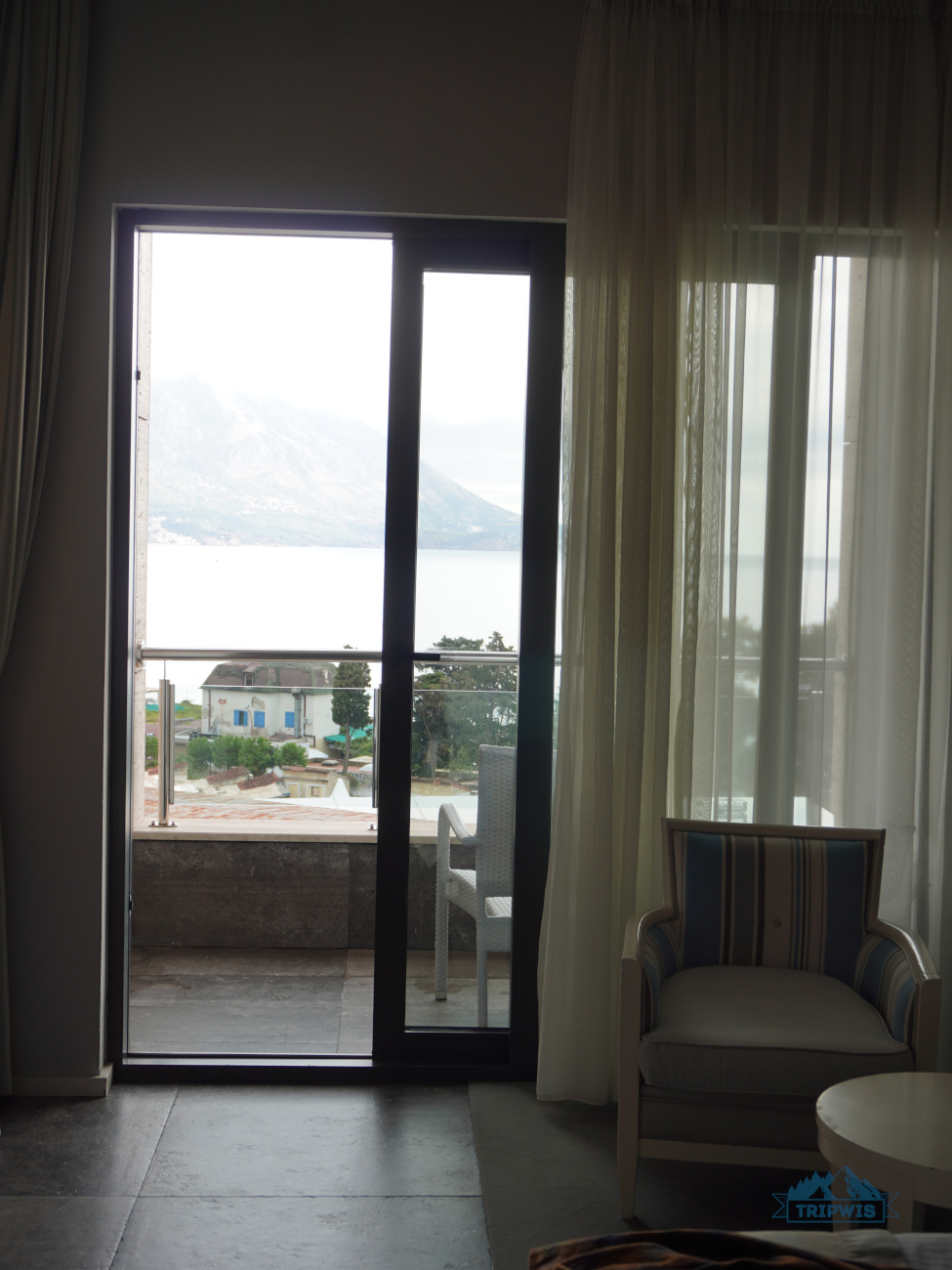 |
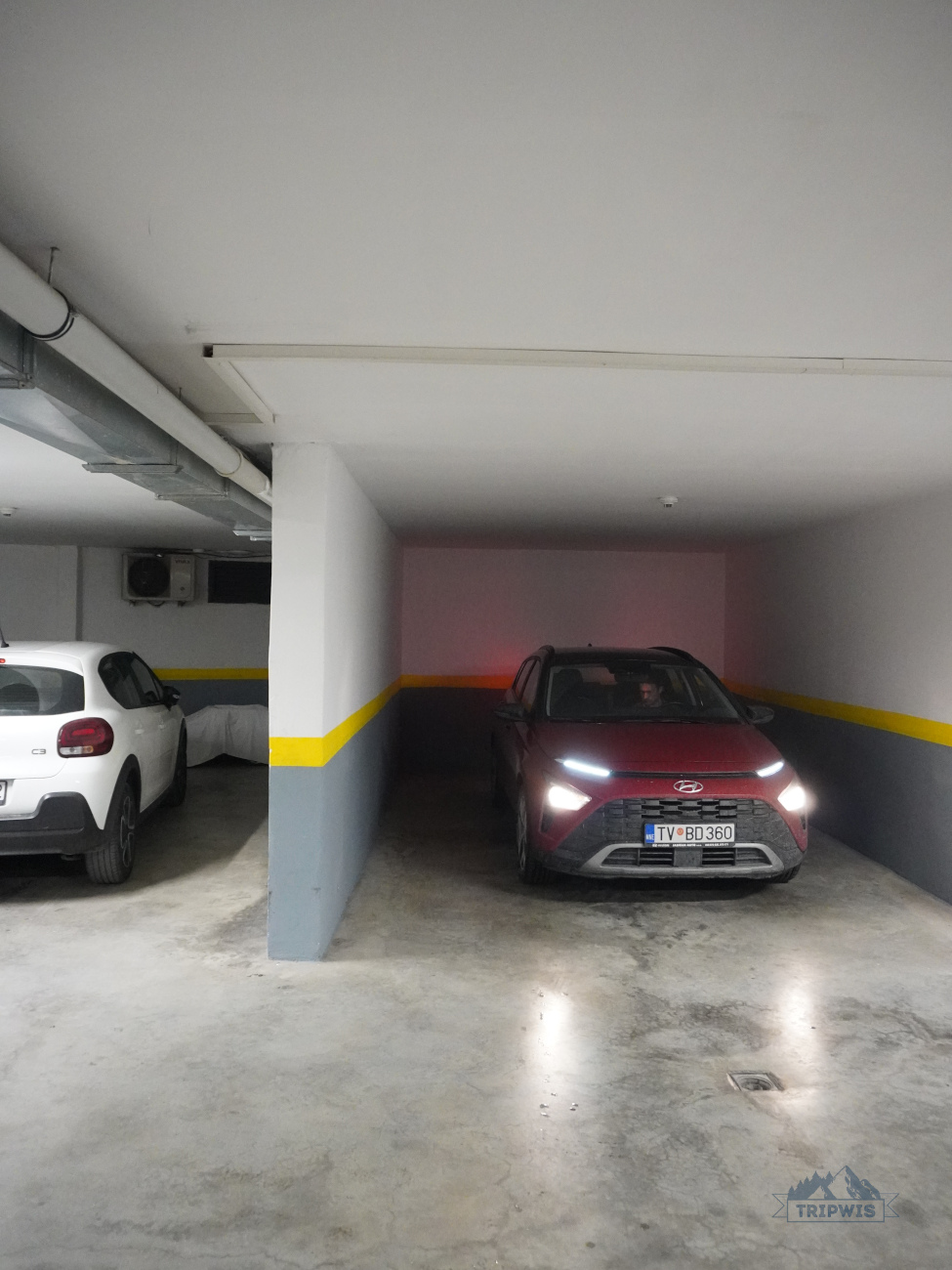 |
If you want your stay in Budva to be decent and risk-free, but you’re not really in the market for luxury apartments, we’ve got some good news: The absolute majority of hotels and flats here are reasonably priced. You can find accommodation for €80-150 per night during high season easily if you book in advance.
For the authentic vibe, stay somewhere in the Old Town: Beatrix Suites (from €50 per night) or Apartments Trifunovic (from €160 per night) are two fairly popular options (to the point that you really, really need to book them in advance).
Alternatively, you can stay at one of the villas in the Gospostina area. It’s a few minutes away from both the beach and the Old Town, and prices go as low as €75. Our friends stayed at Apia Residence (from €100 a night) and we had a chance to see what’s inside: While it’s by no means luxurious, it’s a nice small guest house with rather fresh and well-furnished rooms.
Where to stay in Budva on a budget
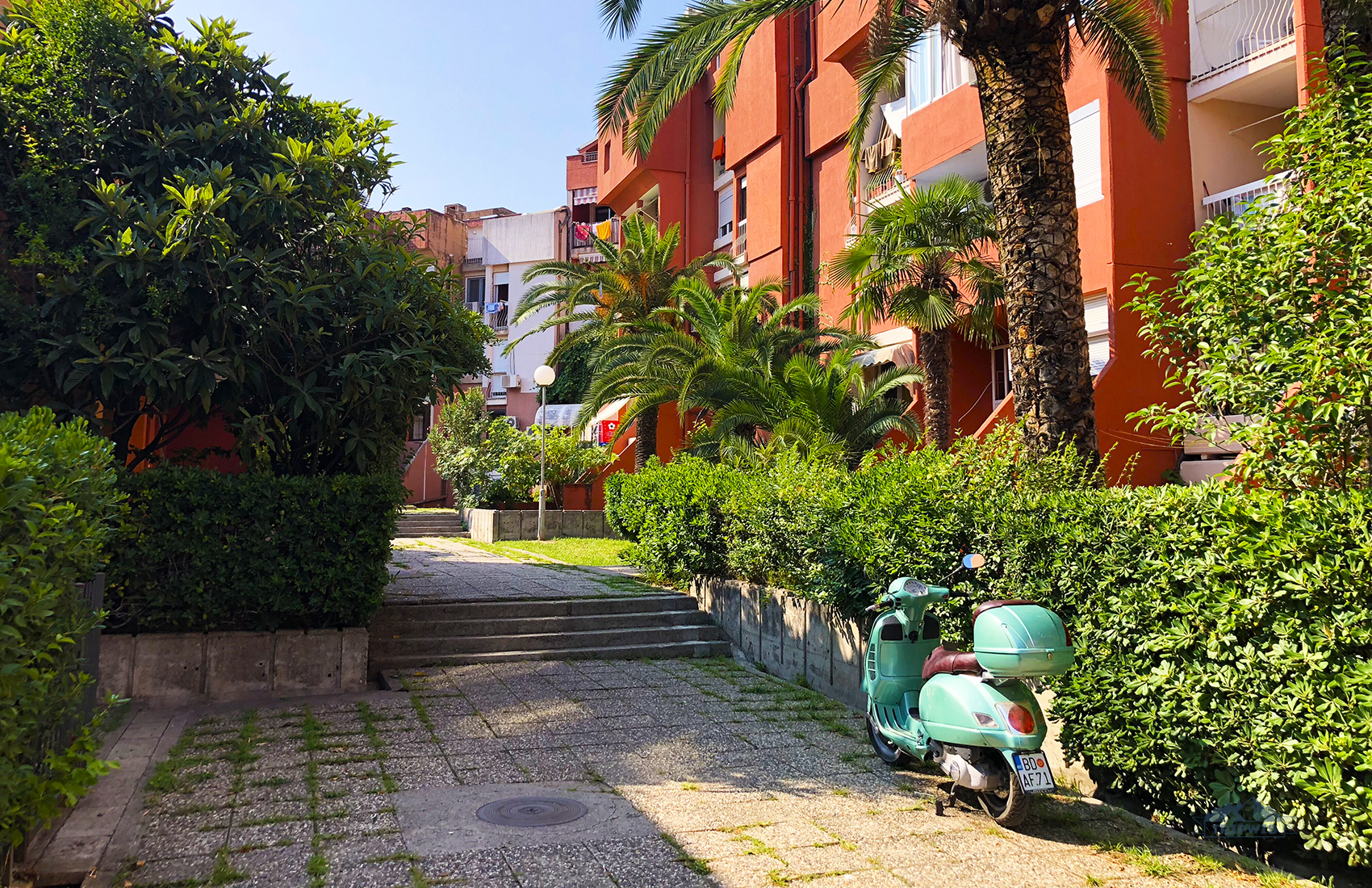
Here’re some bad news: Budva is not quite budget-friendly when it comes to accommodations, especially during the summer. You can try one of the few hostels, with Freedom Hostel (from €30 a night) in the Old Town being your best option. However, even hostels are not really cheap here: During high season months, you’ll pay about €60 for a bed in a shared room.
A much better alternative to hostels in the beachfront part of the city would be staying a bit further away from the places of interest. For example, you can try Villa Lazy Hill in the Lazi district. It’s far from the beach (20–35 minute walk), but you get your own room and your own bathroom for €85, with a cozy terrace and partial sea view.
Is Budva safe?
In short — yes, it’s safe. It’s okay even if it’s late at night, even alone, even if you’re a young woman, probably even if you’re a child (though we’d still recommend children sleep at night rather than haunt the poorly lit streets).
Crime is basically non-existent in Budva. Well, there IS crime, but it’s more of an organized thing, with clans controlling spheres of trade. This type of crime poses no danger to an average tourist (unless you’re from Interpol and you’re here on a work trip).
As far as violence, theft, all other sorts of “your money or your life” things go, there’s no such thing. At least it’s so rare that we’ve never heard of it, not a single time, in our 1,5 years here.
The ONLY thing you have to be on guard for is crime that comes here just as most tourists: For the season. During summer months, you’ll see more beggars on the streets, and hear more about pickpocketing. It’s a high season-only thing, but it’s always best to keep an eye on your wallet, phone, and other valuable belongings.
Rent a car in Budva: it’s a MUST
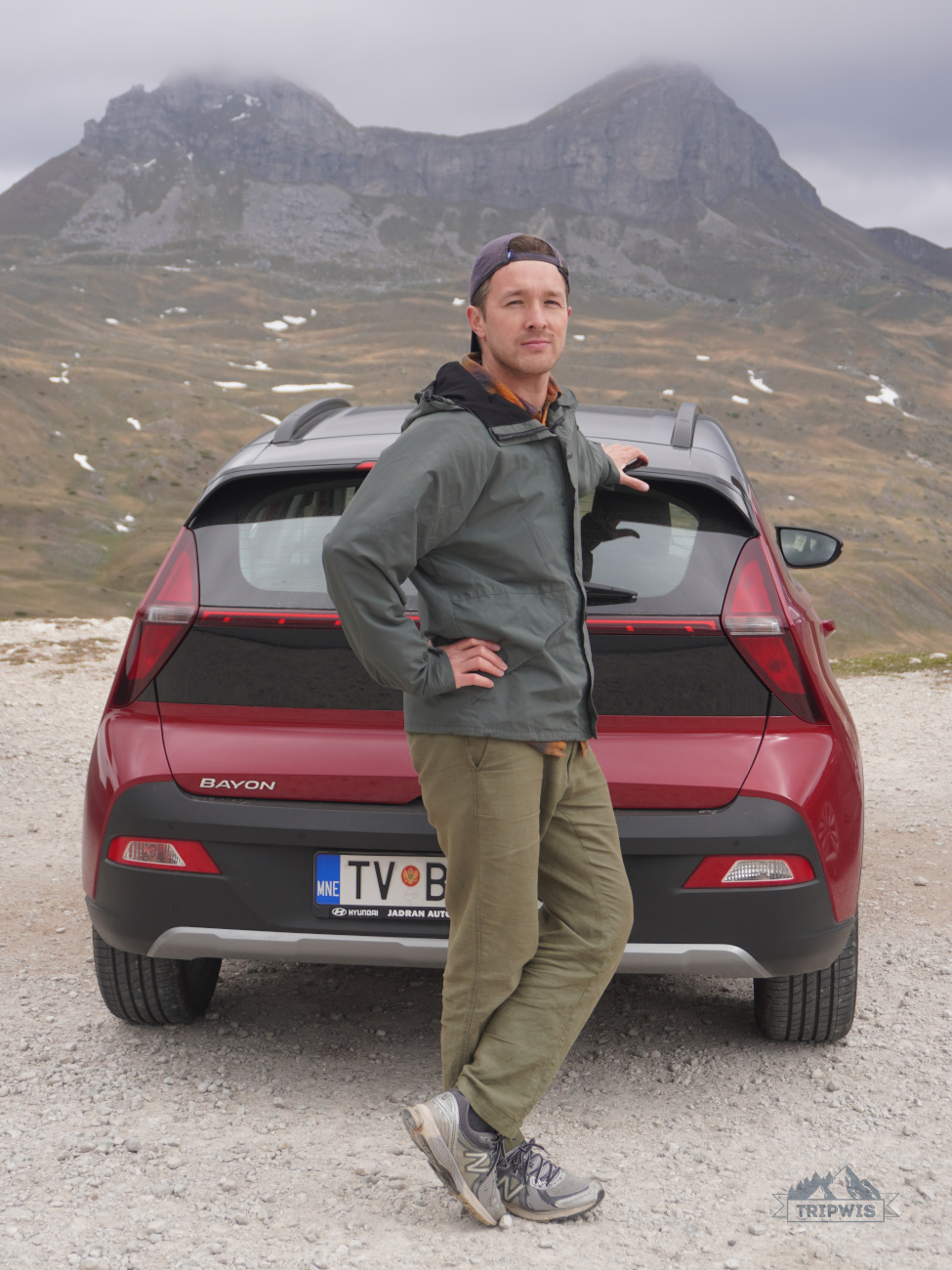 |
 |
As you could notice from the guide, renting a car in Budva IS a good idea if you want to explore all the nearby locations. Public transport is limited, biking up the serpentines is not an option, and taxis are expensive as hell.
For our best day trips from Budva (to Durmitor, for example), we’ve always rented a compact or a small SUV from Localrent — a popular aggregator for local small rental companies. Of all times that we’ve had to use it, we didn’t encounter a single issue, so it’s a safe bet.
Mind the parking fees
If you want to rent a car in Budva, it’s a good idea to look for an accommodation with private parking included in the price of your stay. Street parking is chaotic, paid parking lots are €1,5–€2,5 per hour, and tow trucks are always on the hunt for their next victim.
There are two main parking lots in Budva: Both are located near the Old Town and the Avala hotel. Even if you’re OK with paying the hourly fee, you might just not find a spot: Both are rather small and usually packed to the brim during high season.
Best time to visit Budva, Montenegro
The best time to visit Budva is mid-season; March — April and September — October have the best price-to-comfort ratio. If you come in October or in September, you’ll get more rainy days, but it’s not as bad as some guides say (and definitely more comfortable than it is in May, with weeks upon weeks of heat).
Keep in mind, you can get a taste of it, but you won’t see it all in 3 days. You need, at the very least, a week, maybe two weeks in Budva.
Final thoughts
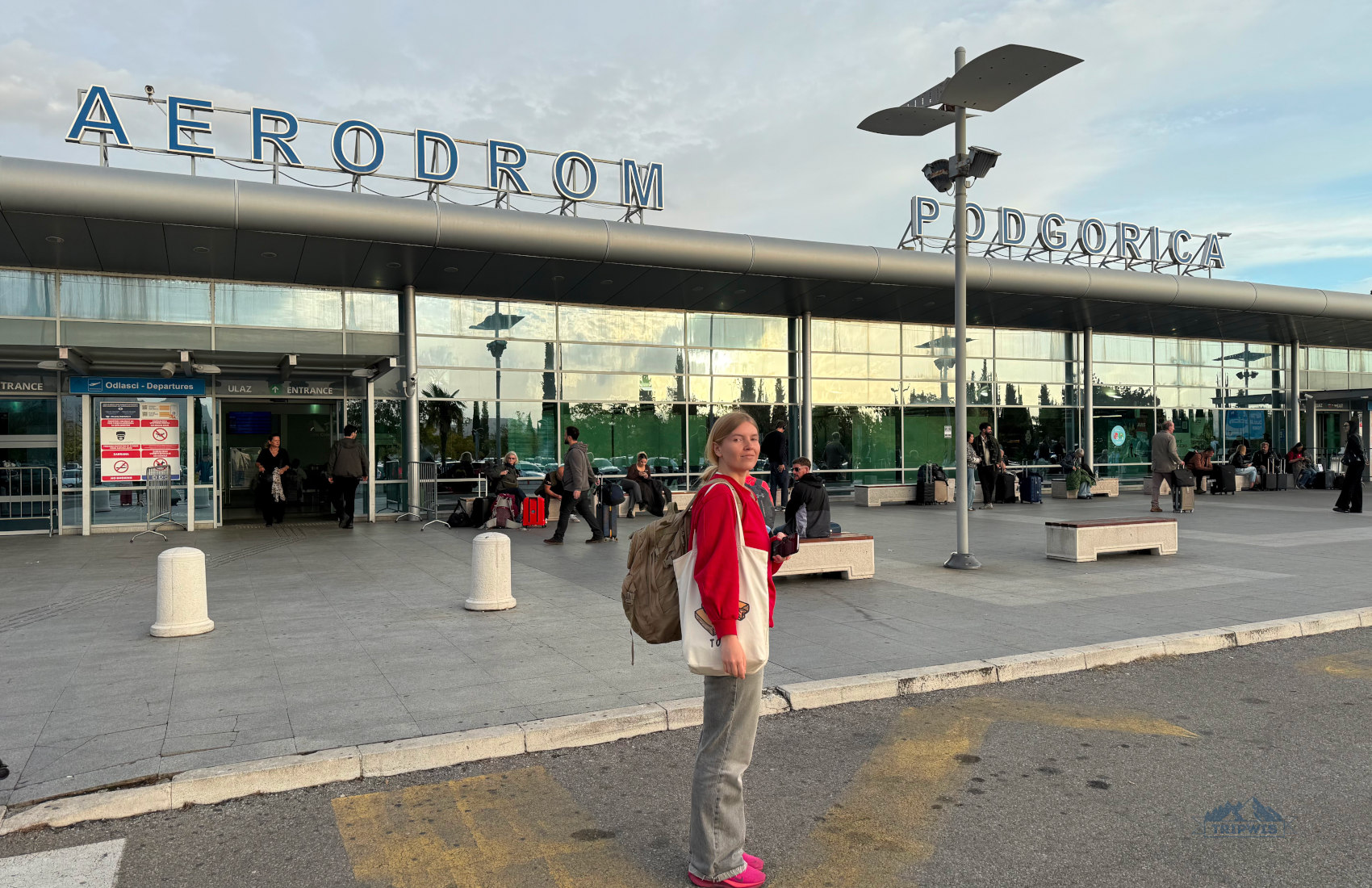
Still on the fence about your trip and wondering is Budva worth visiting or not? The final decision is, of course, up to you, but speaking from personal experience — Budva and the whole coastal area around it are definitely worth a trip.
While it’s not quite the most technologically advanced place, not the liveliest megapolis (with a population of just about 30,000), and not the most exotic location (compared, say, to a jungle safari in Tanzania), it’s still a great destination. Especially if you go at the right time.
So, here’s everything you need to know before visiting Montenegro and its tourist capital! If you’re into calm, relaxed type of vacations, with a touch of history and easy access to pristine nature — Budva is just the place to go.
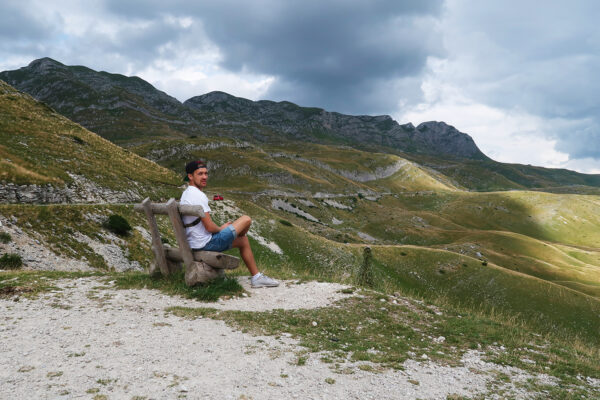

We are in Budva right now and this was quite Helpful.
Thank you for making our minds up.
After reading this we have booked a week in may at slovenska lux in Budva.
Looking forward to it .😁